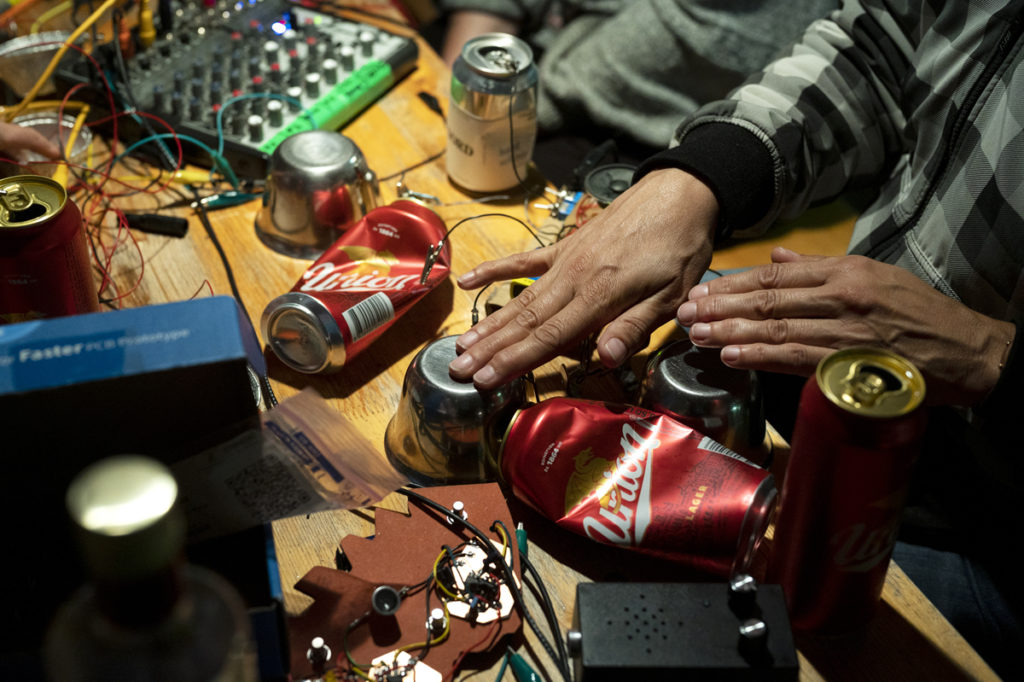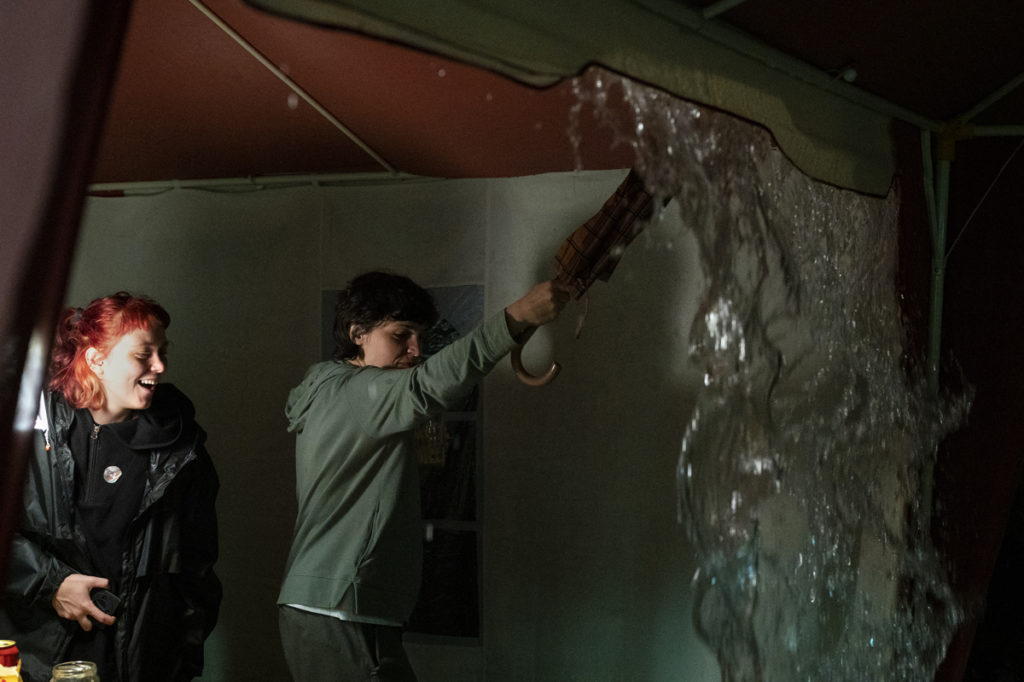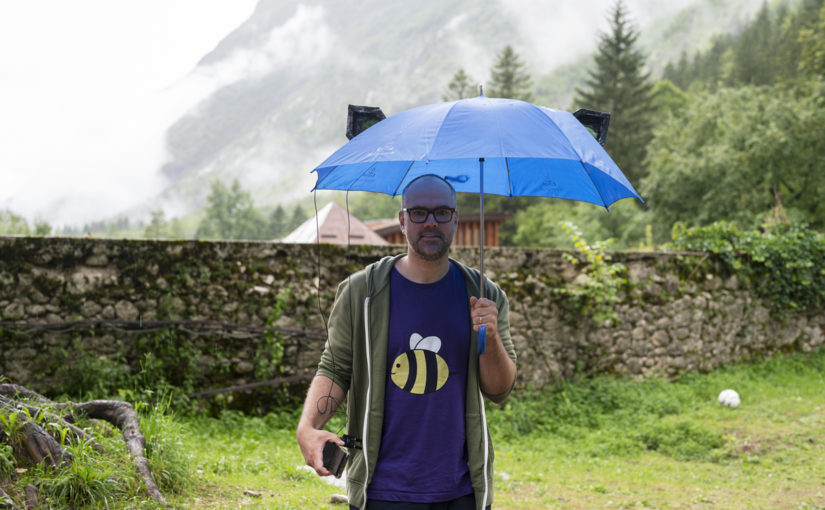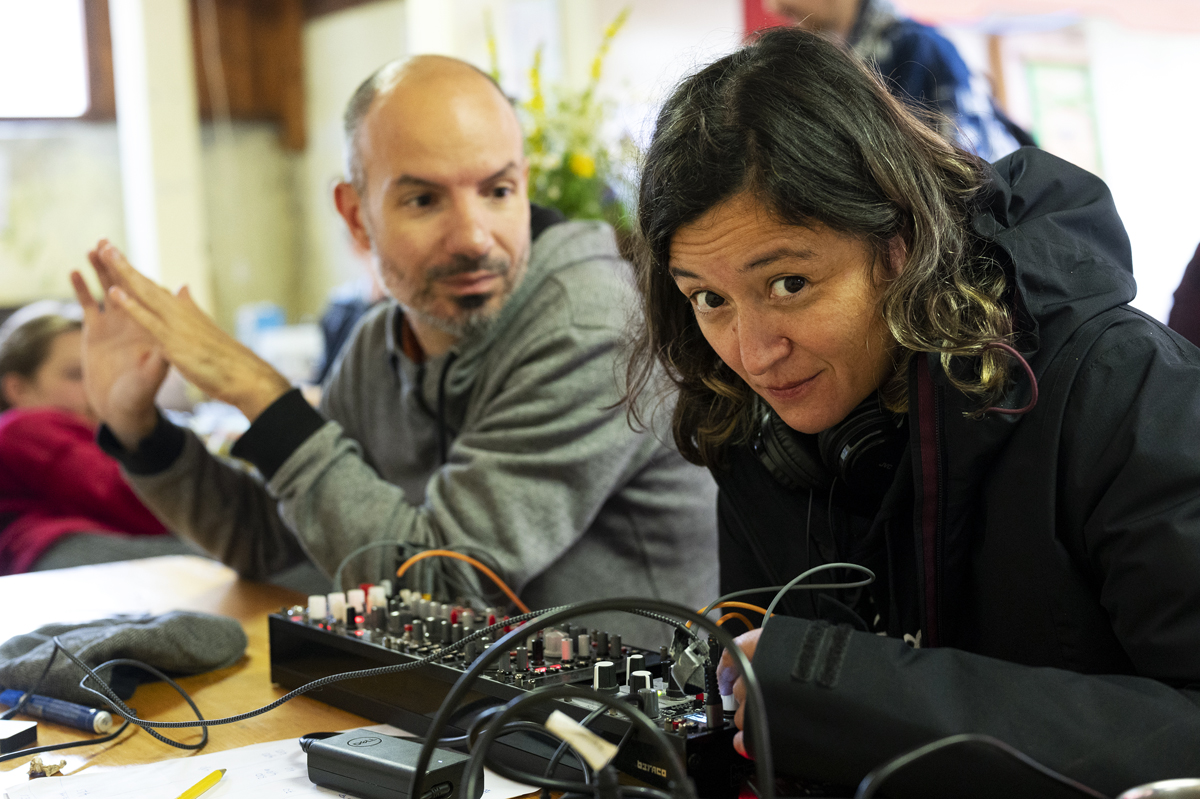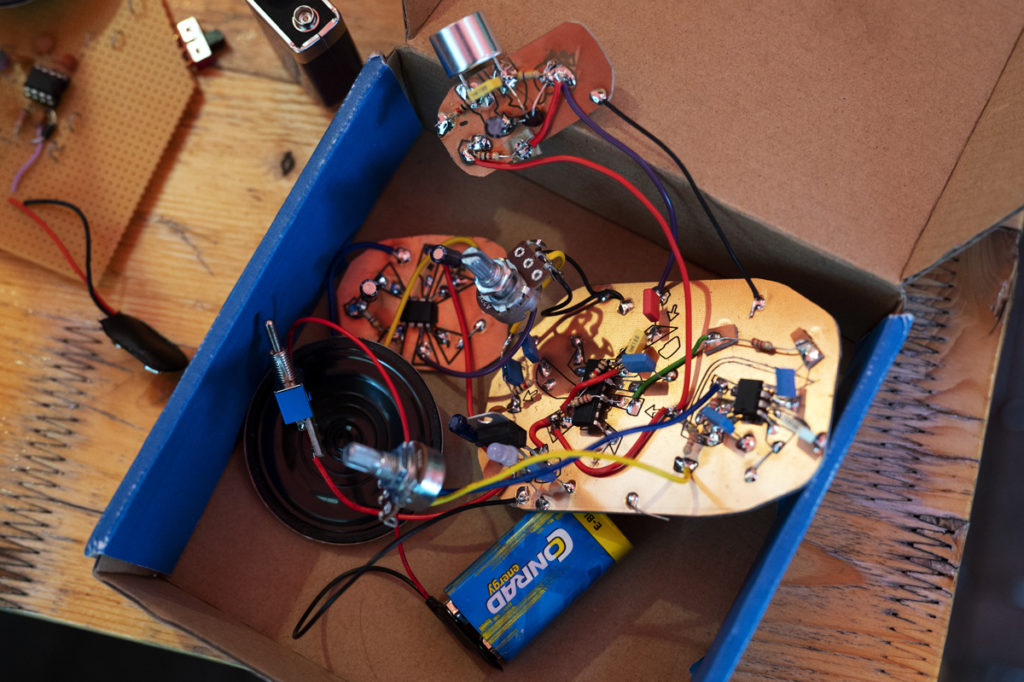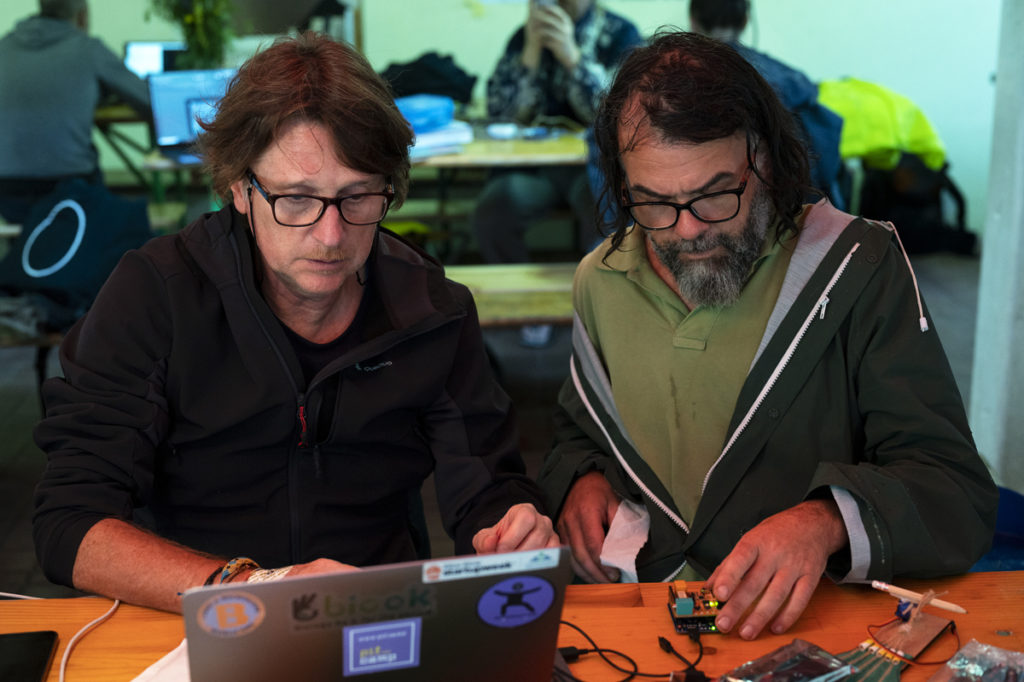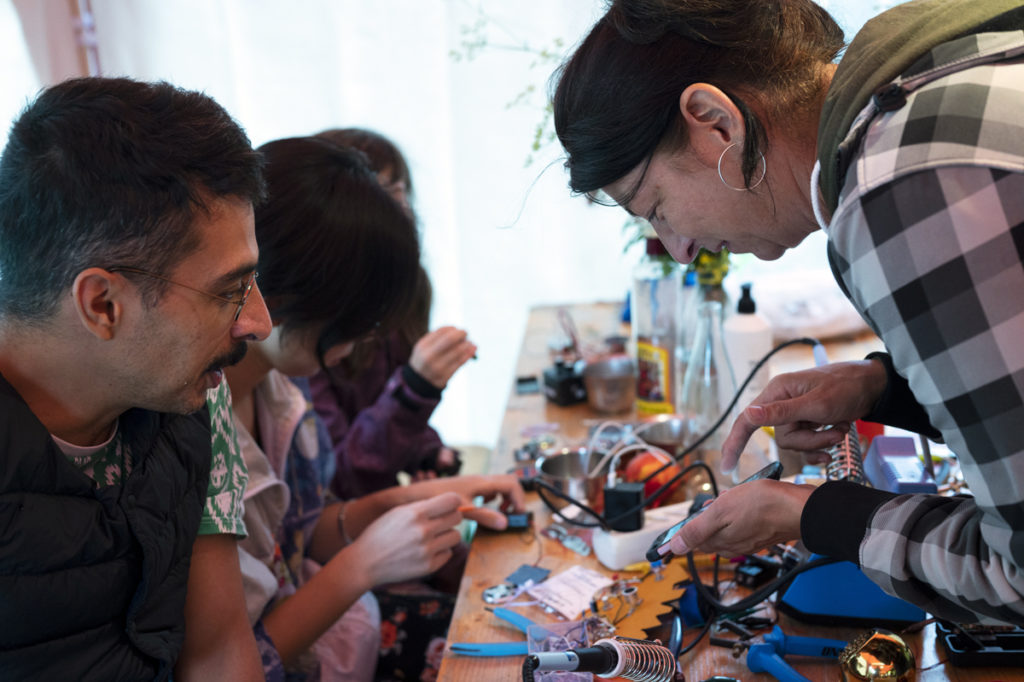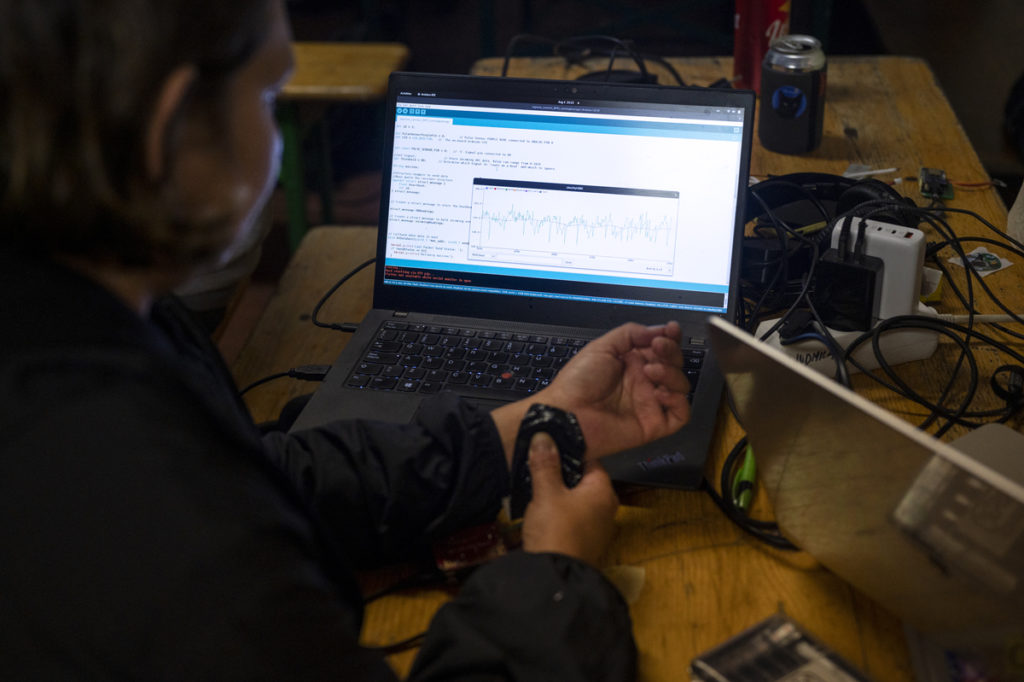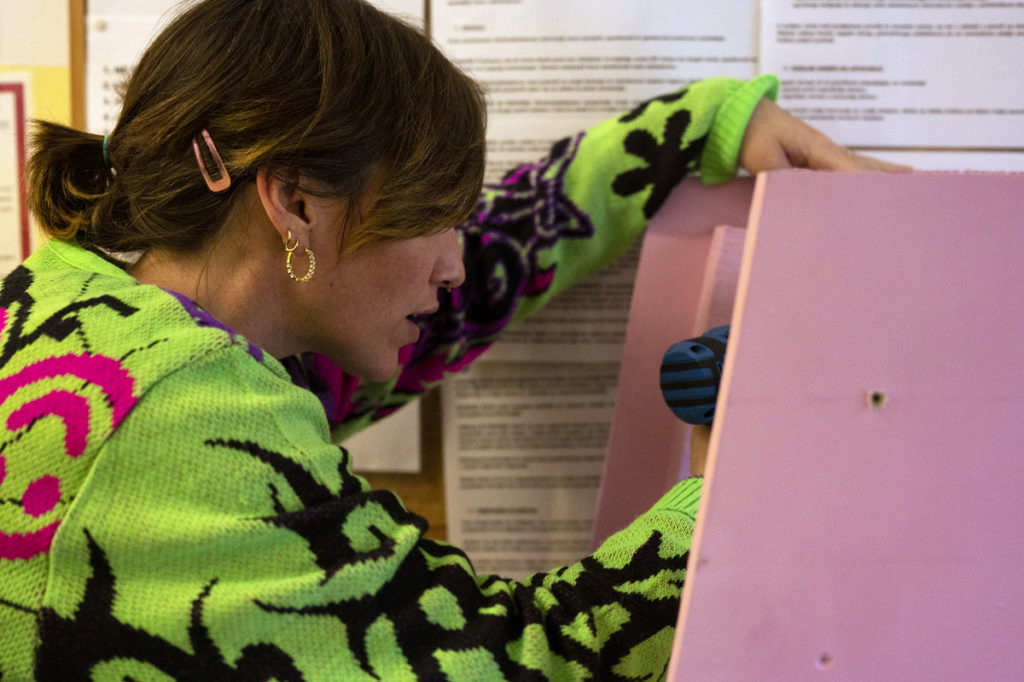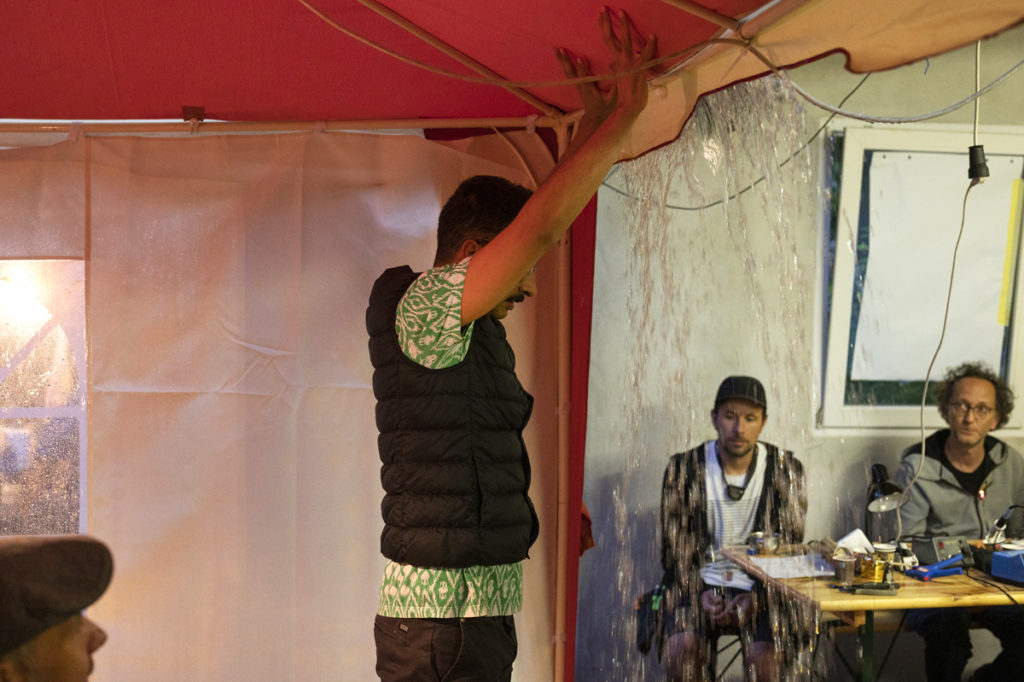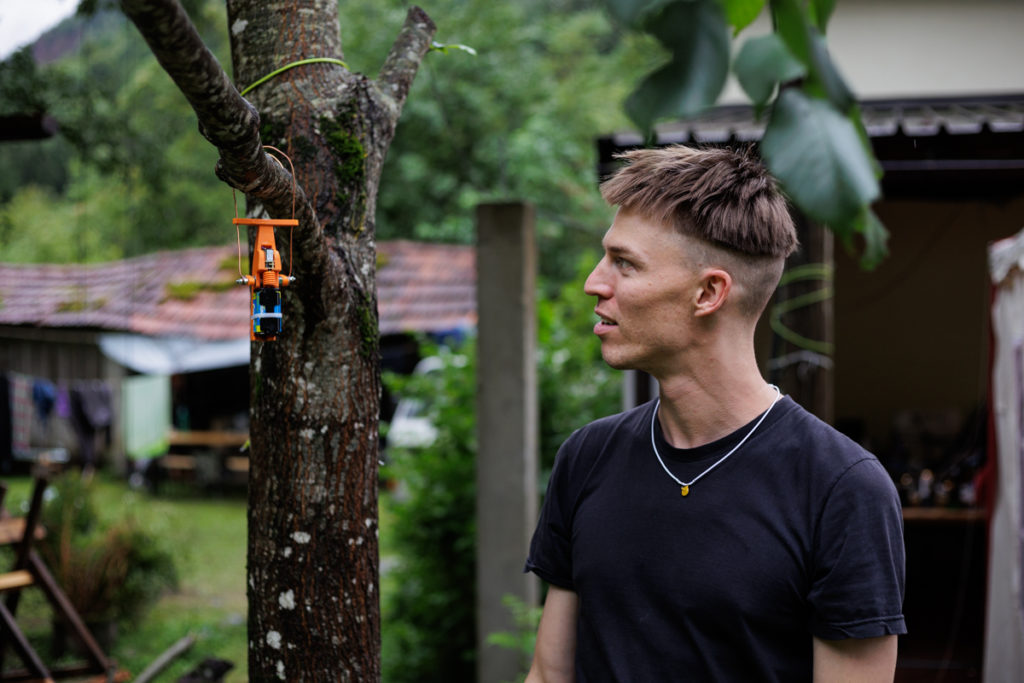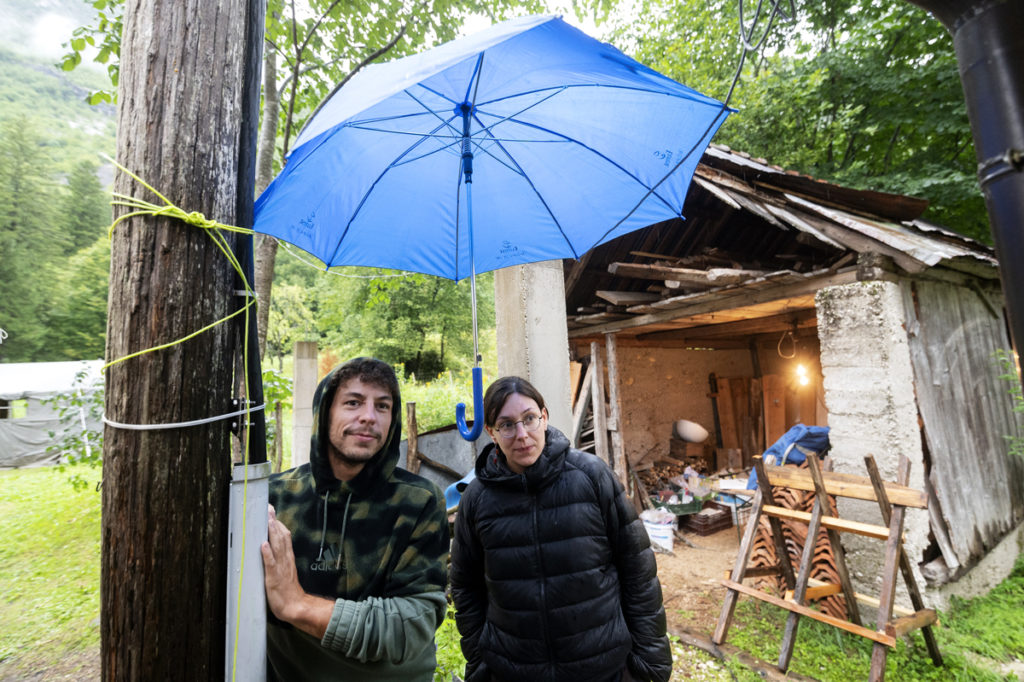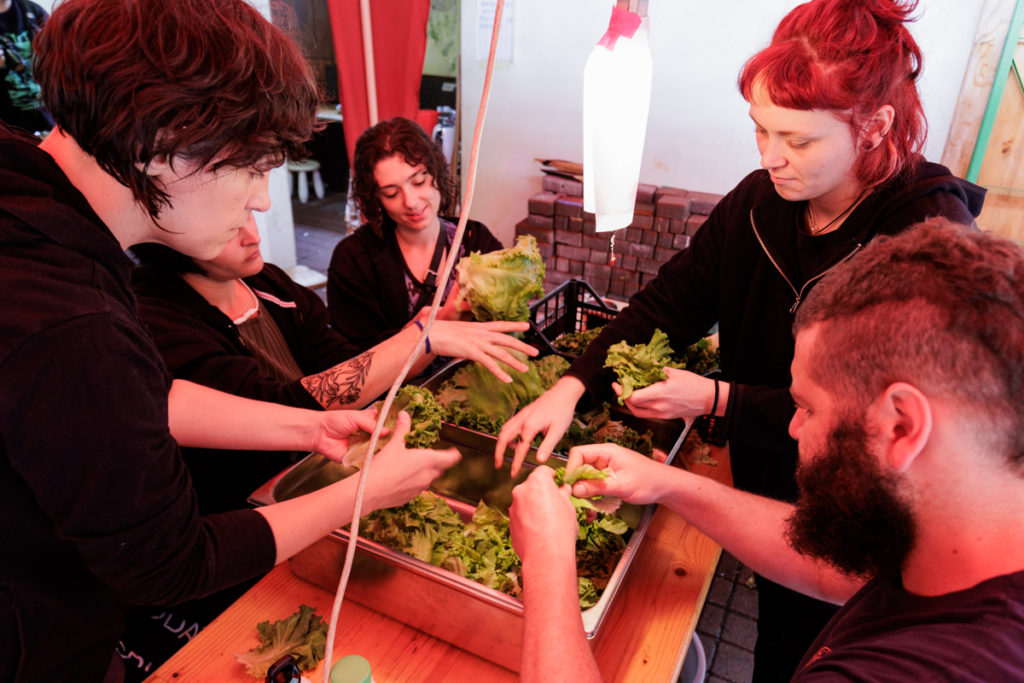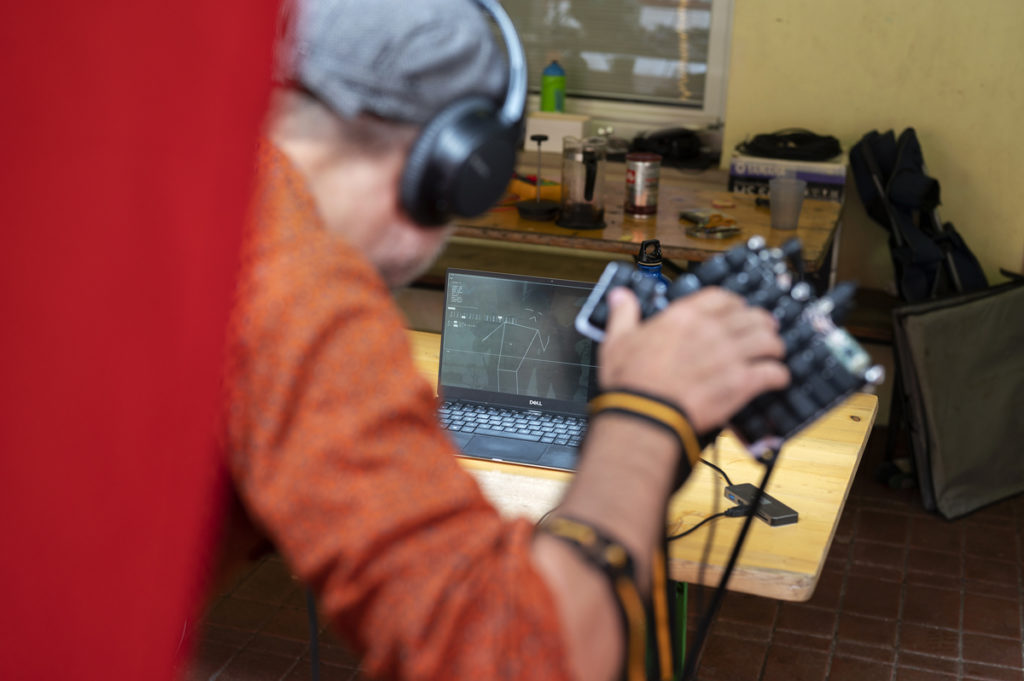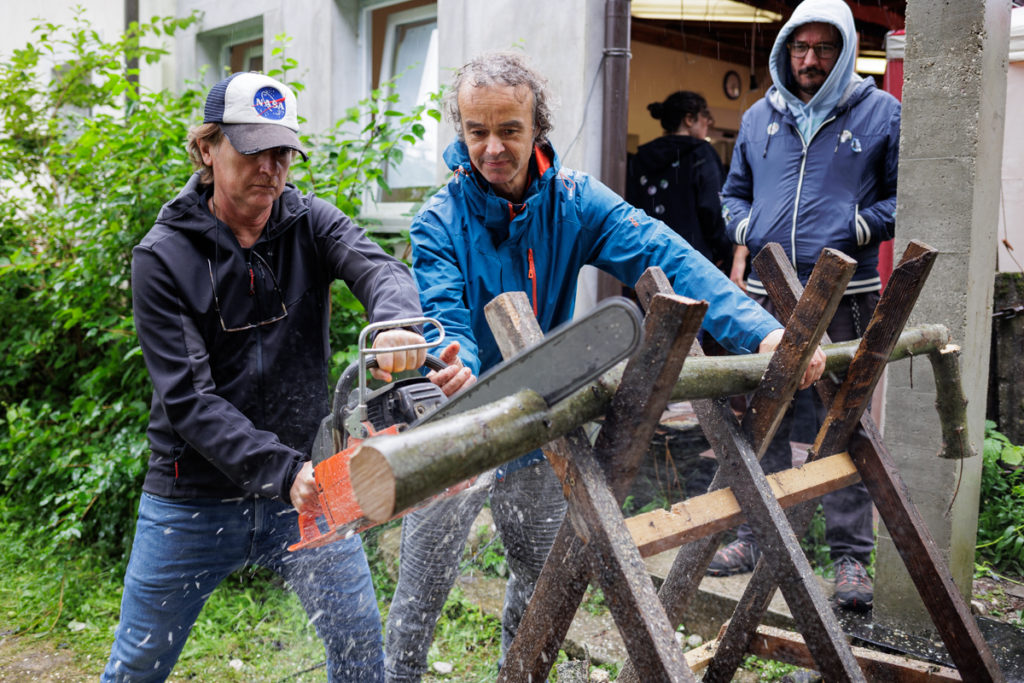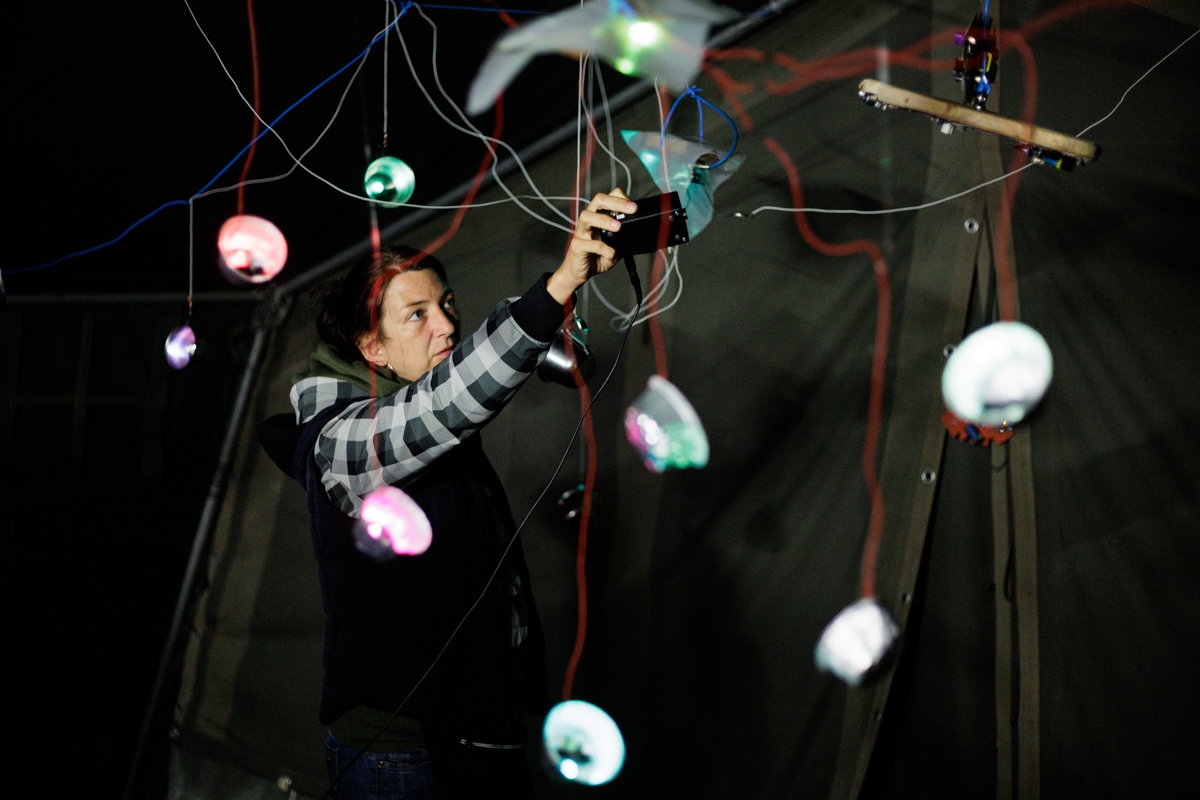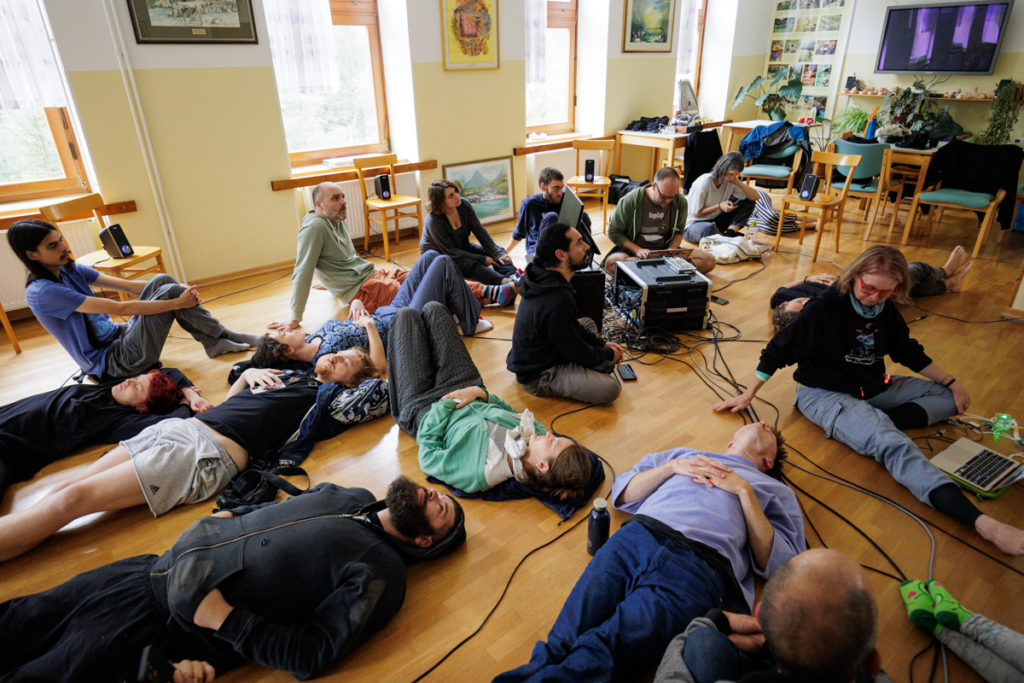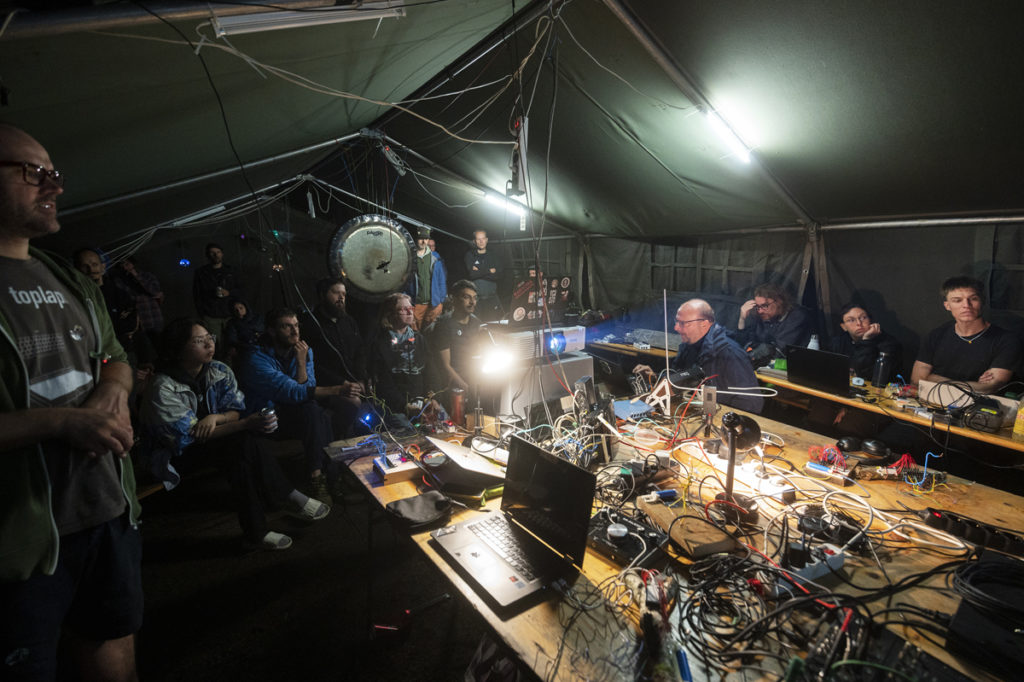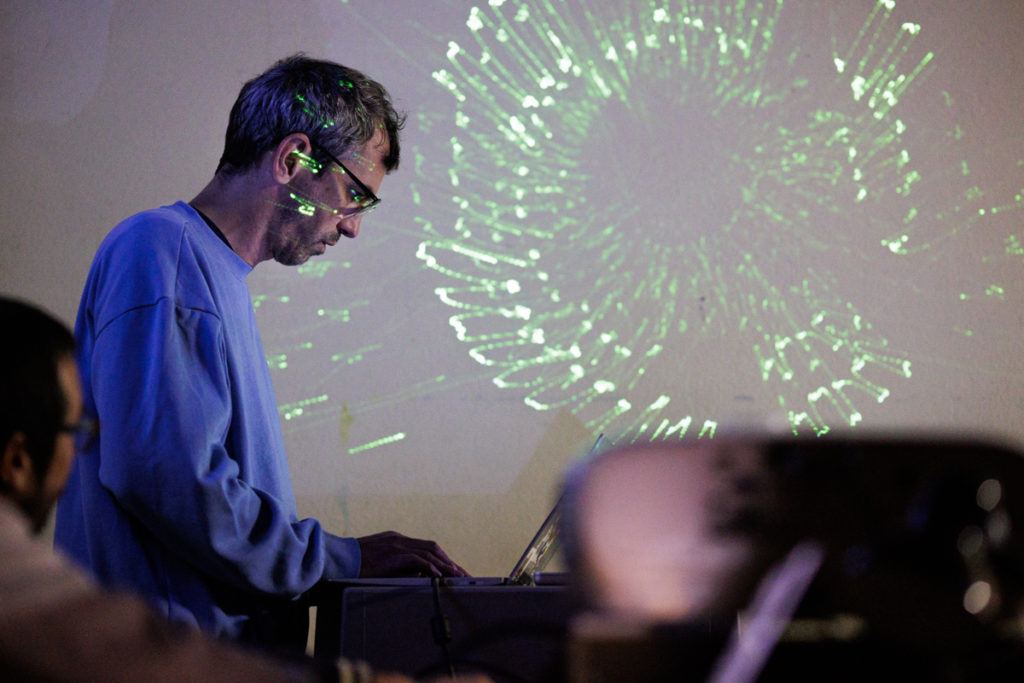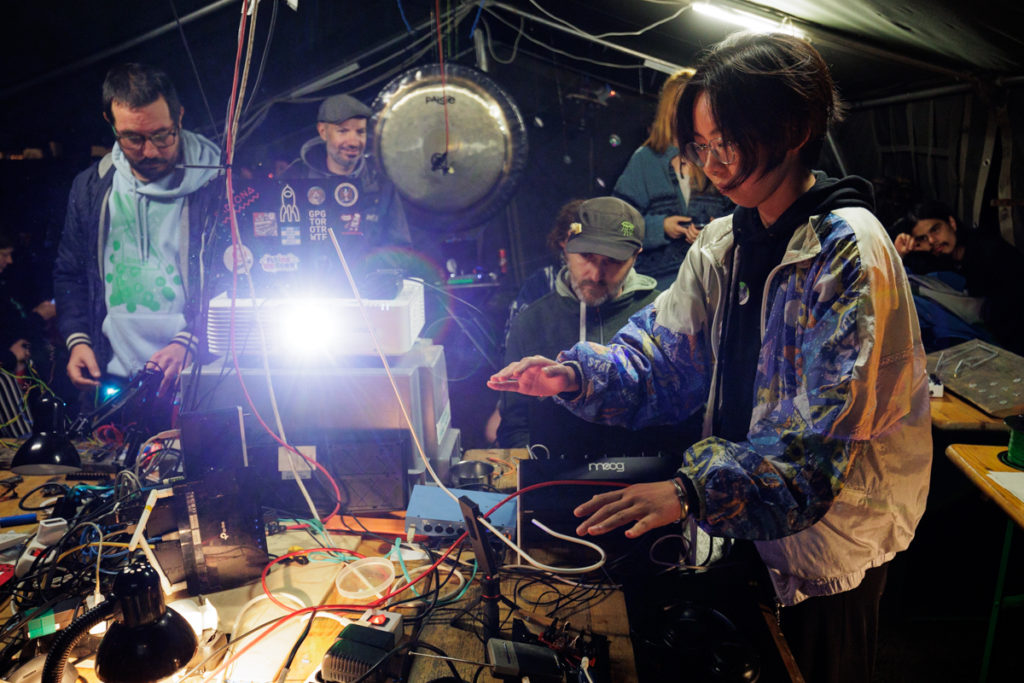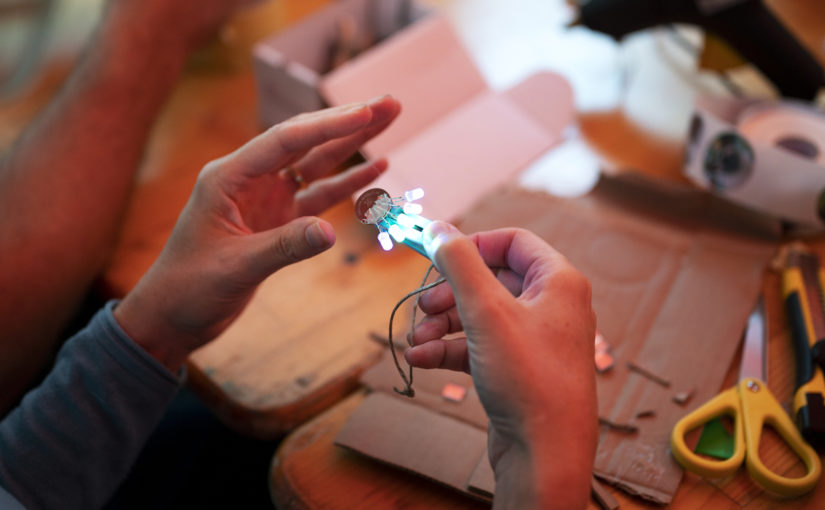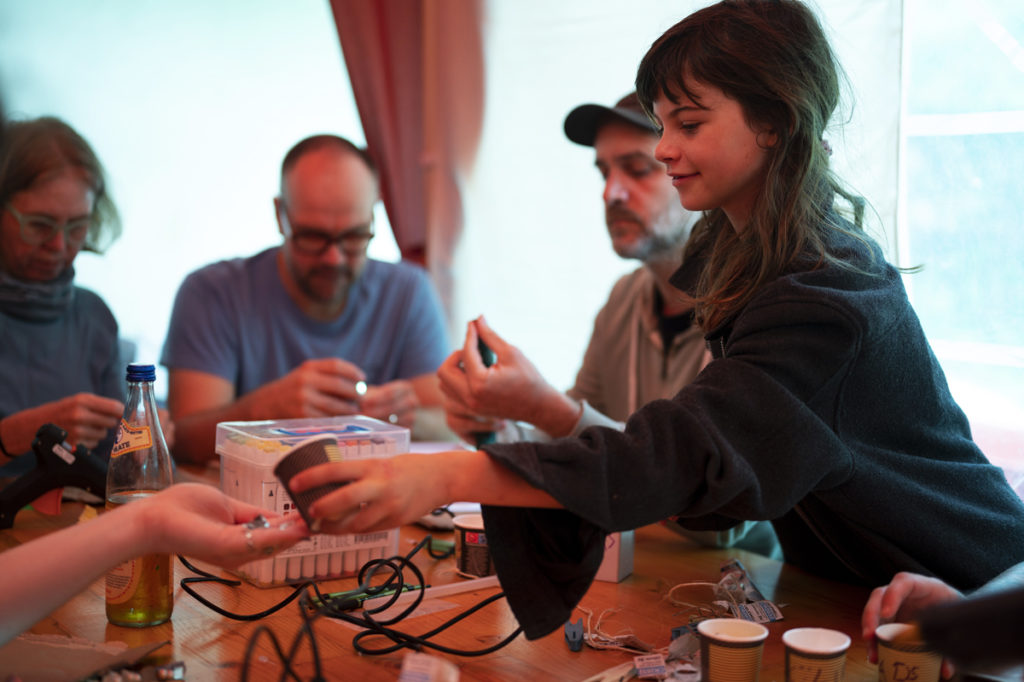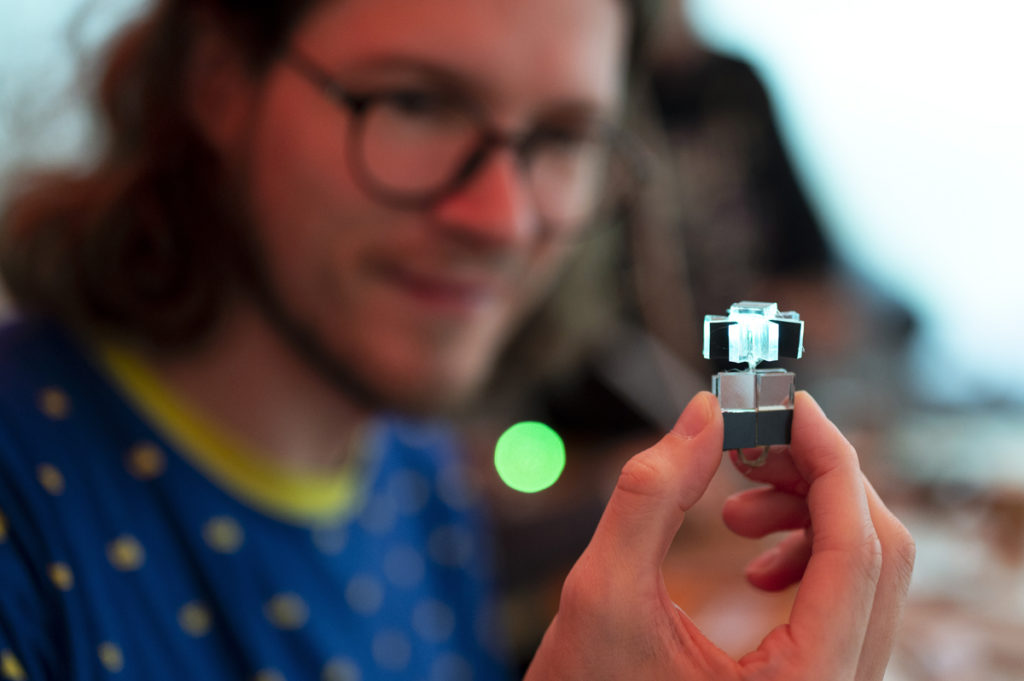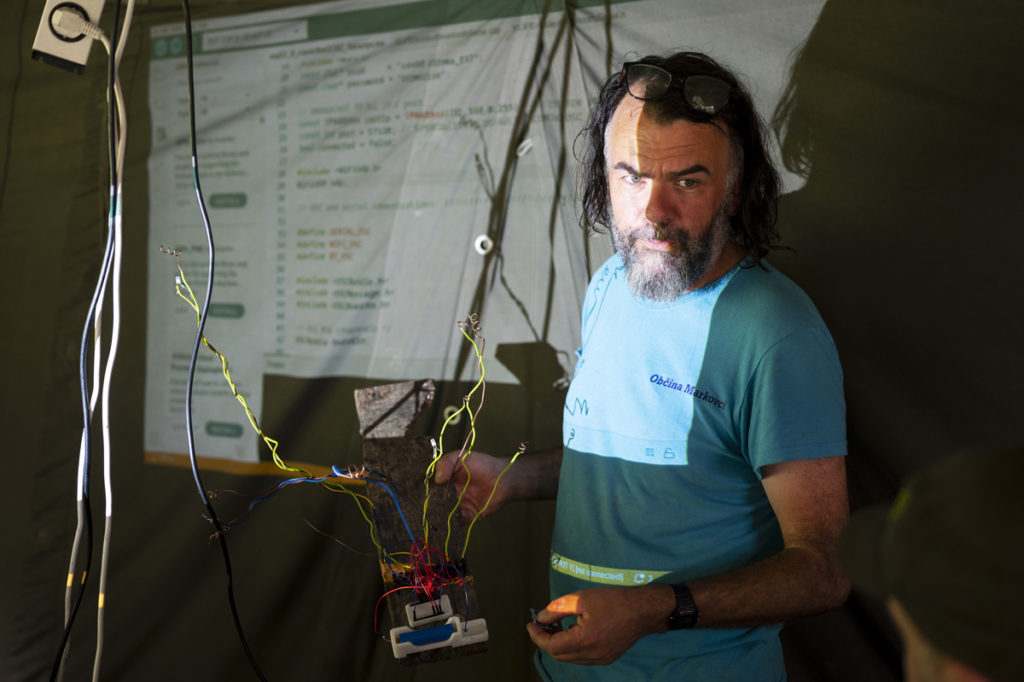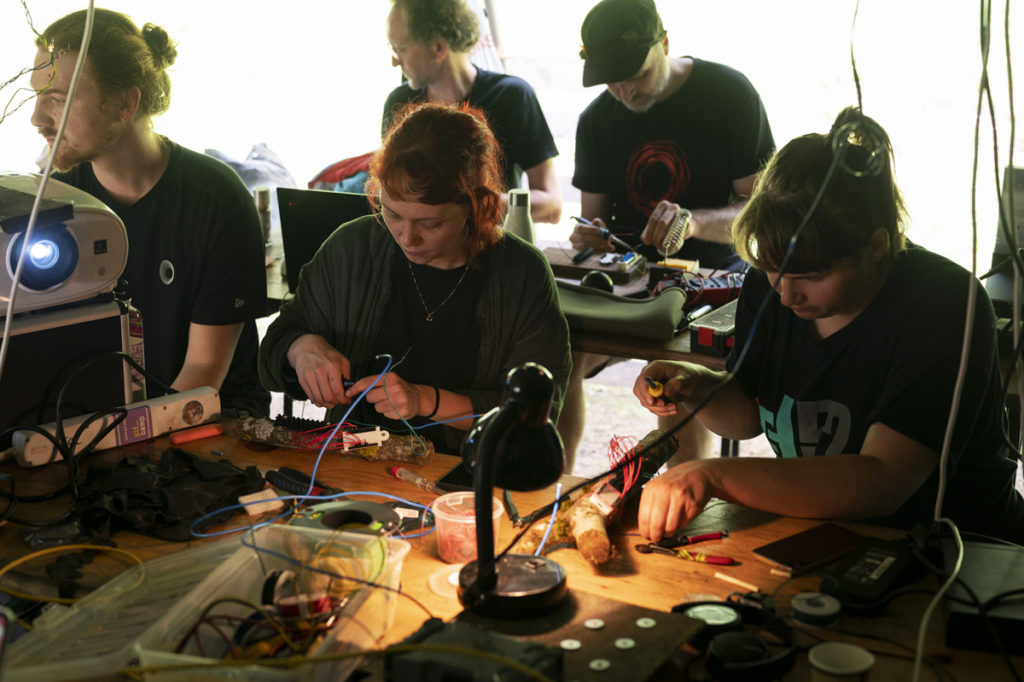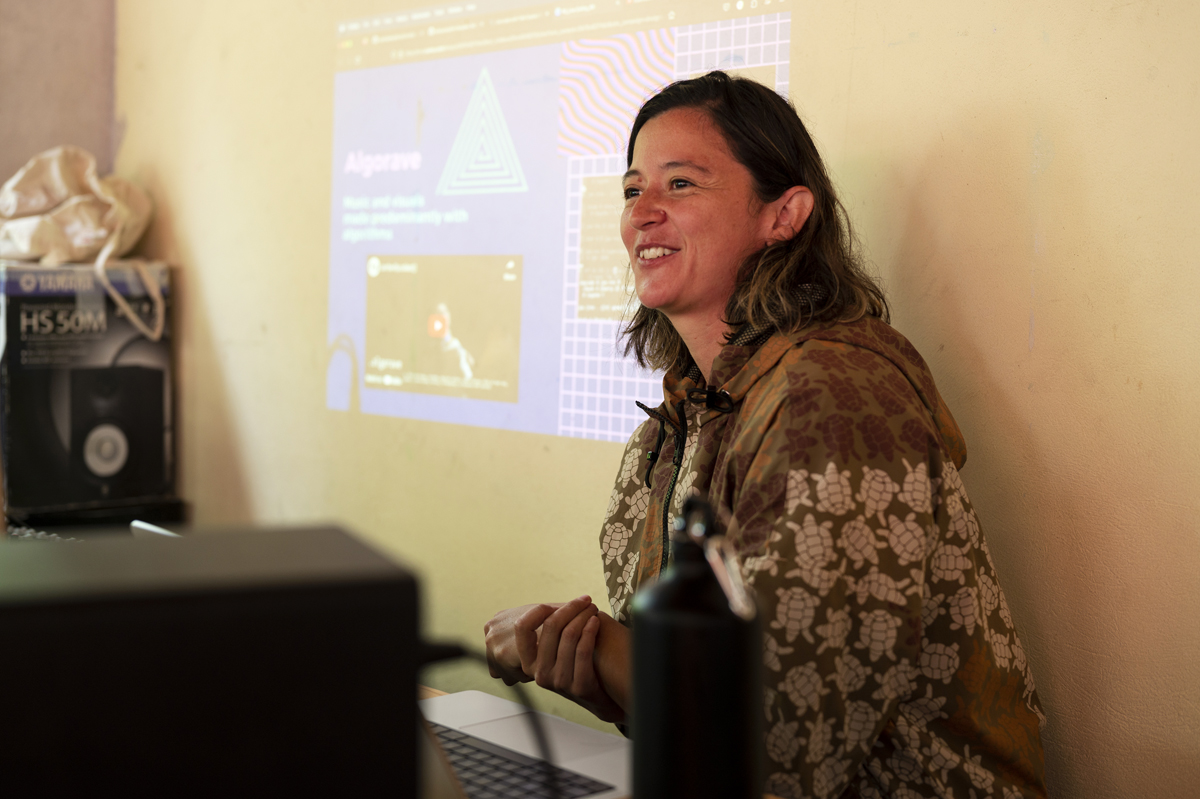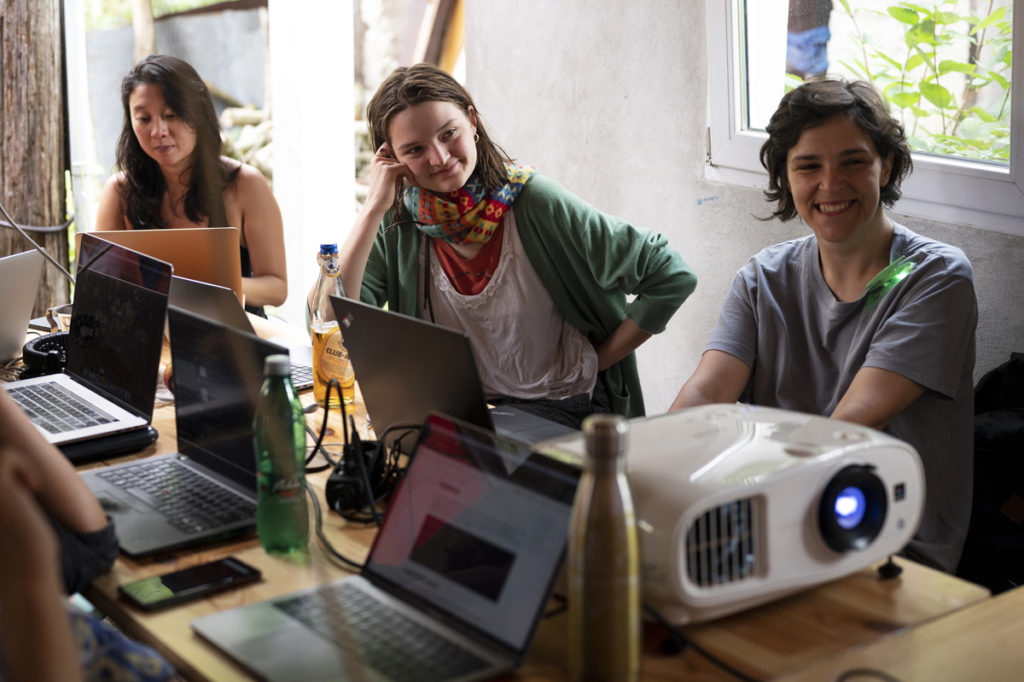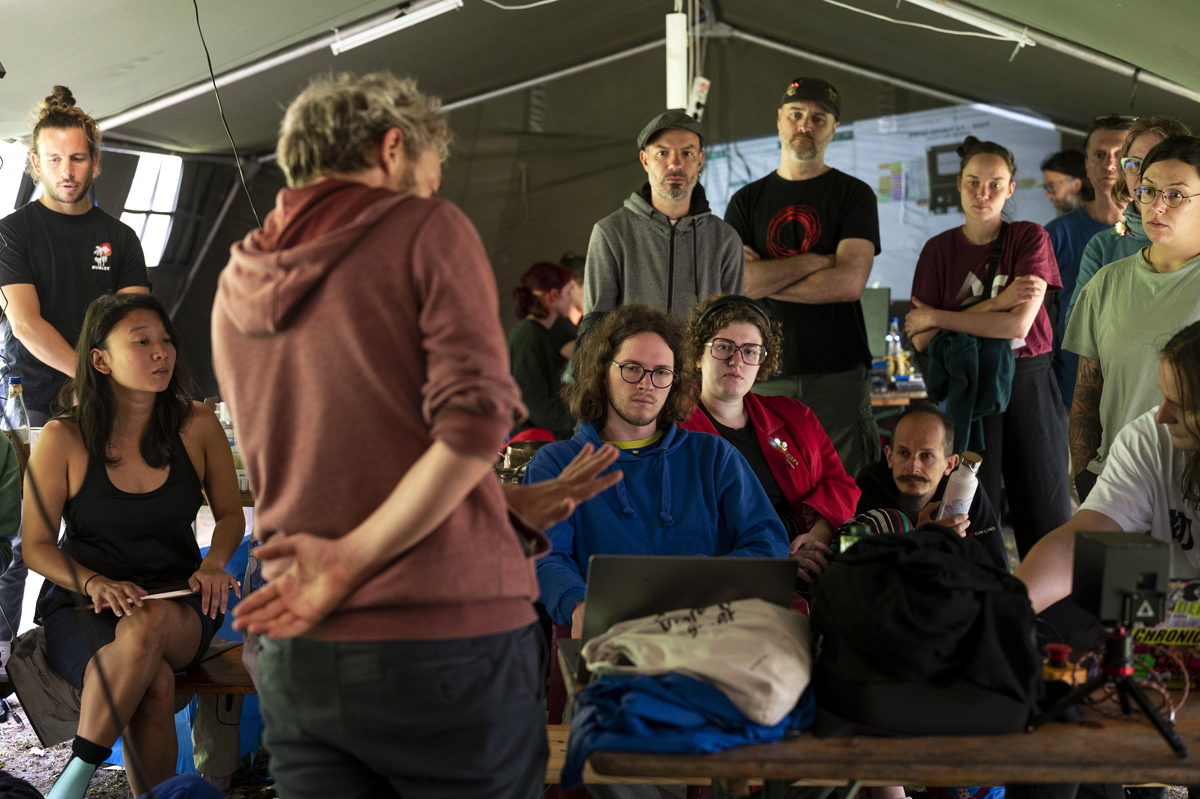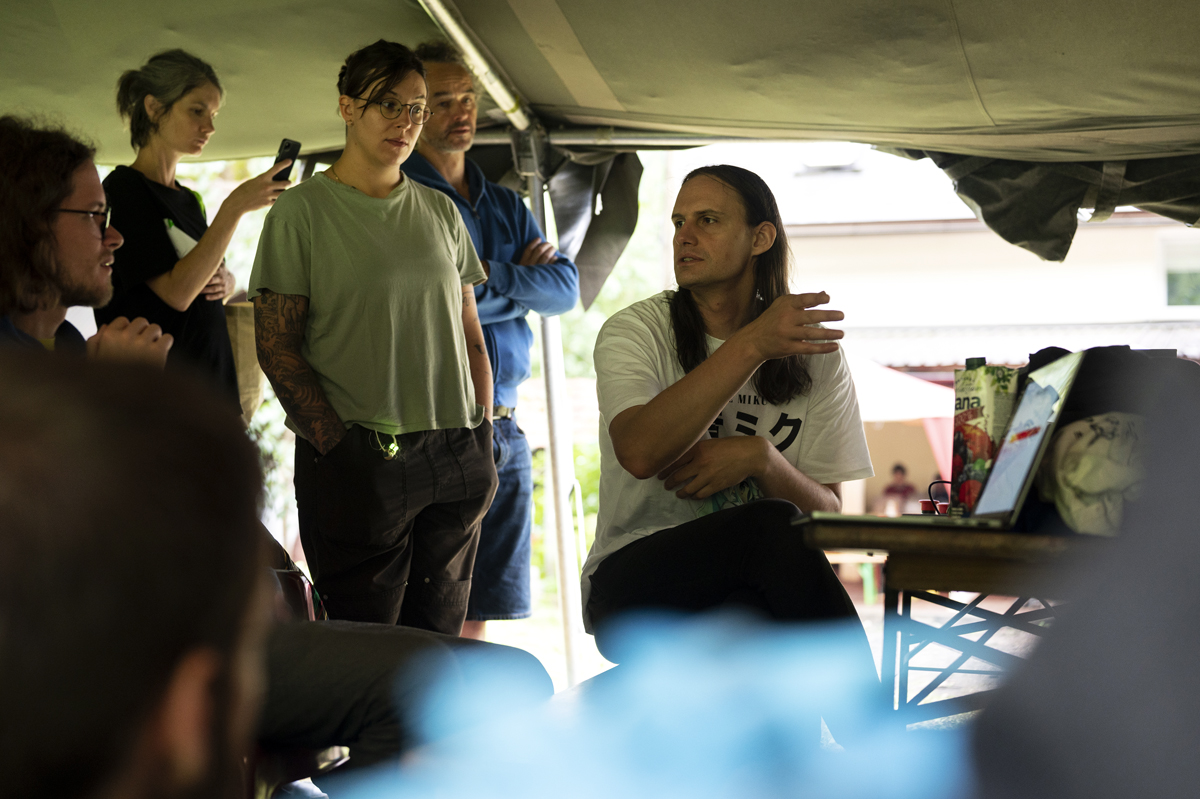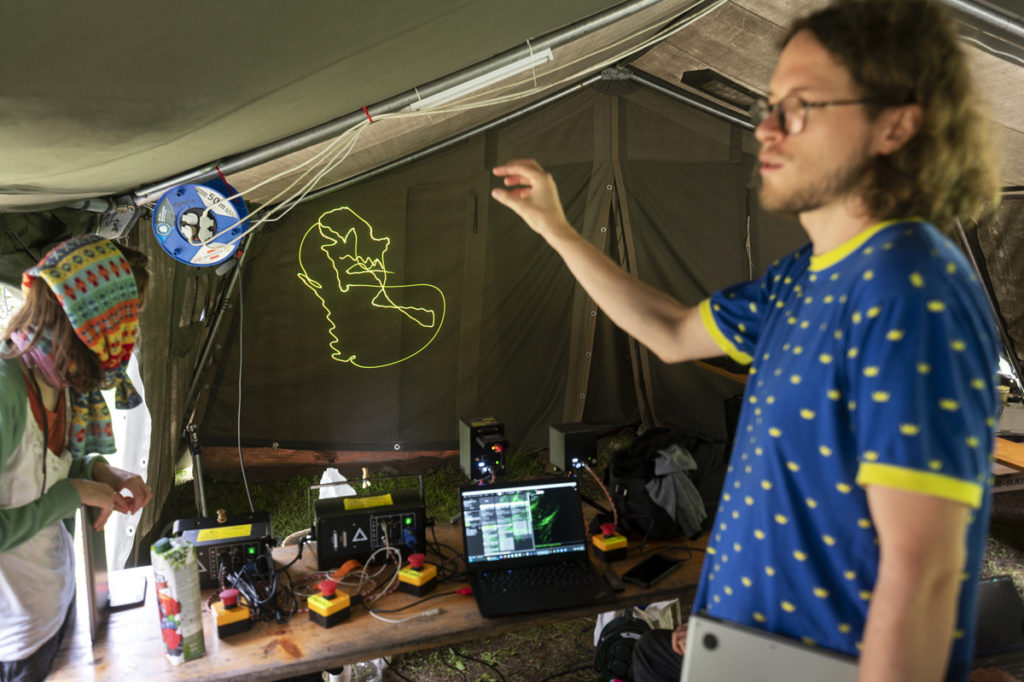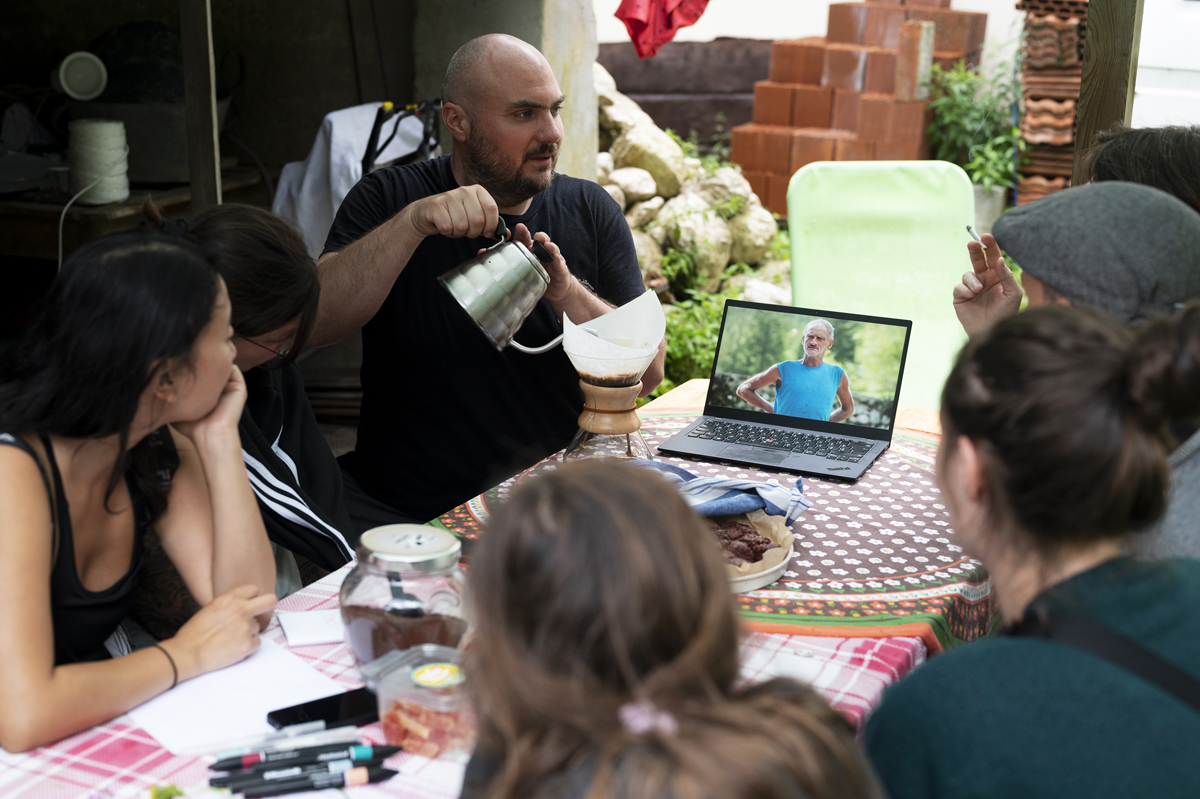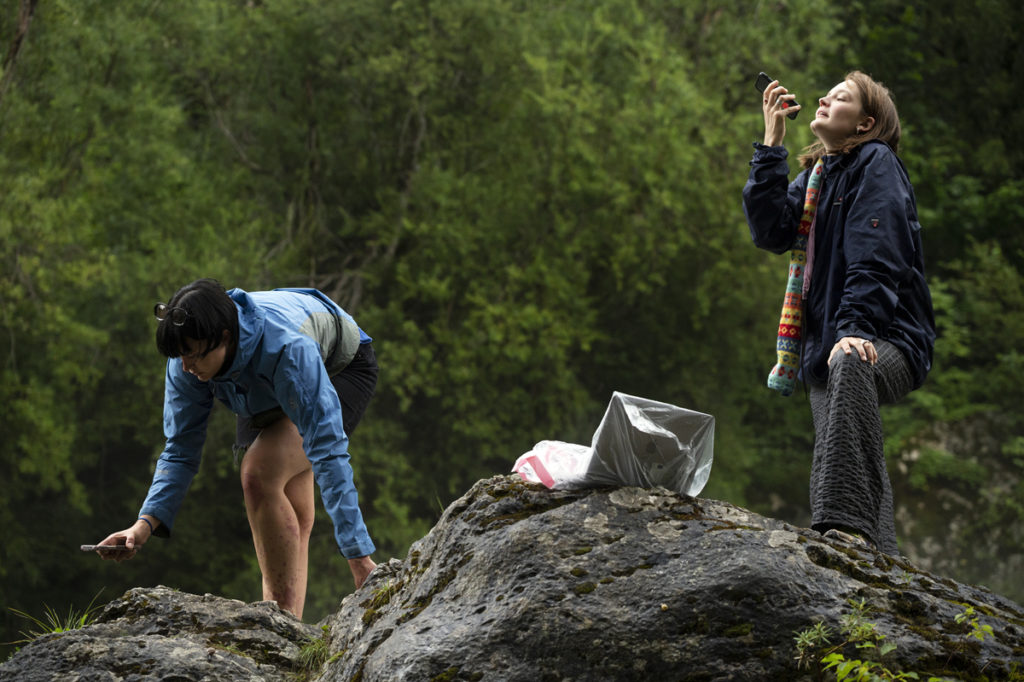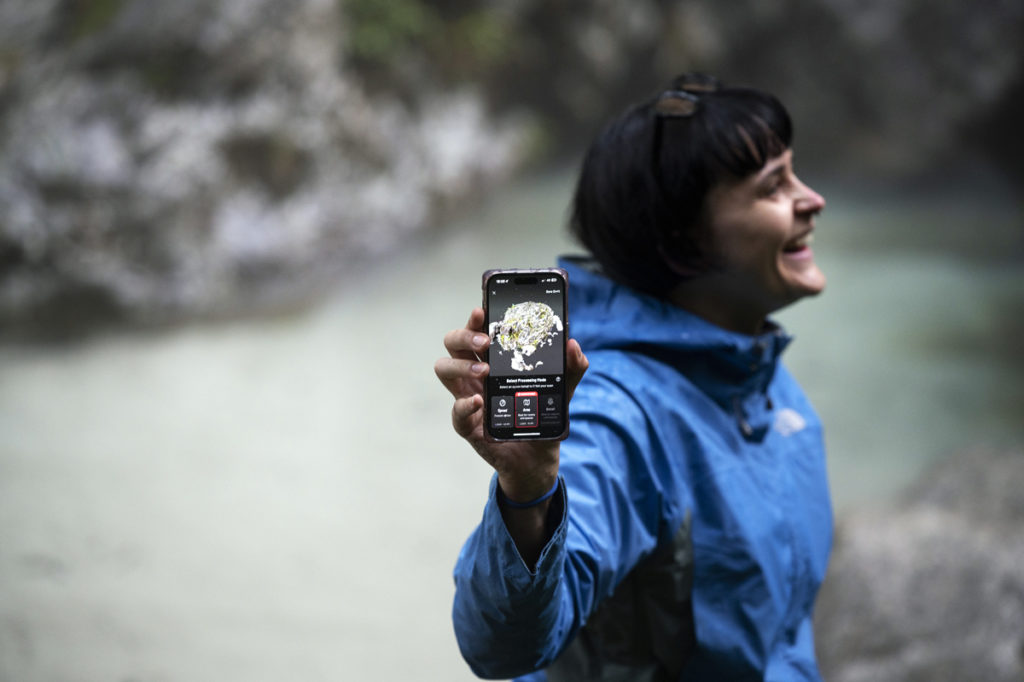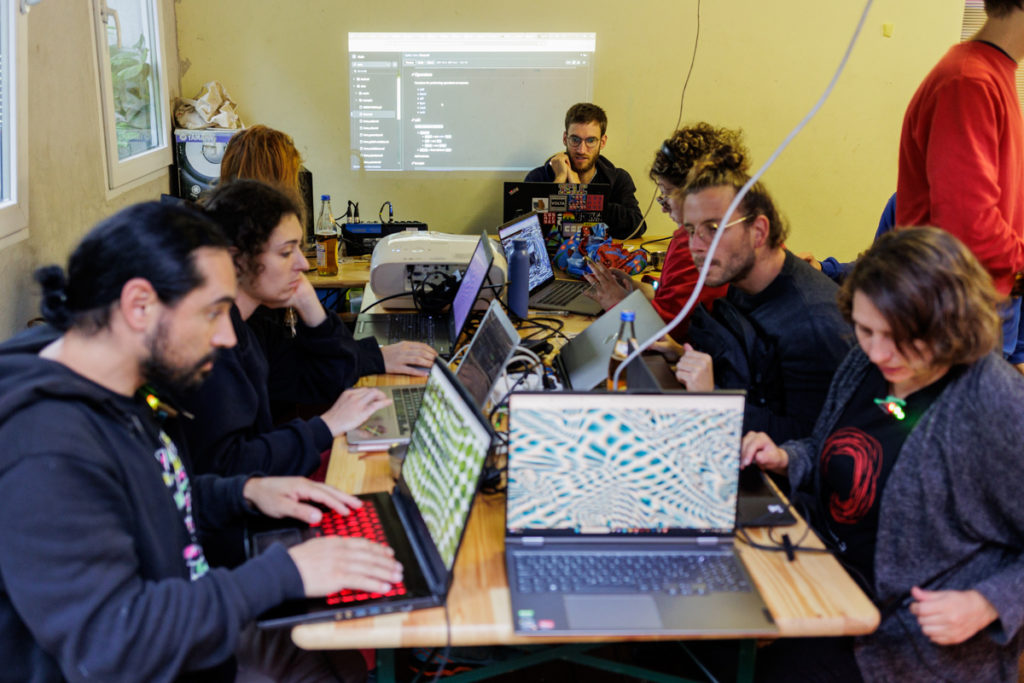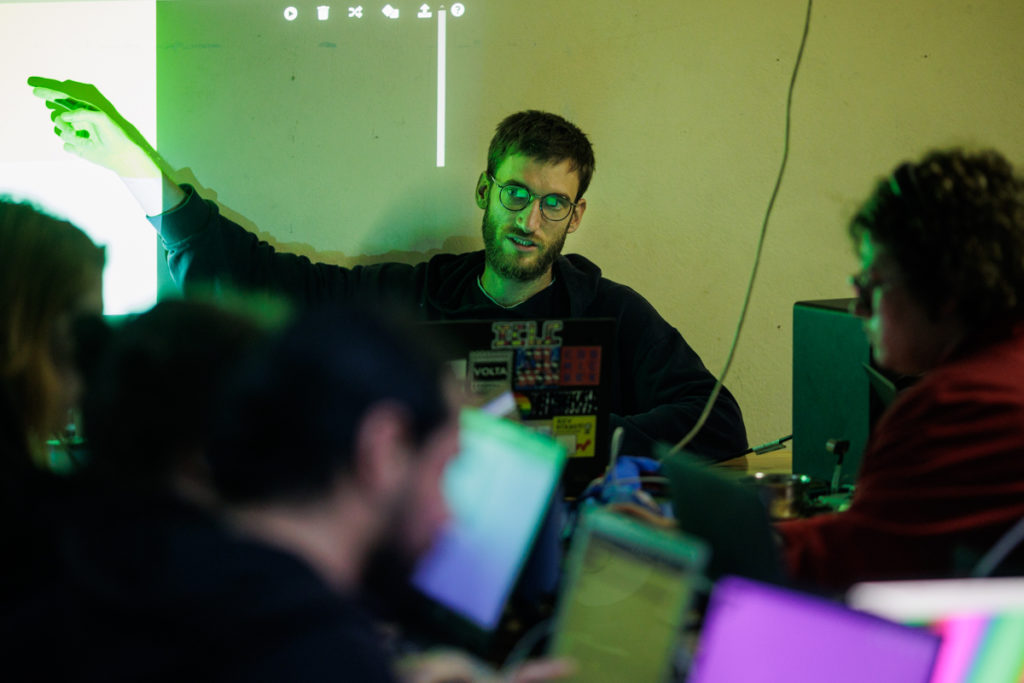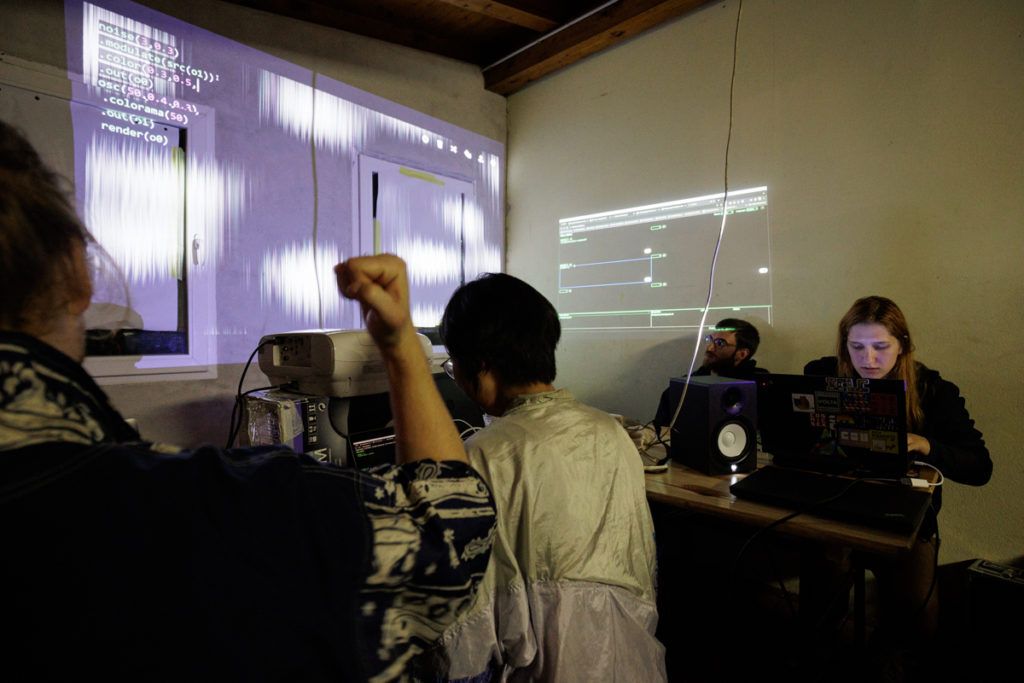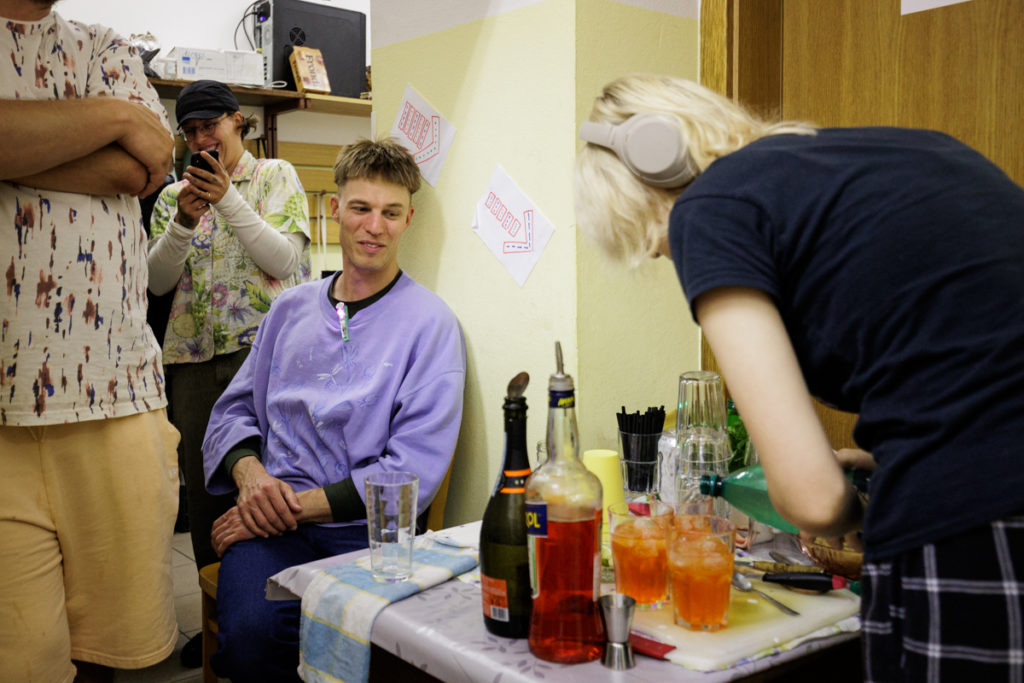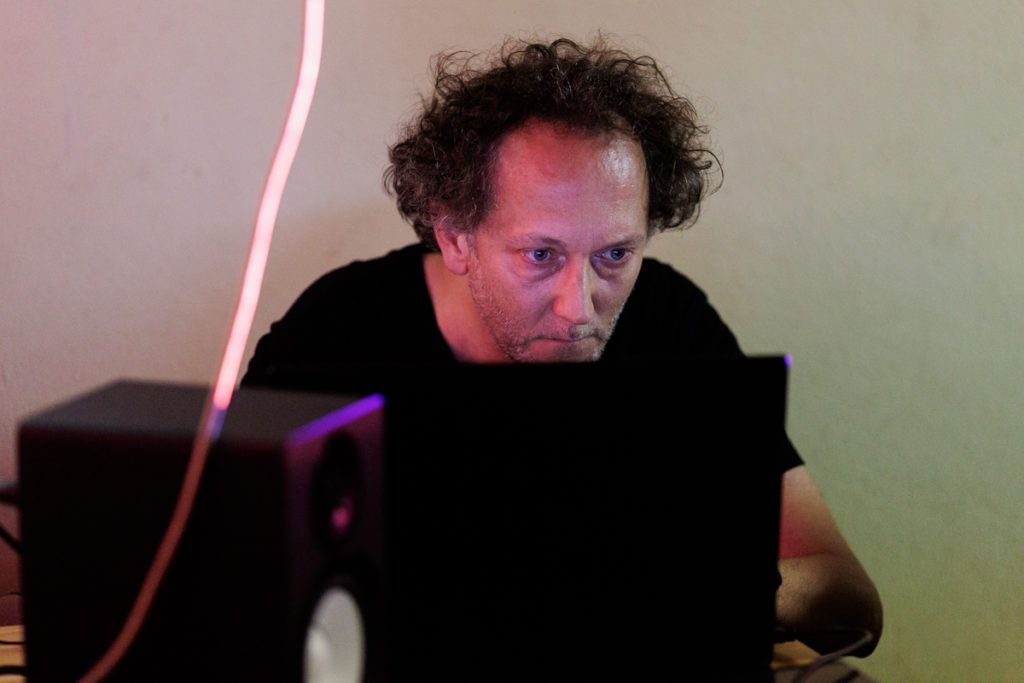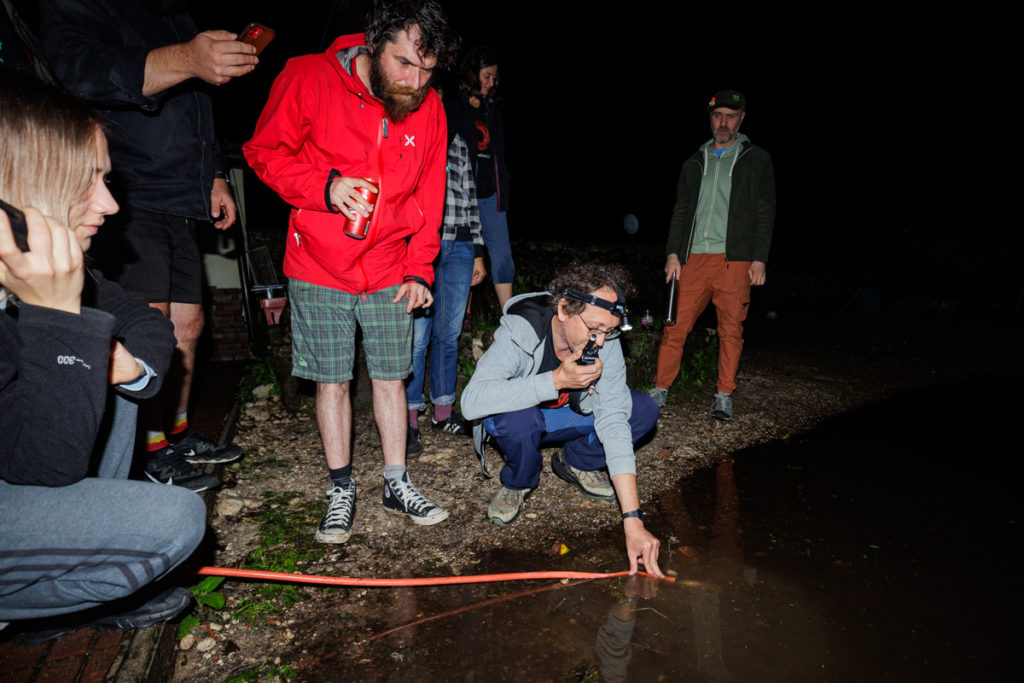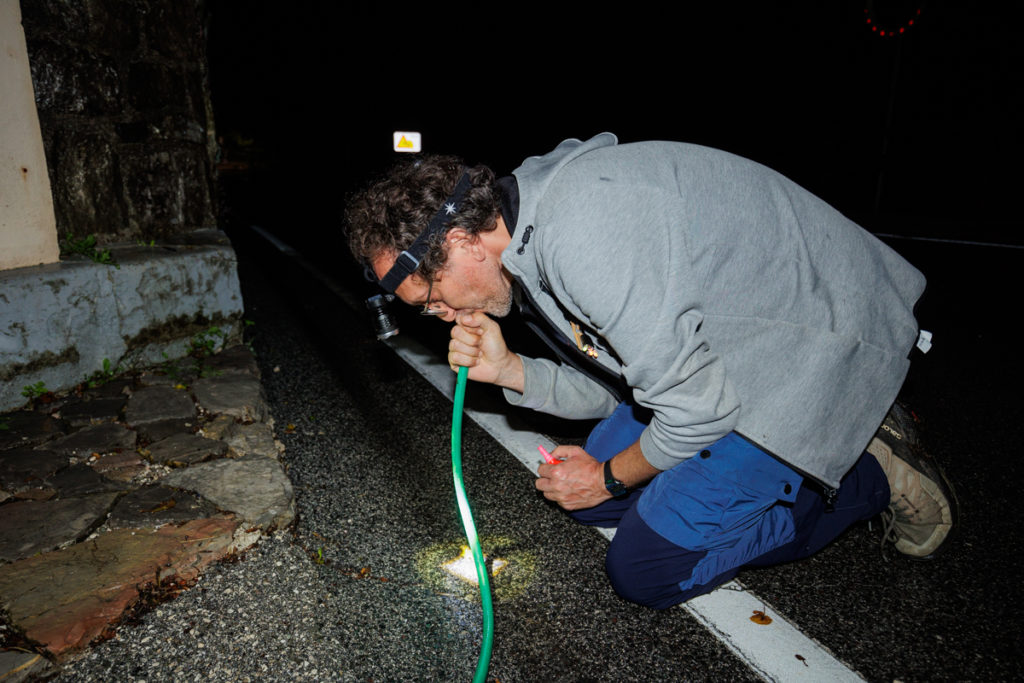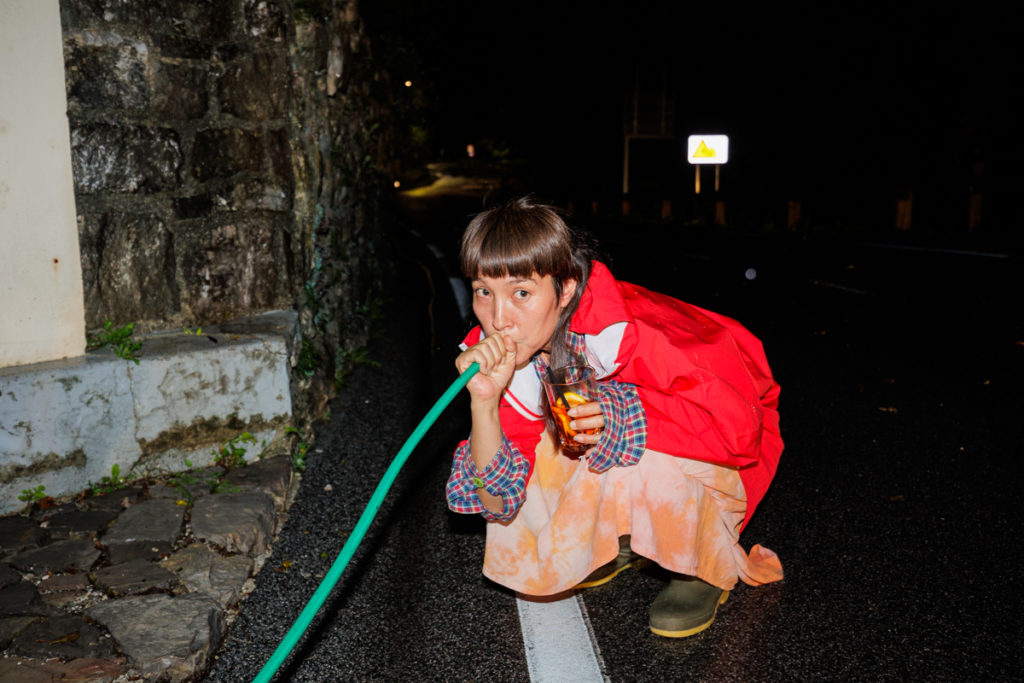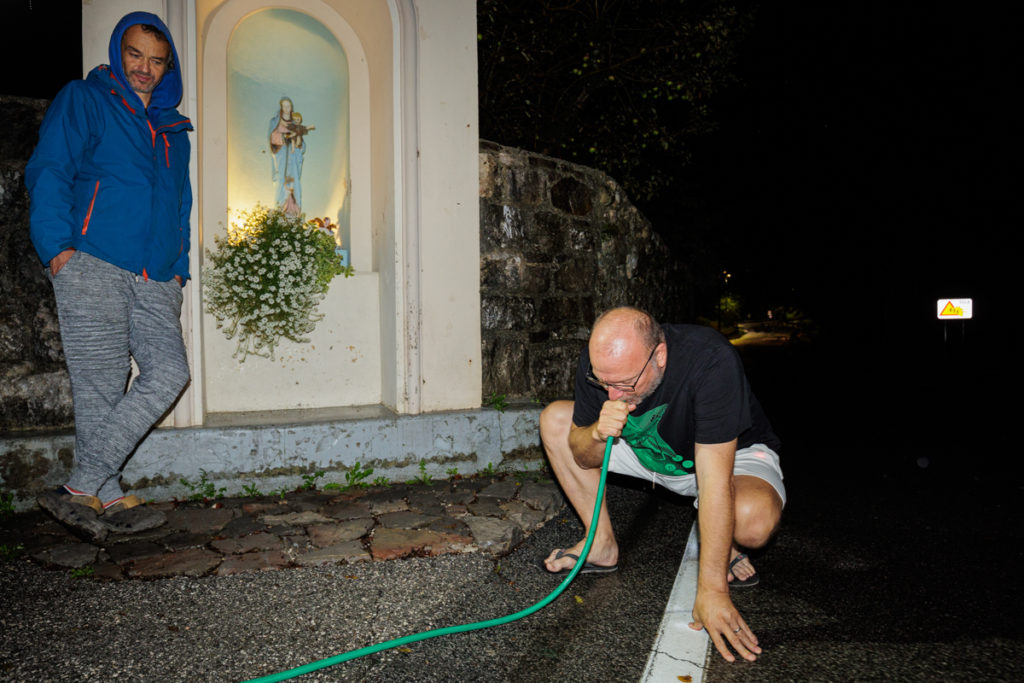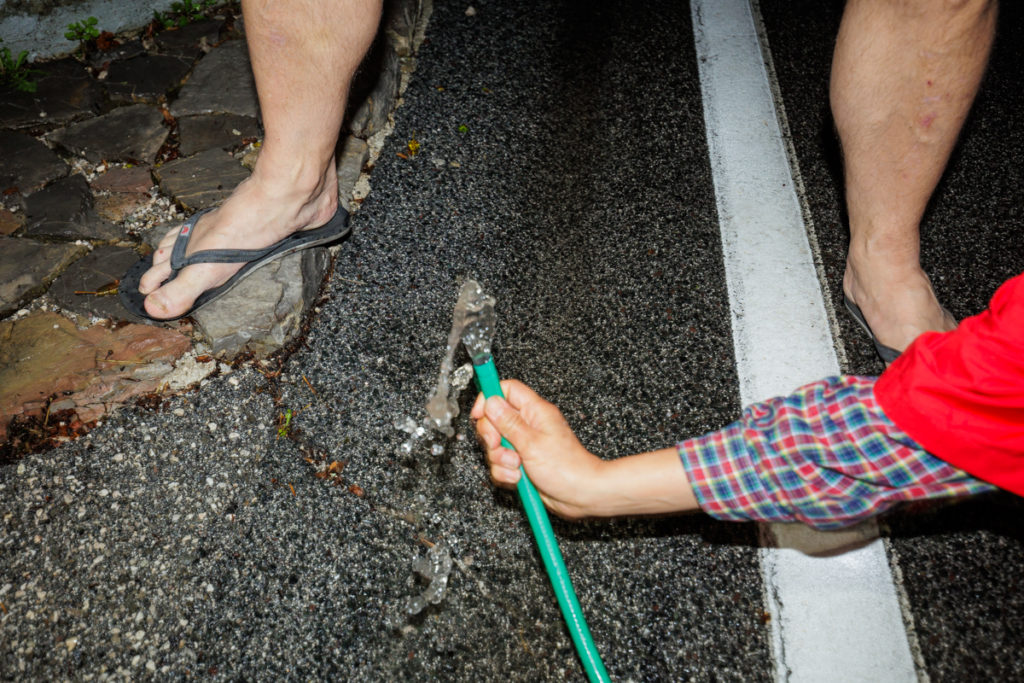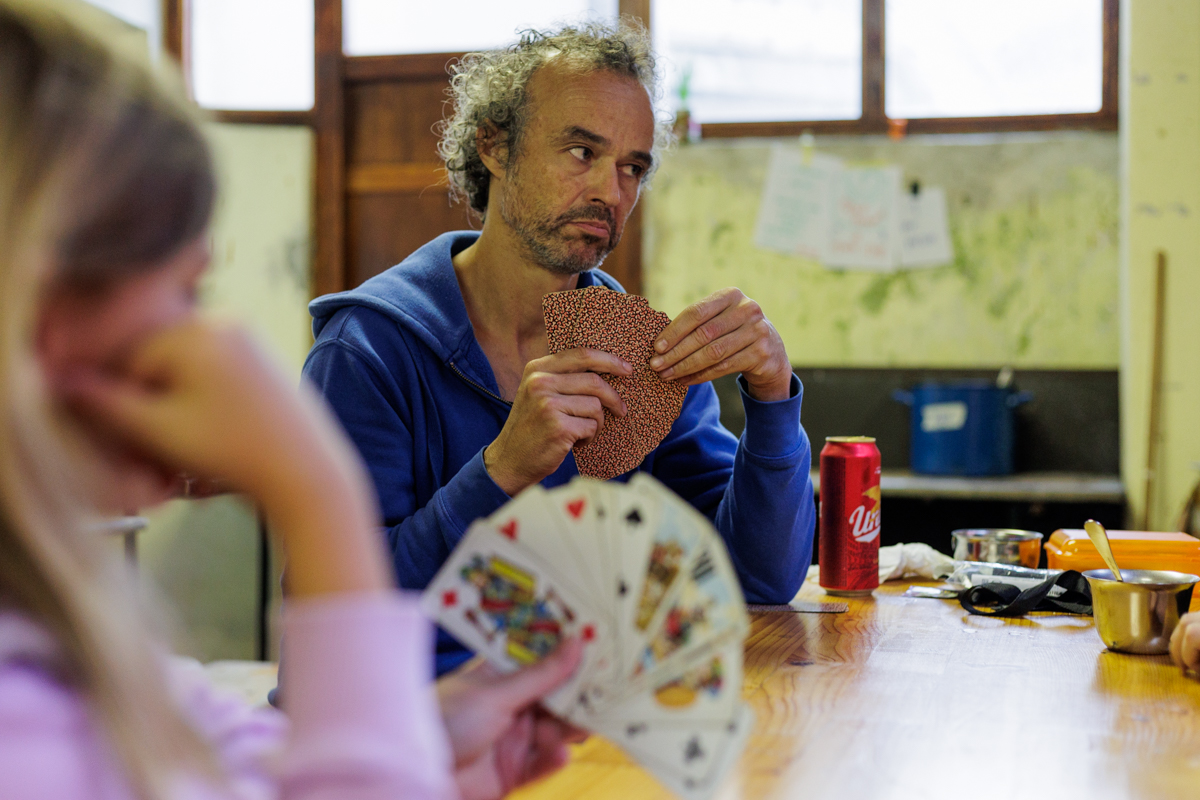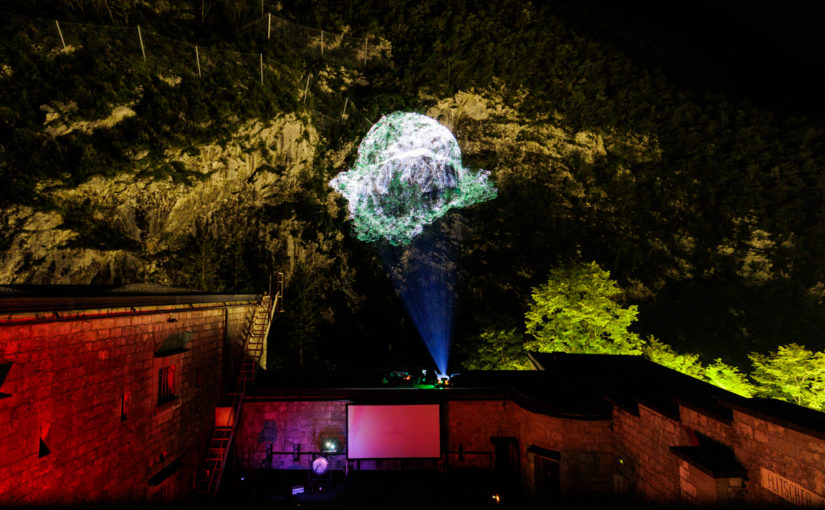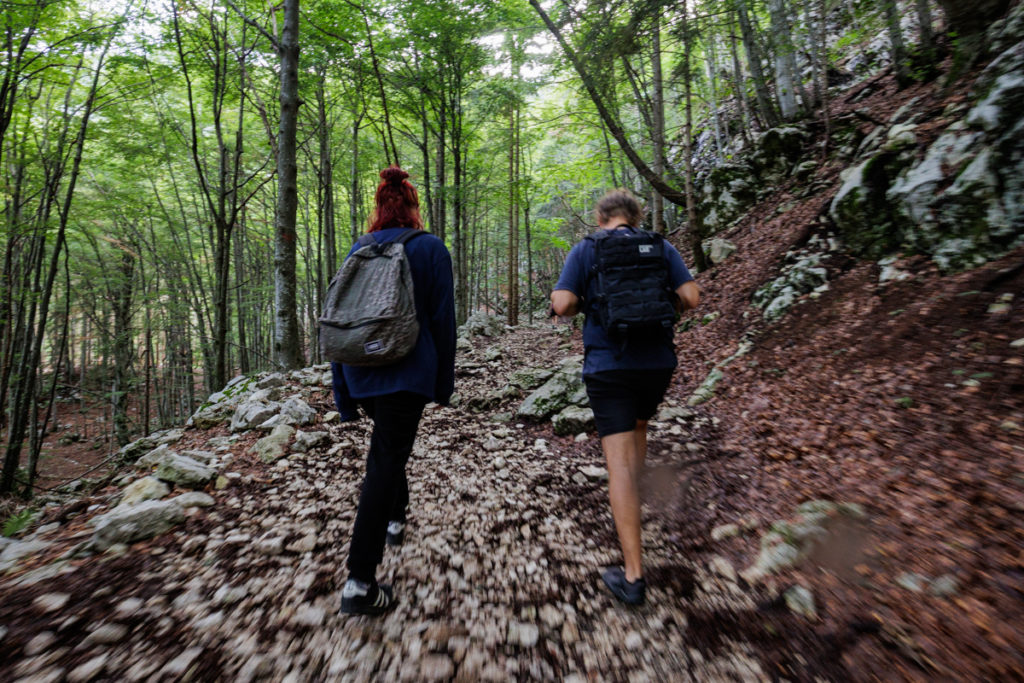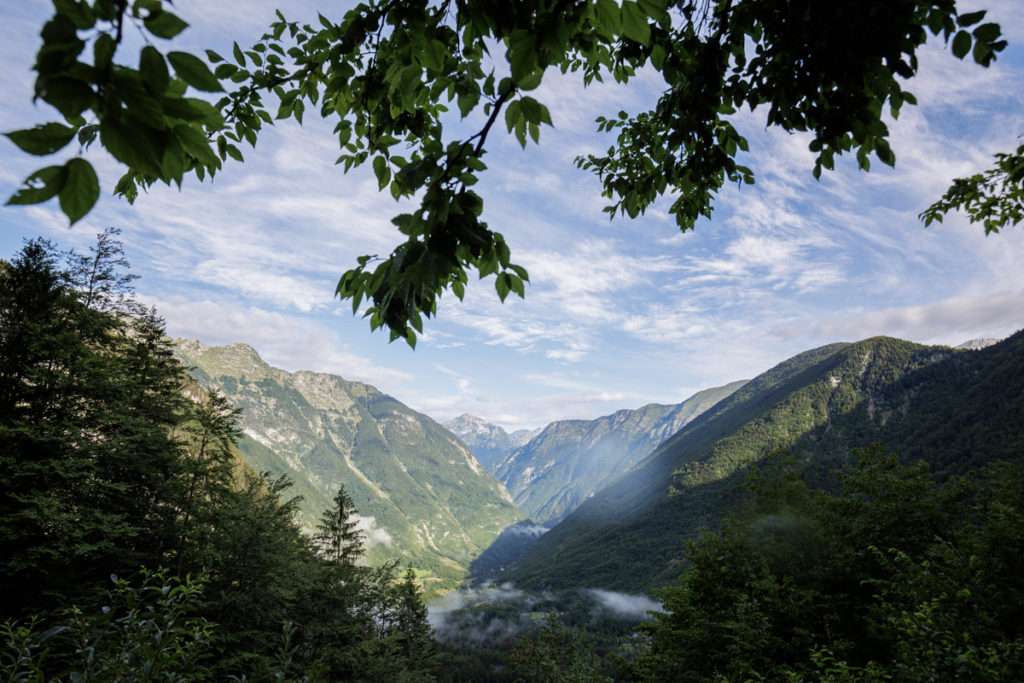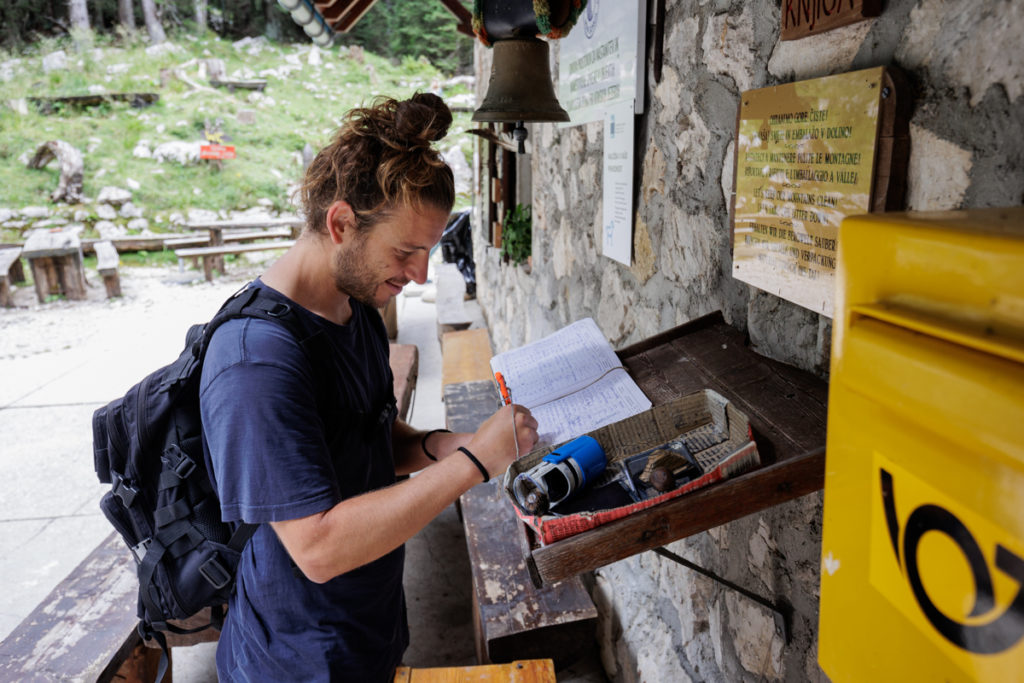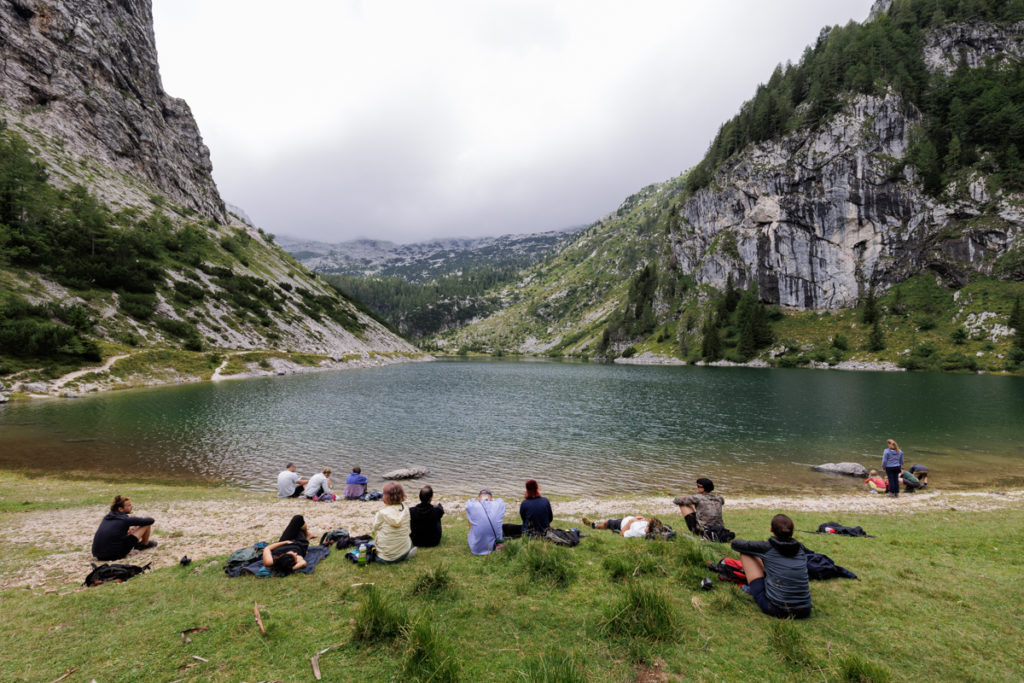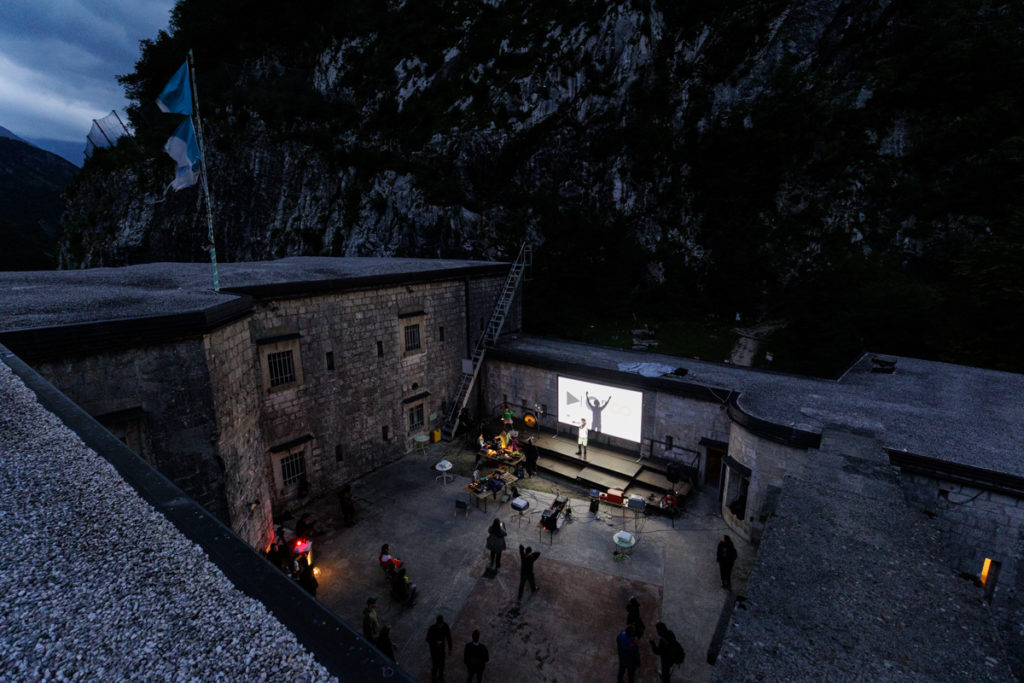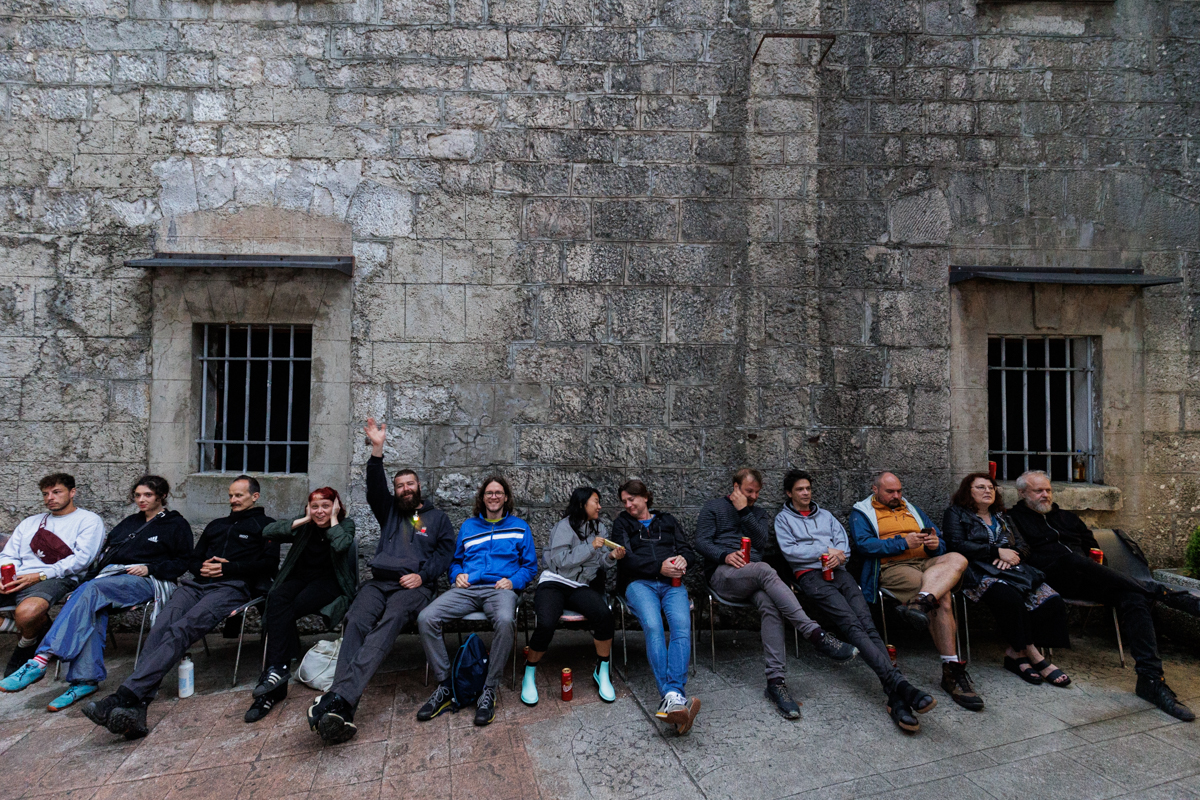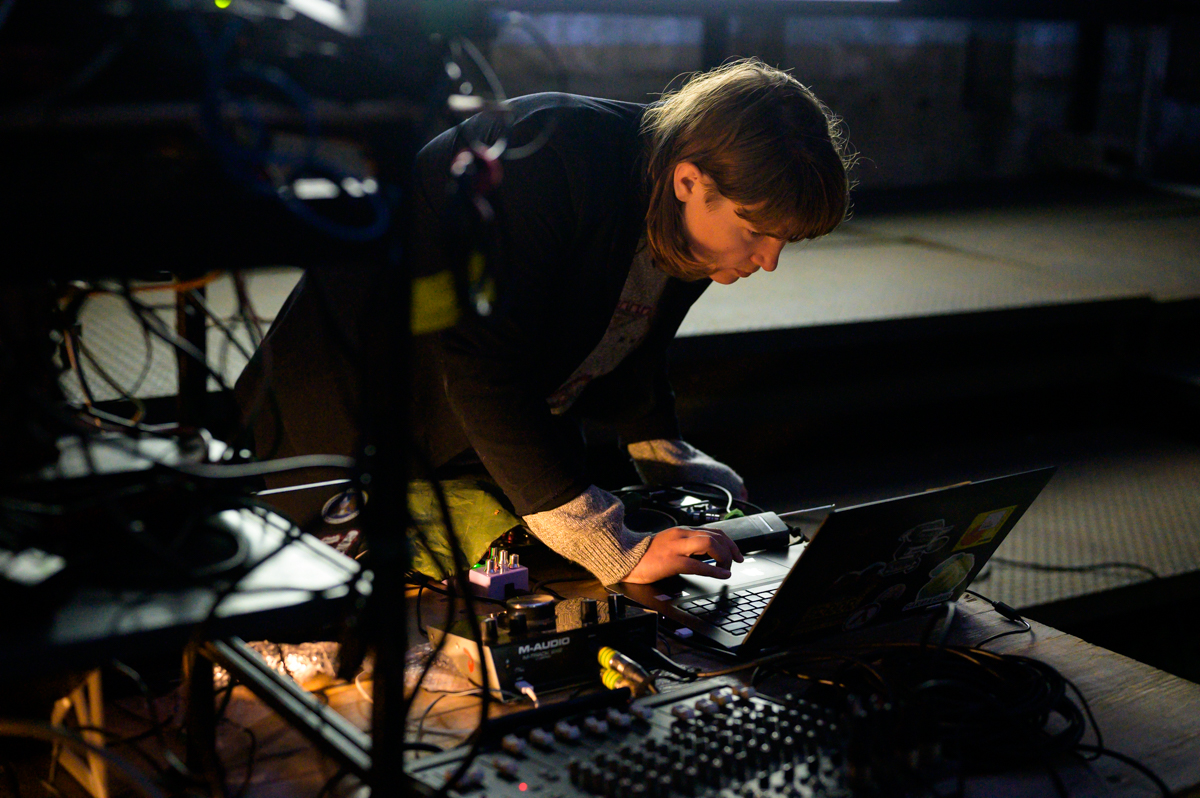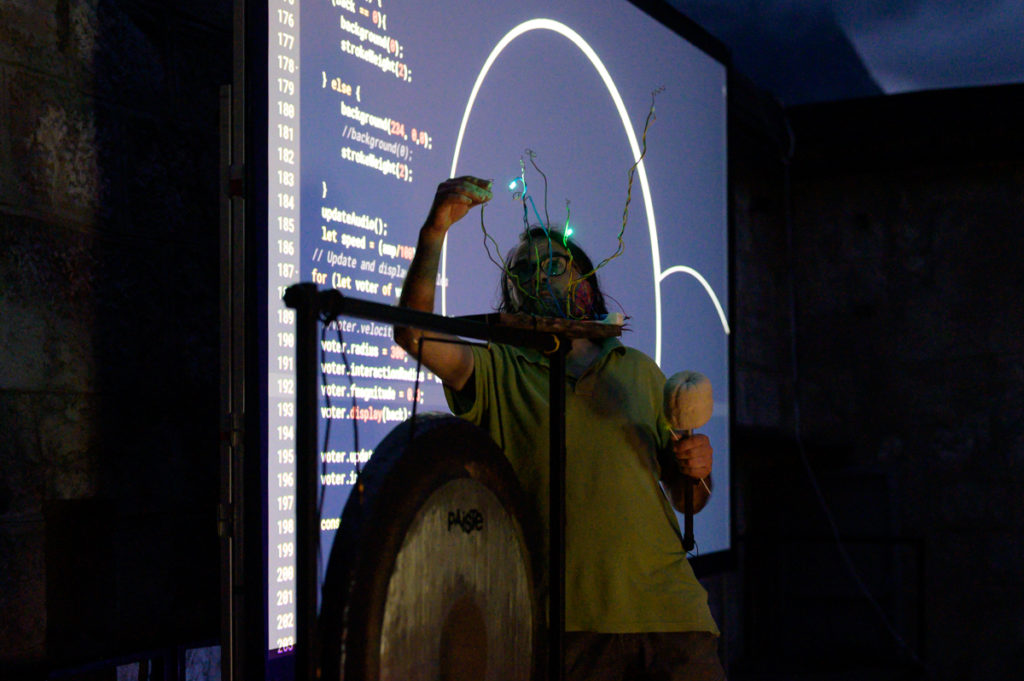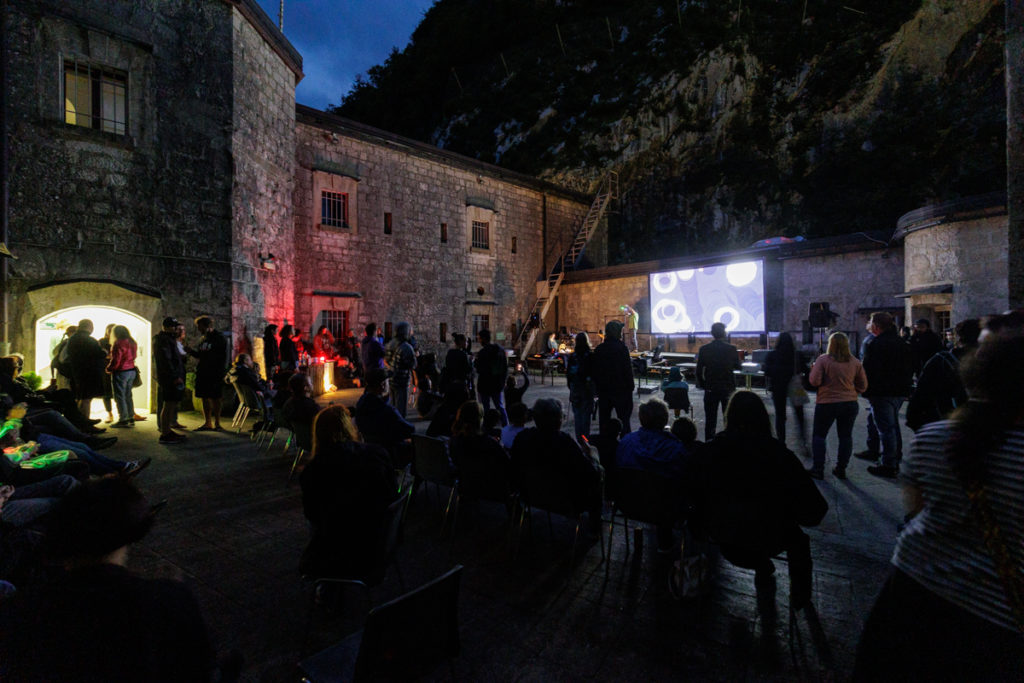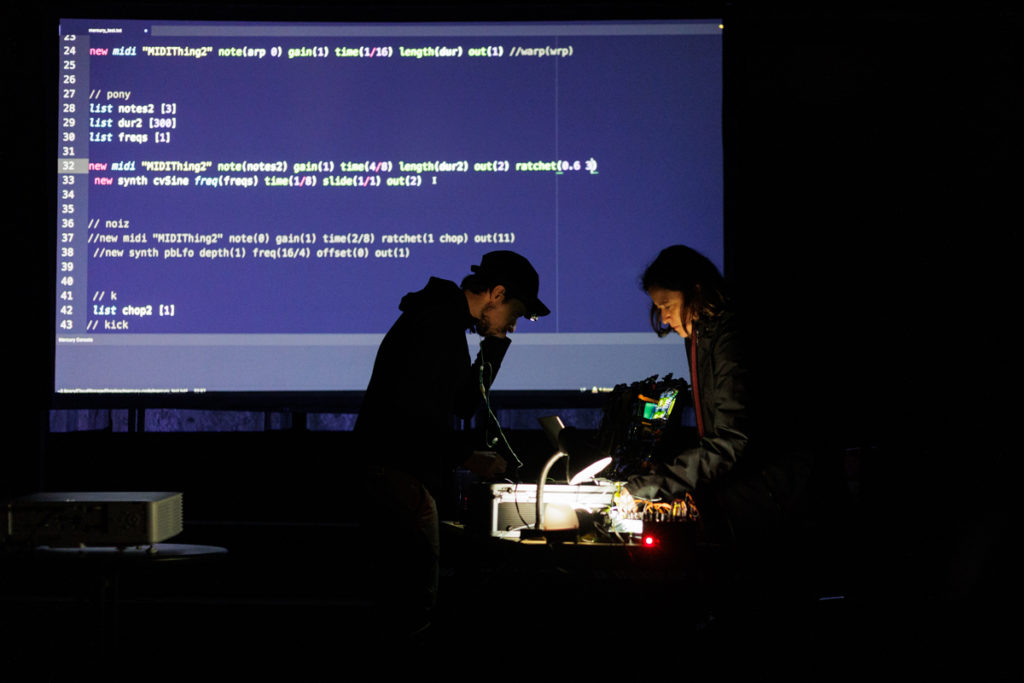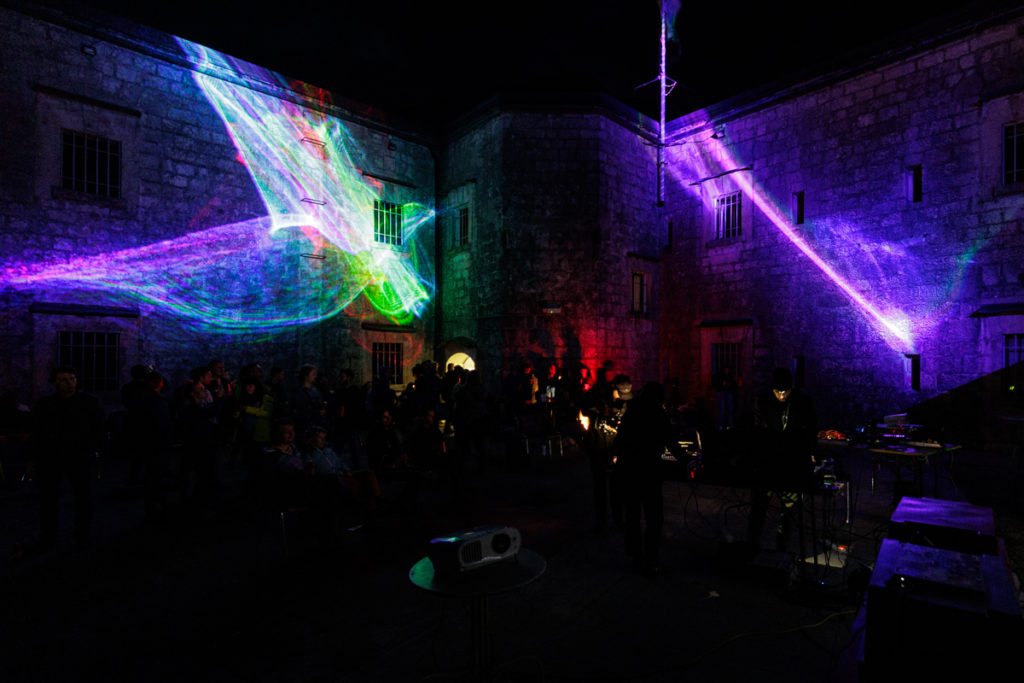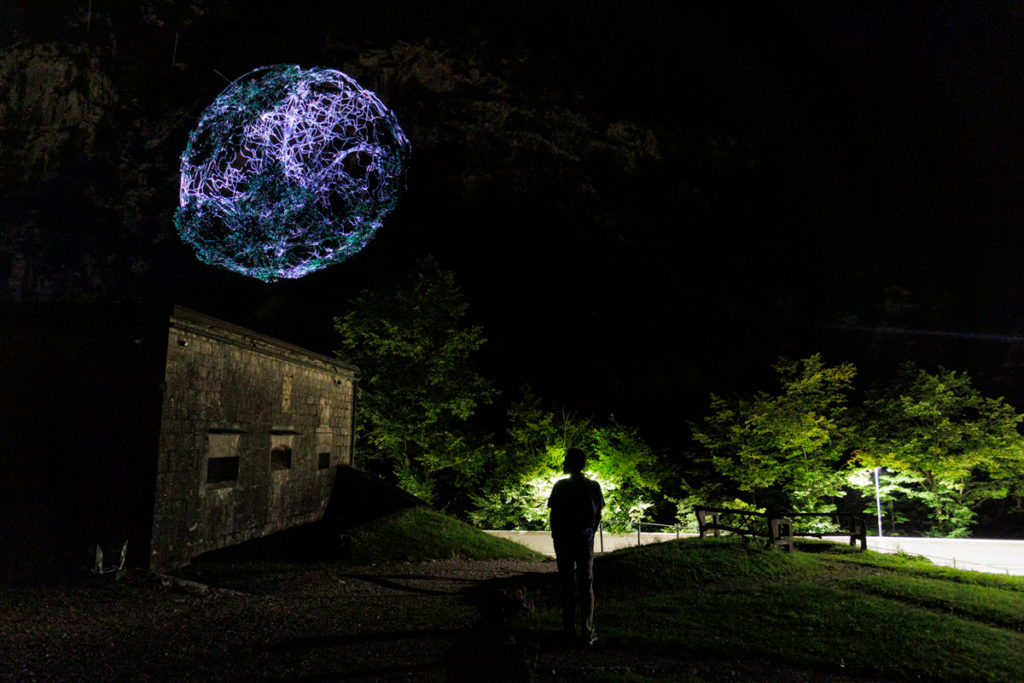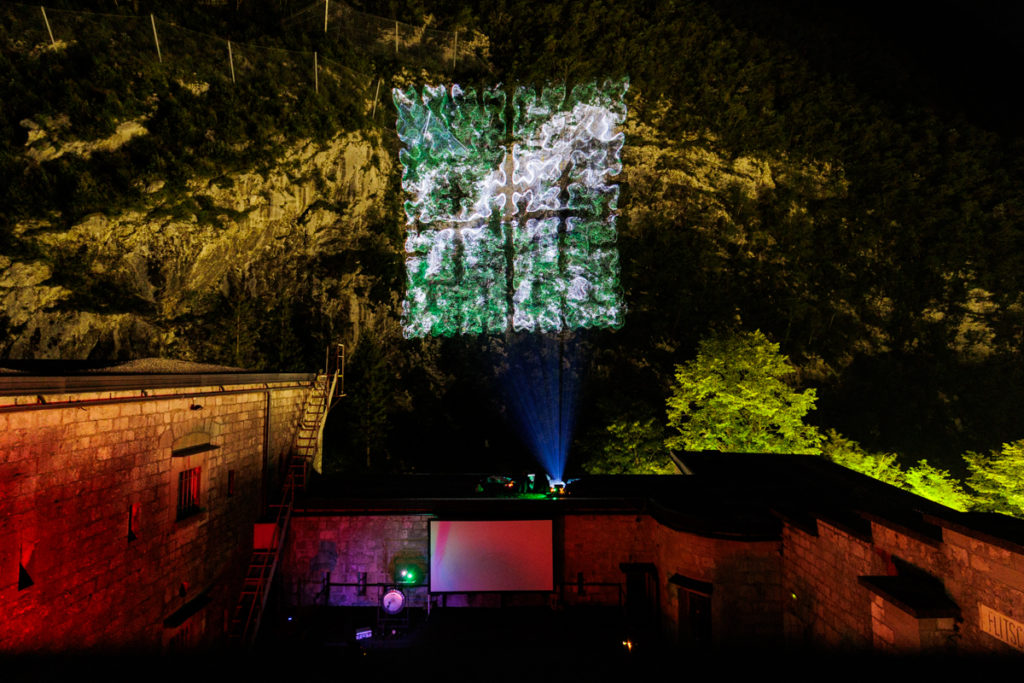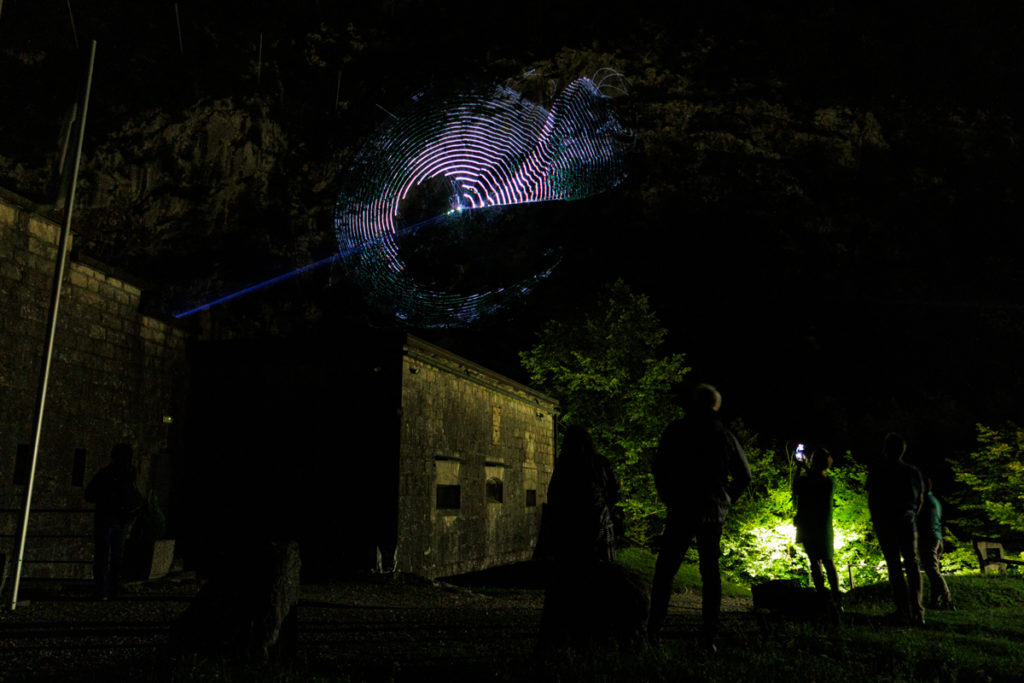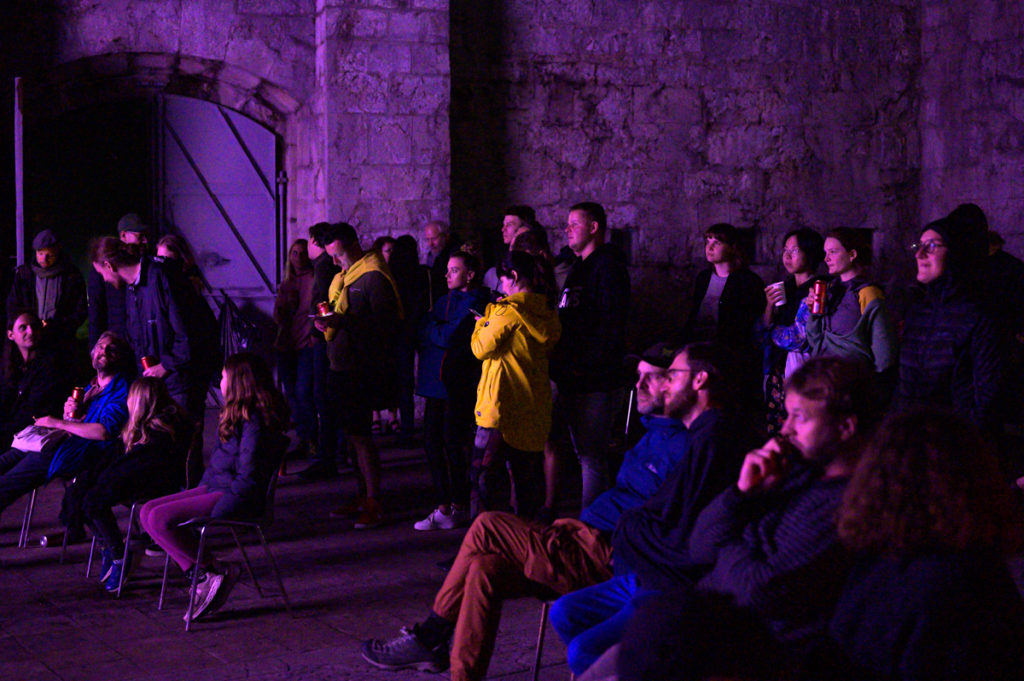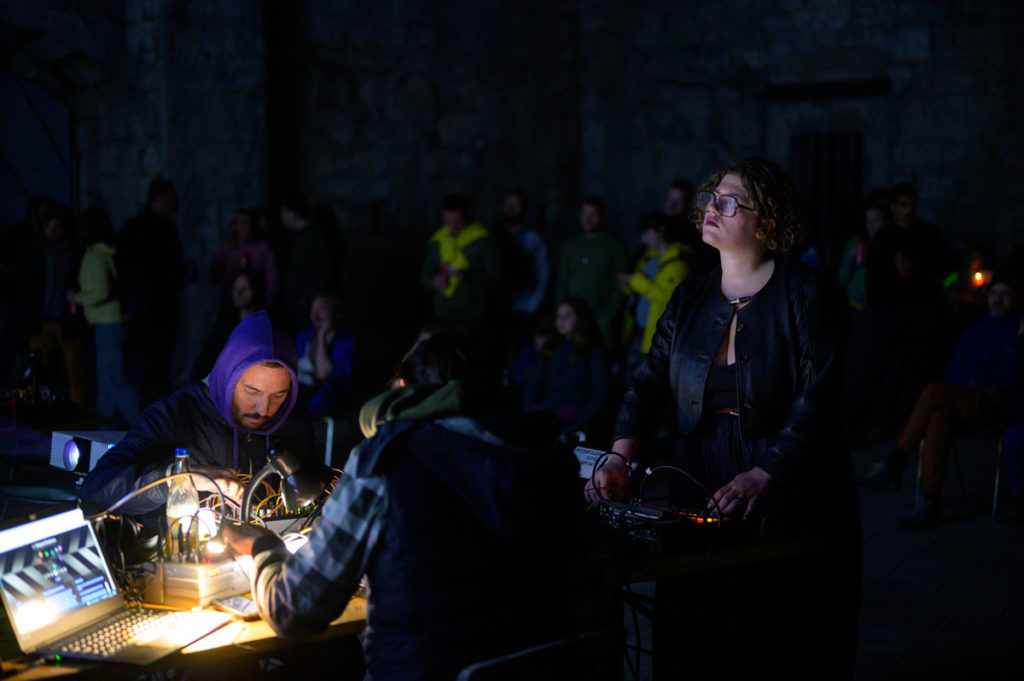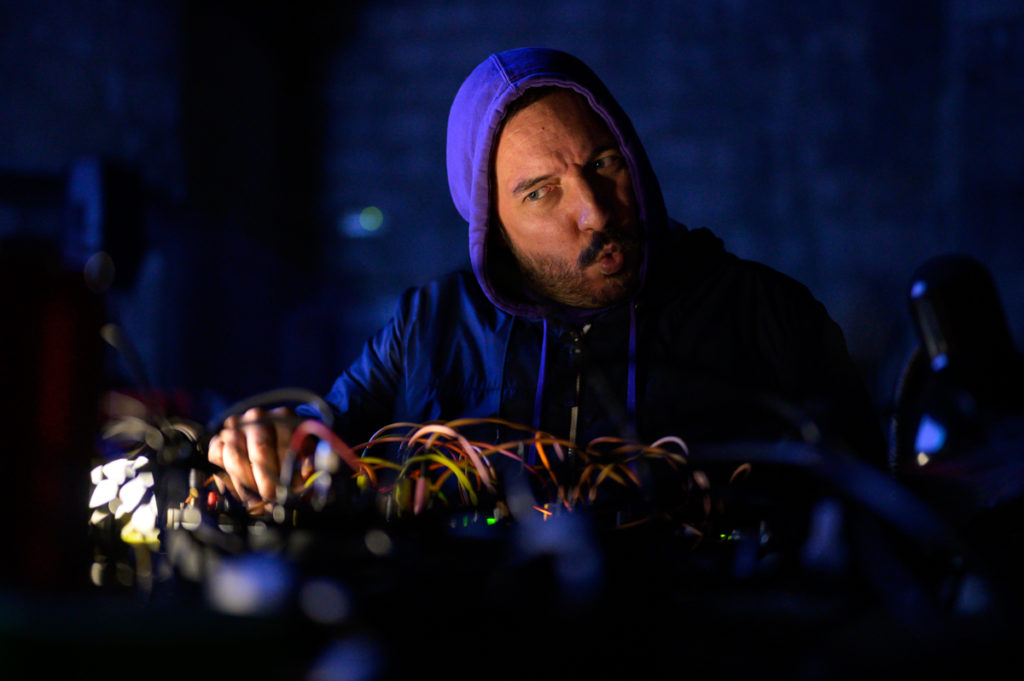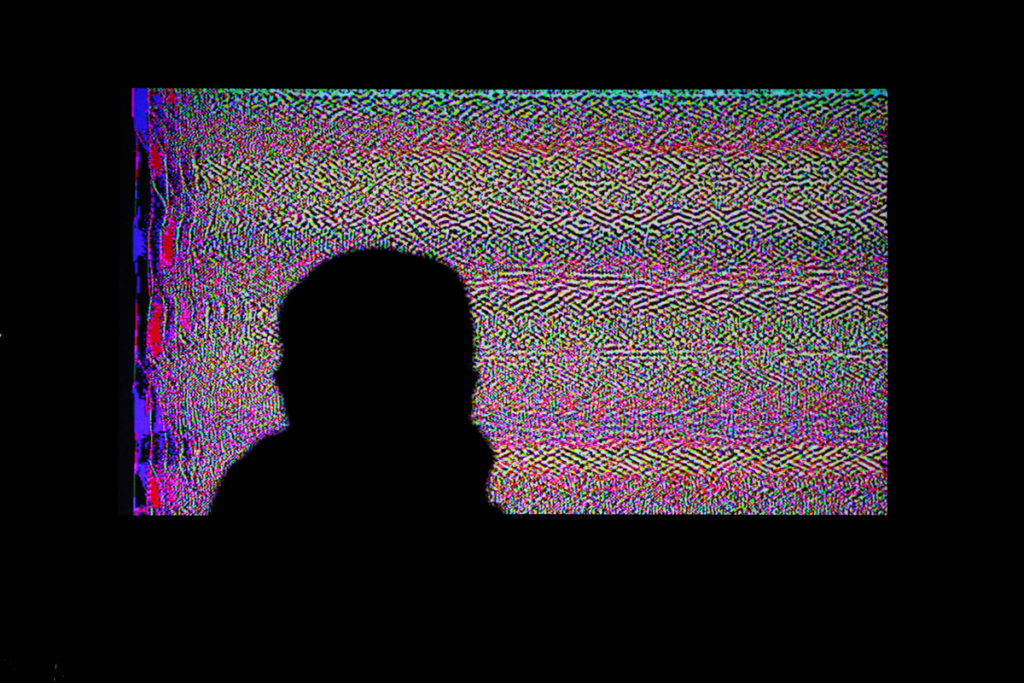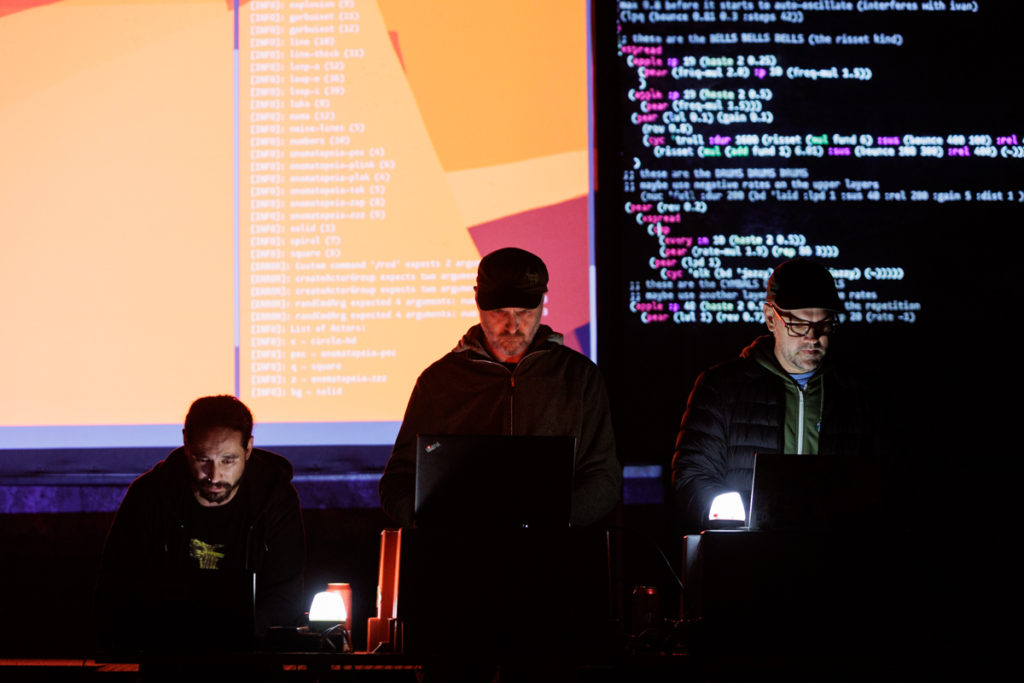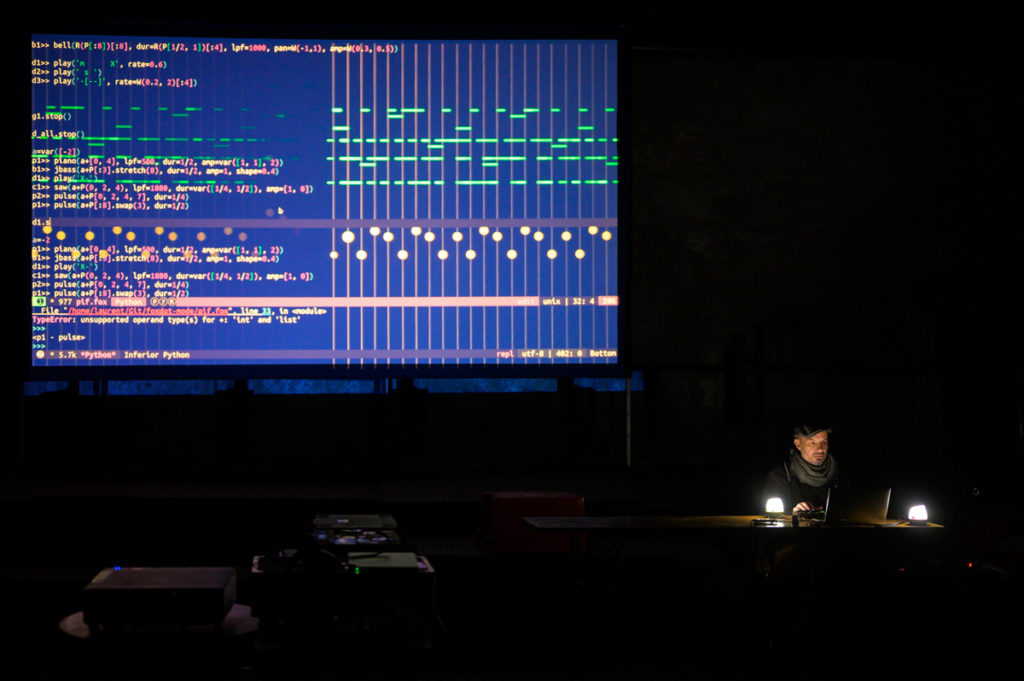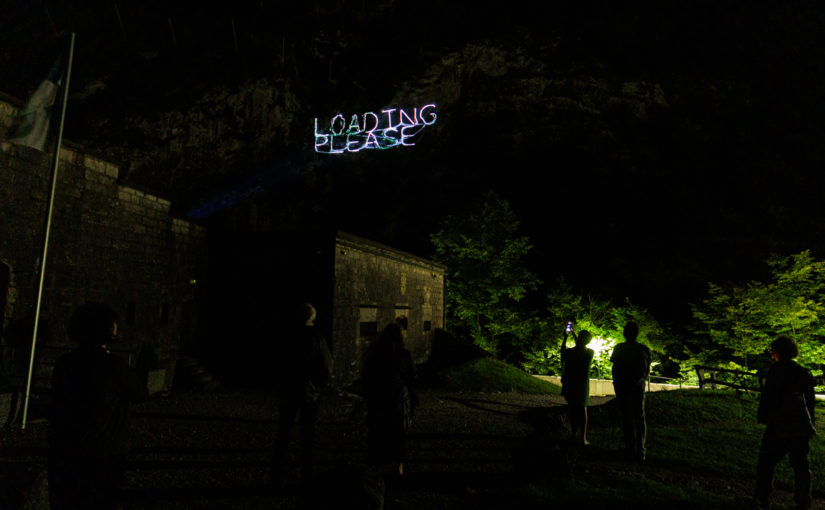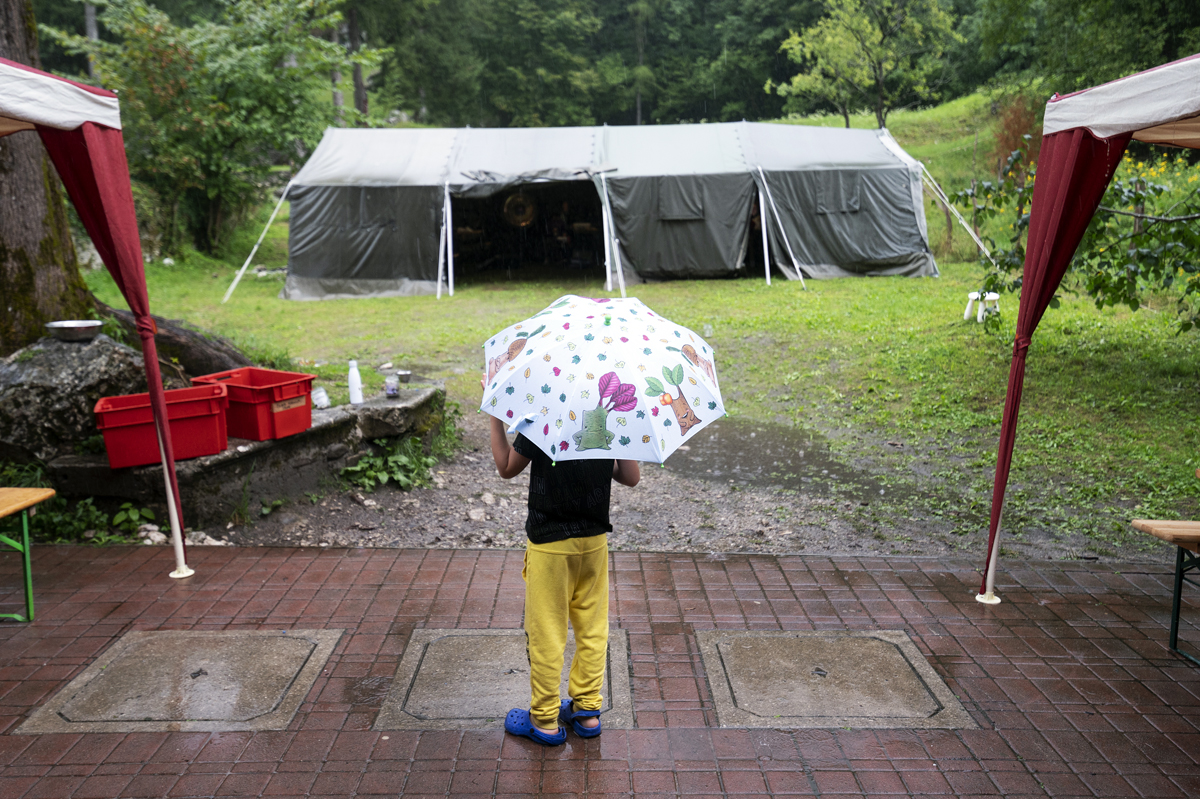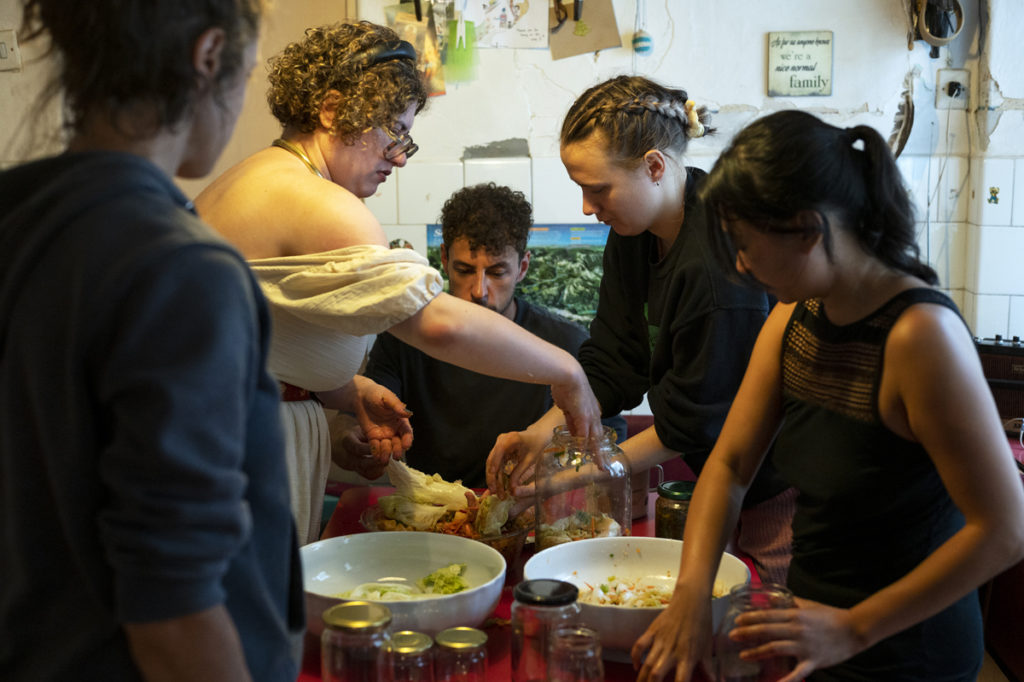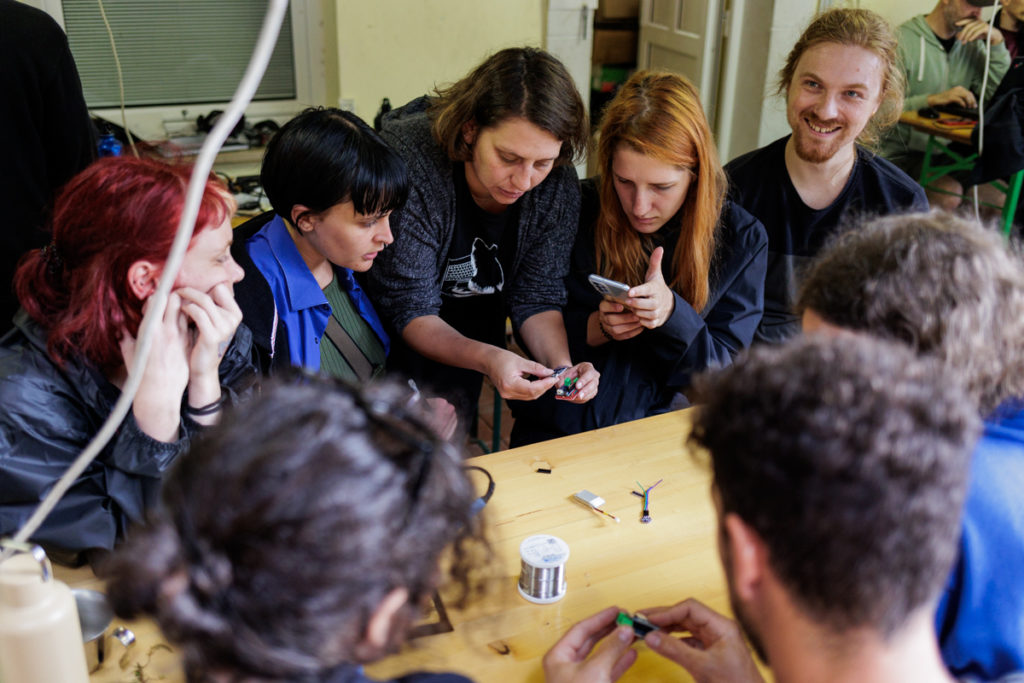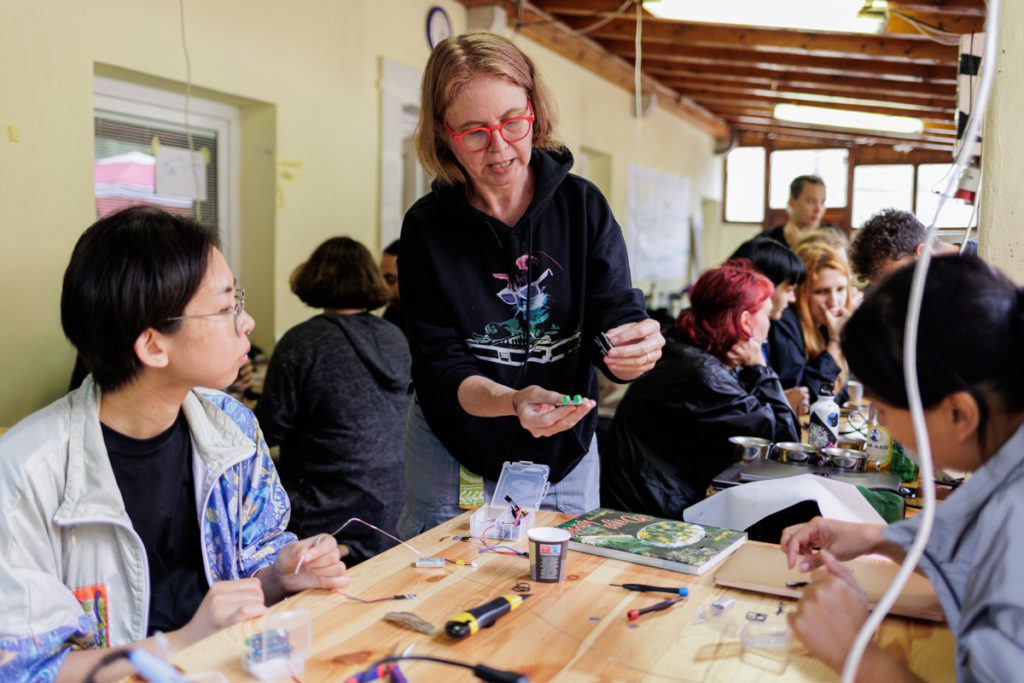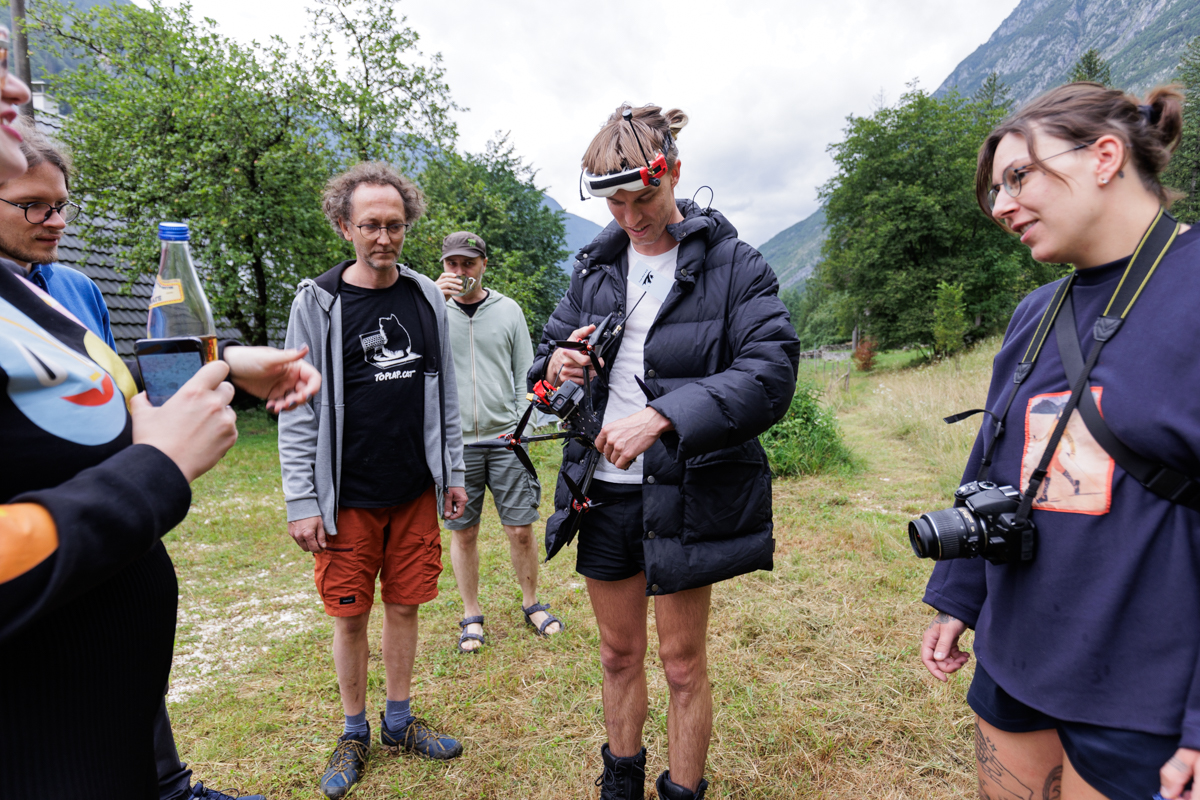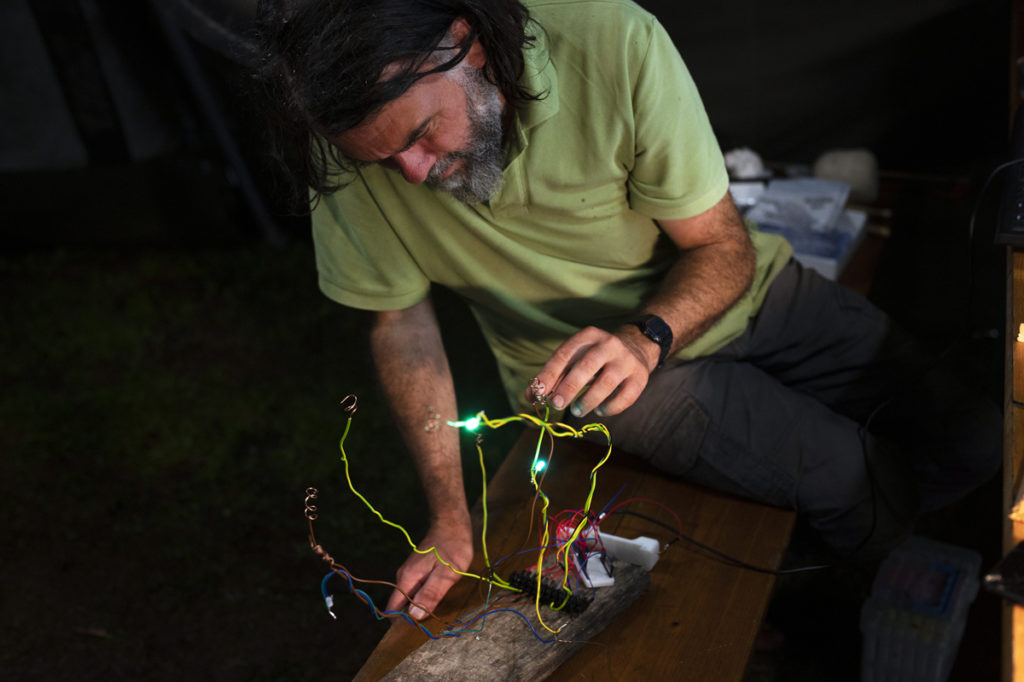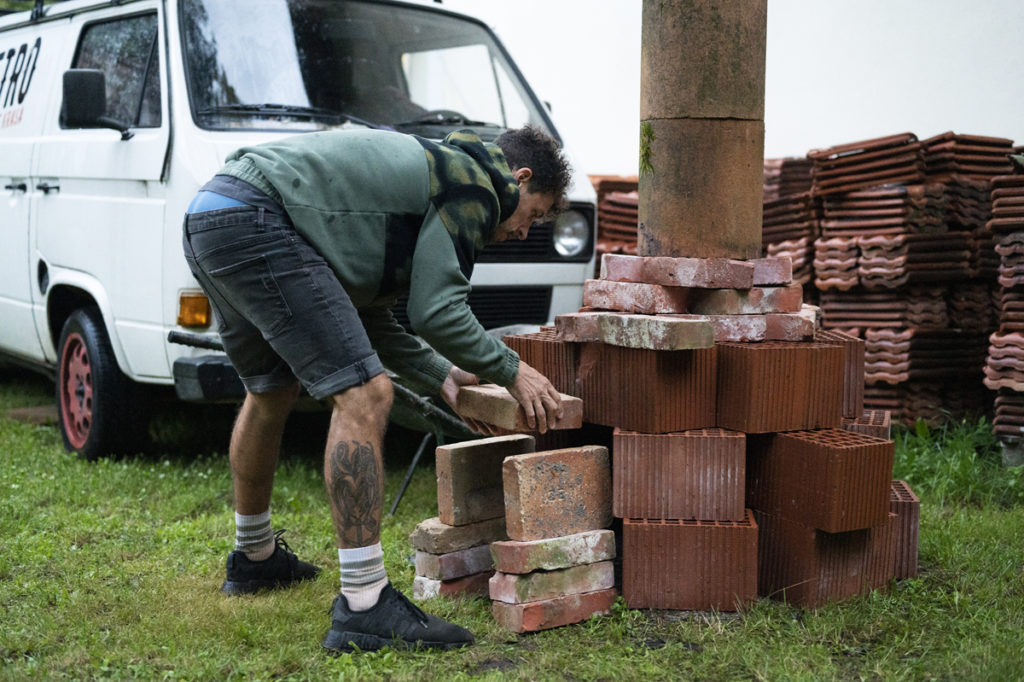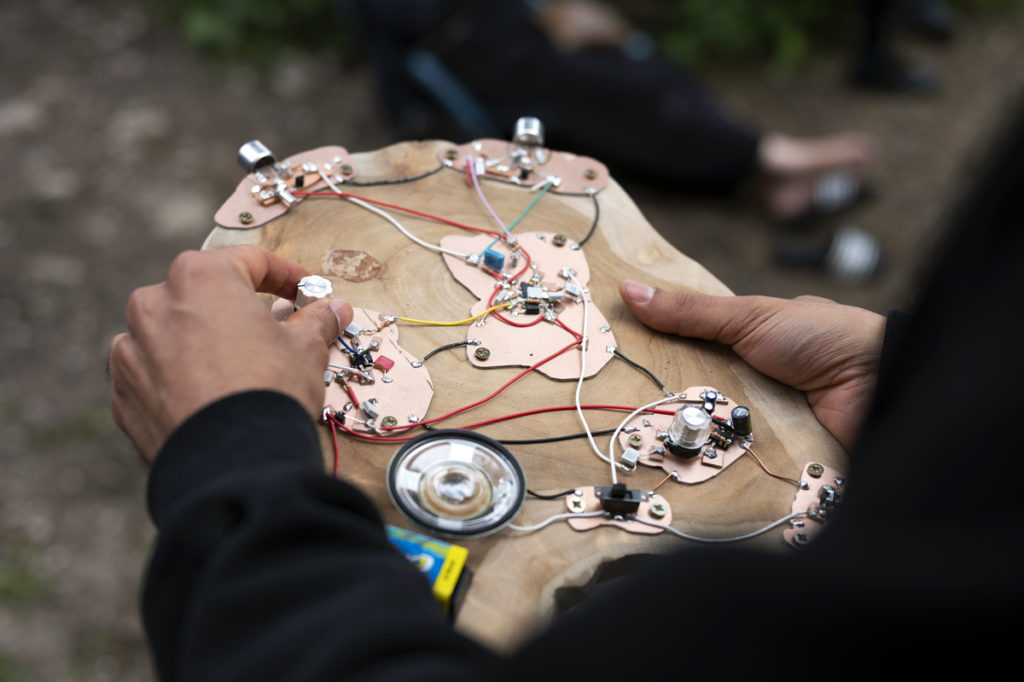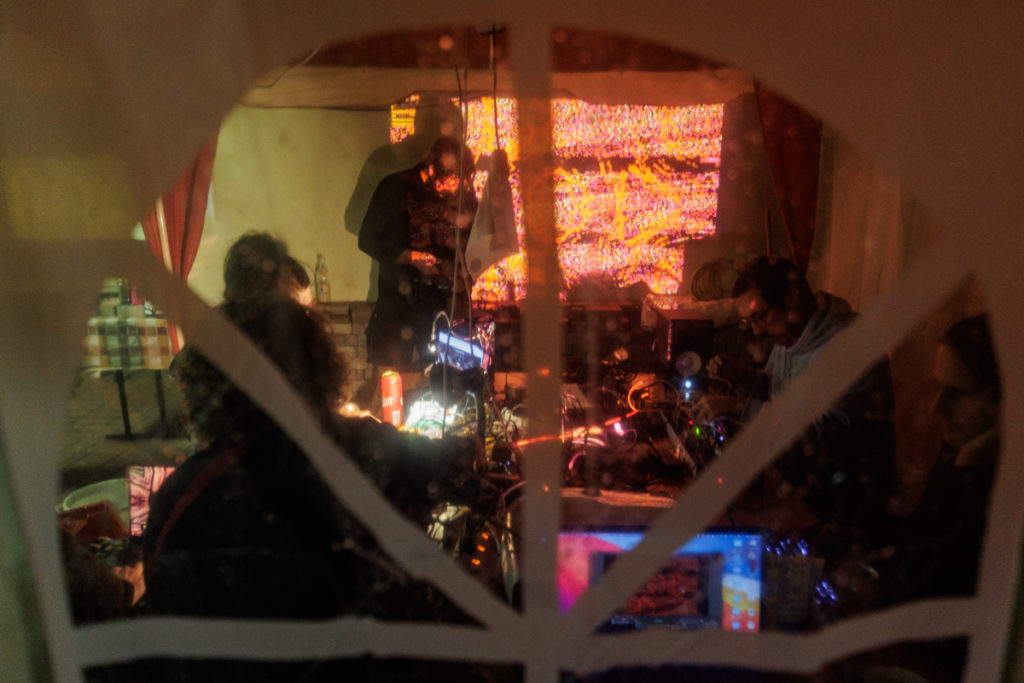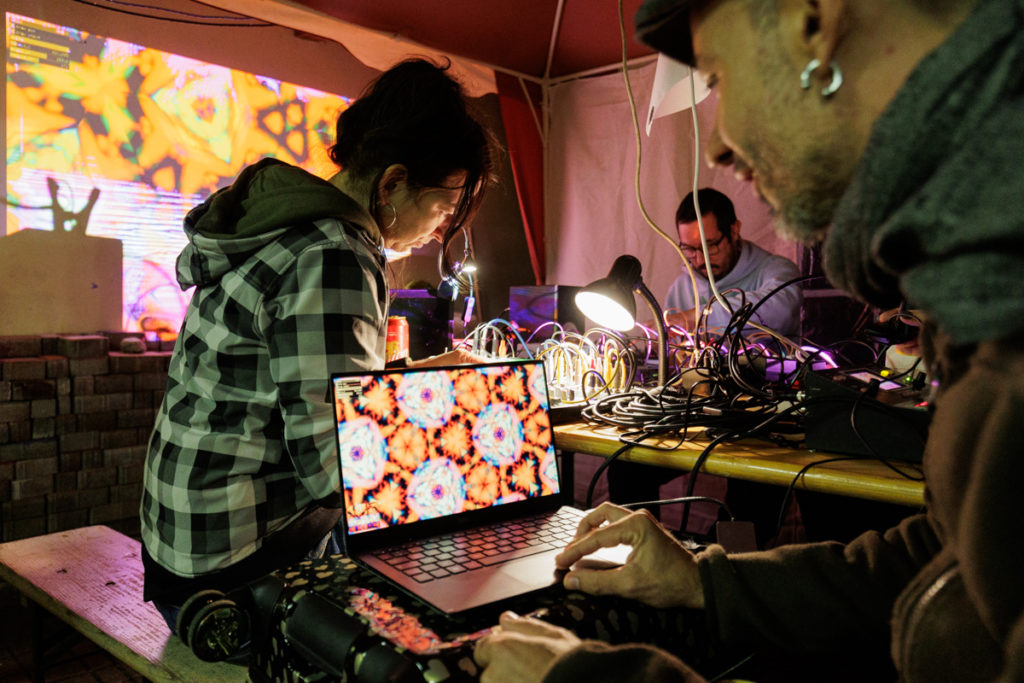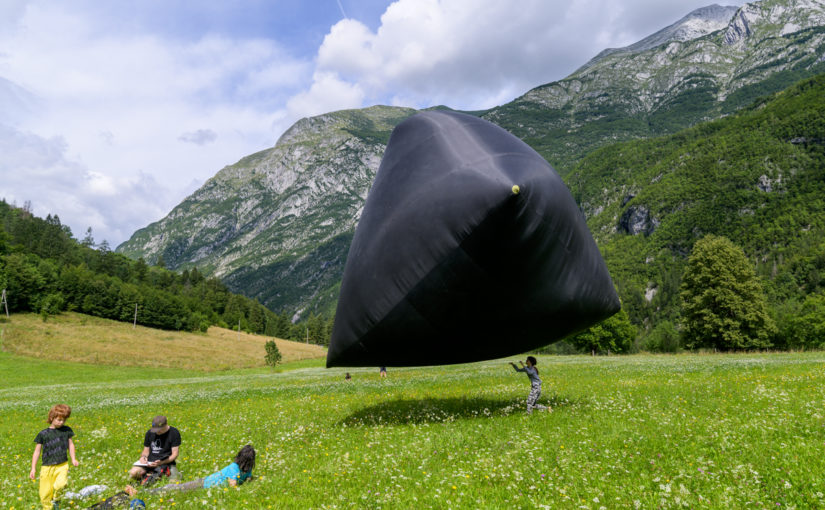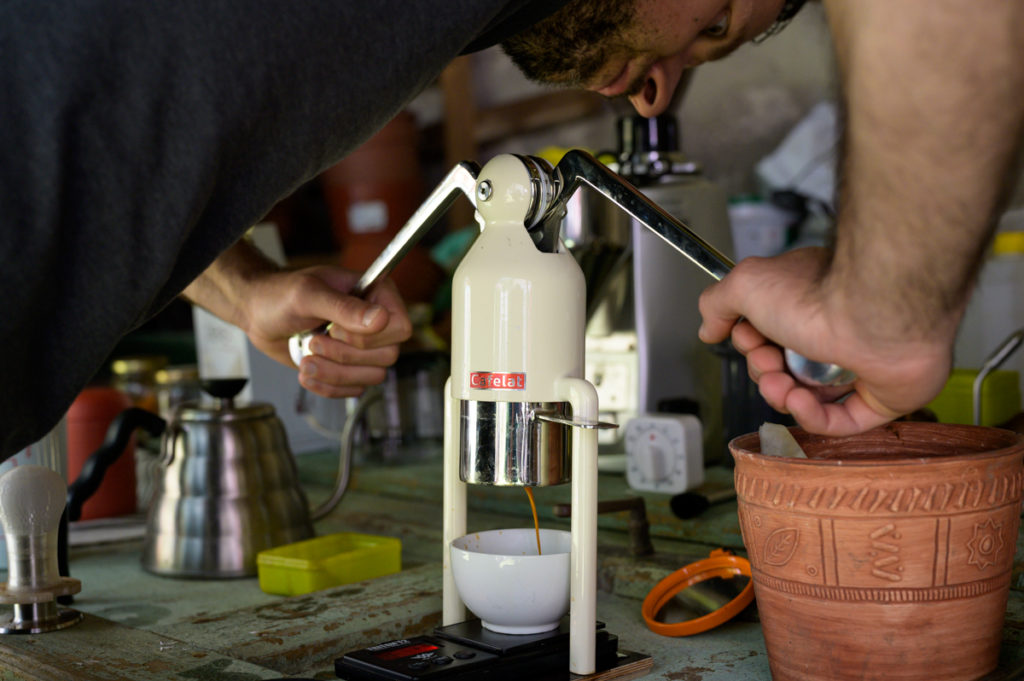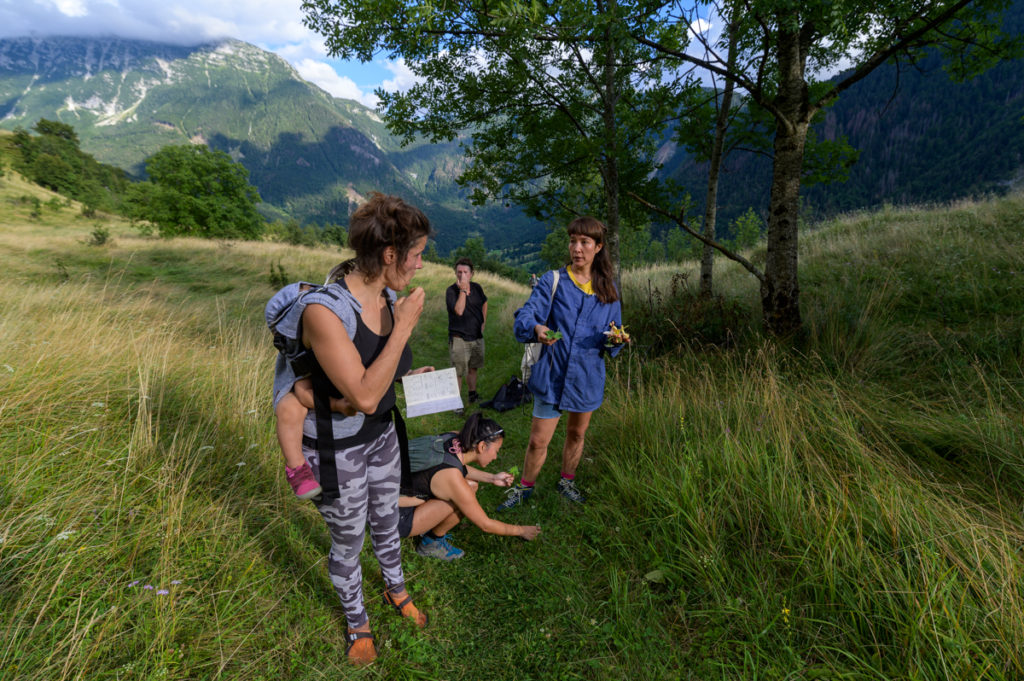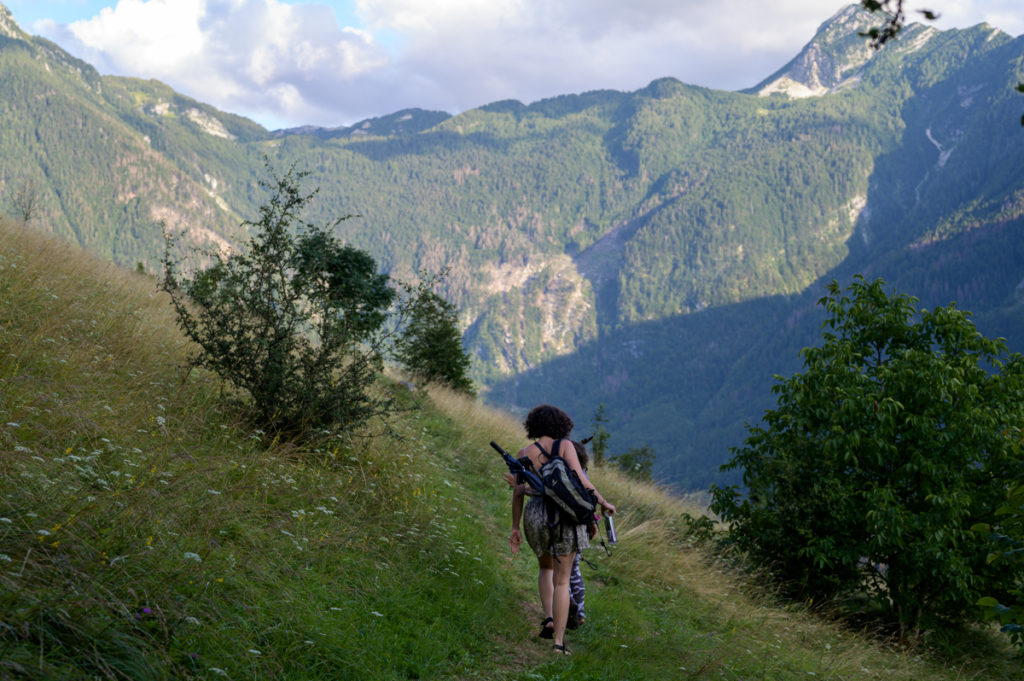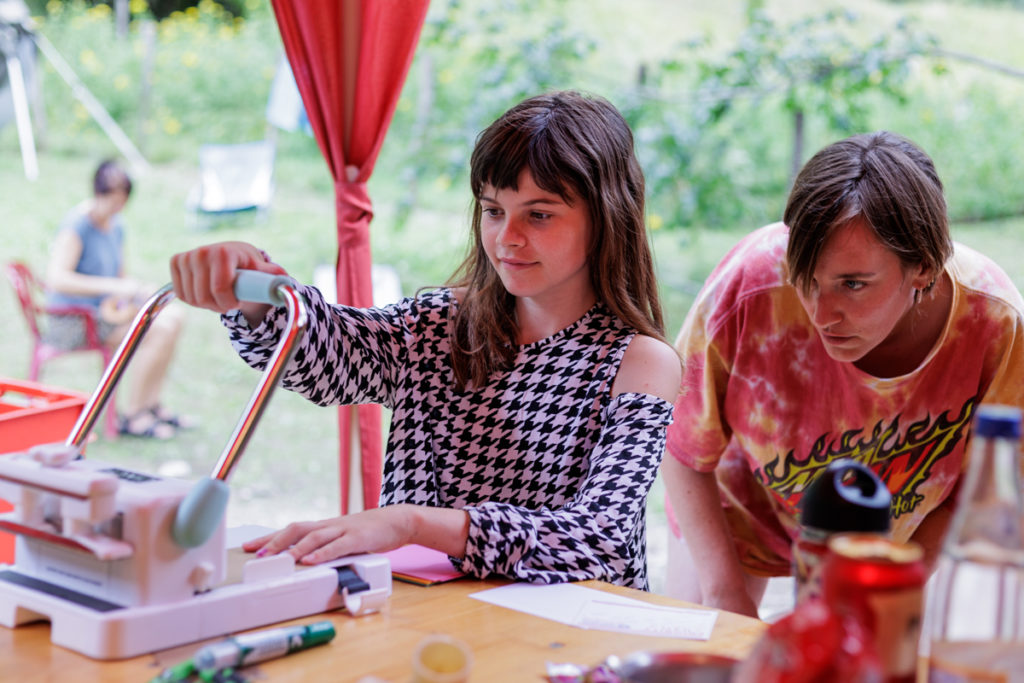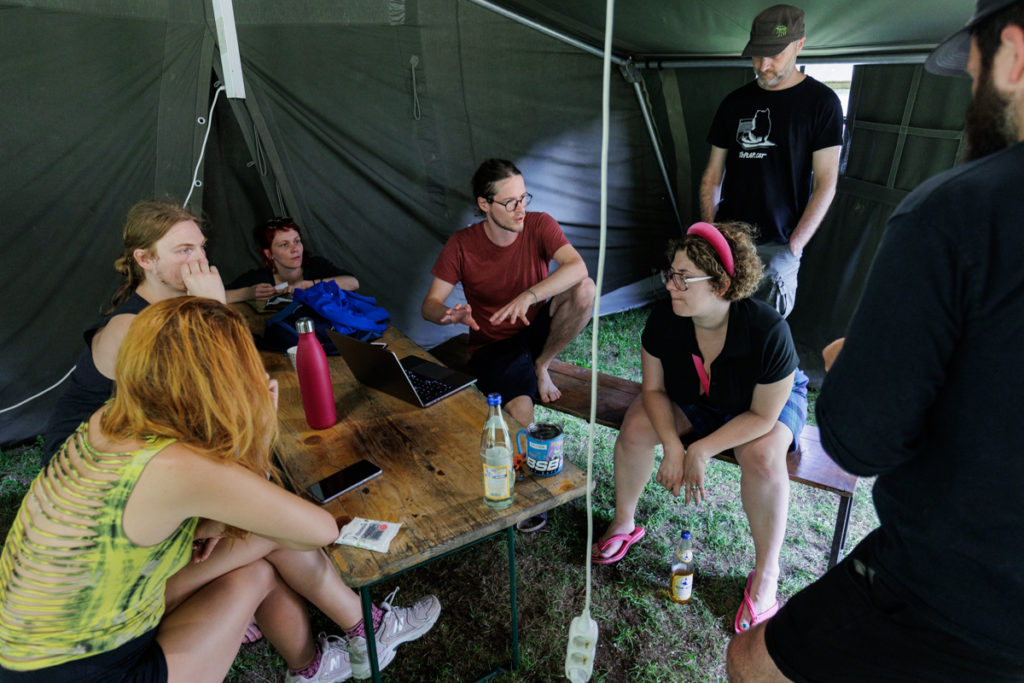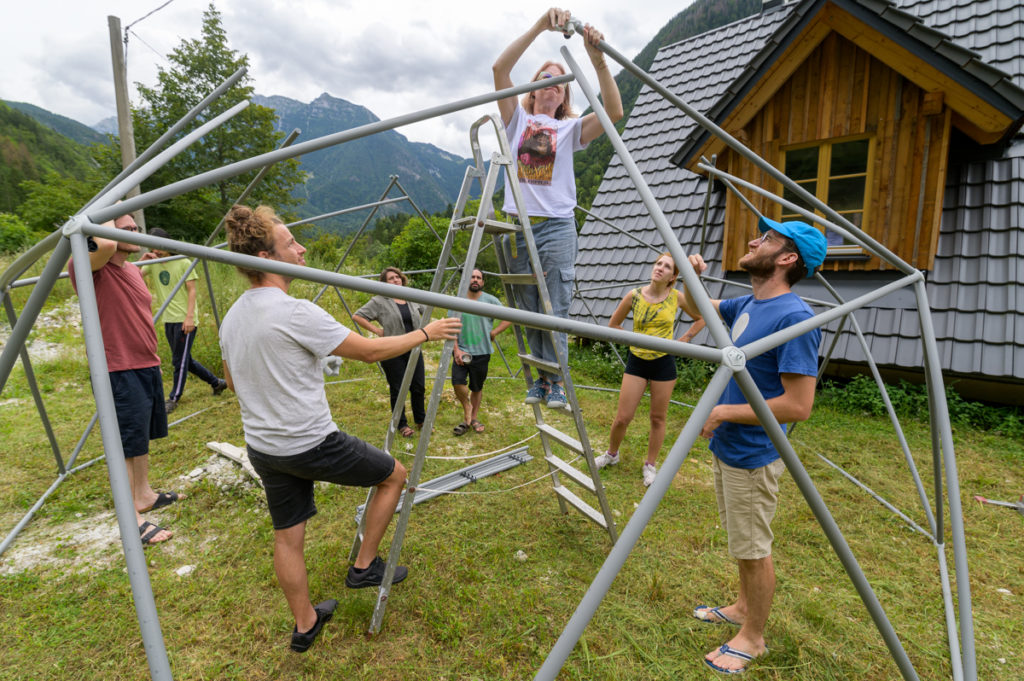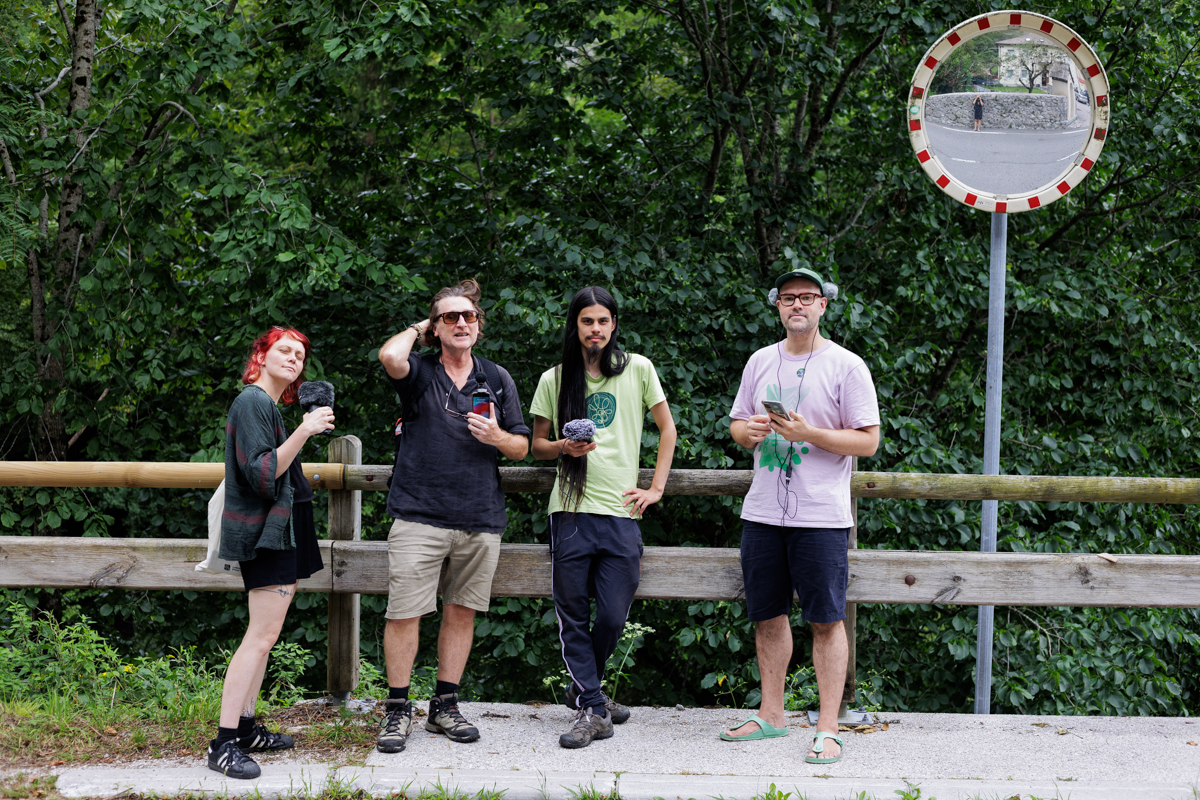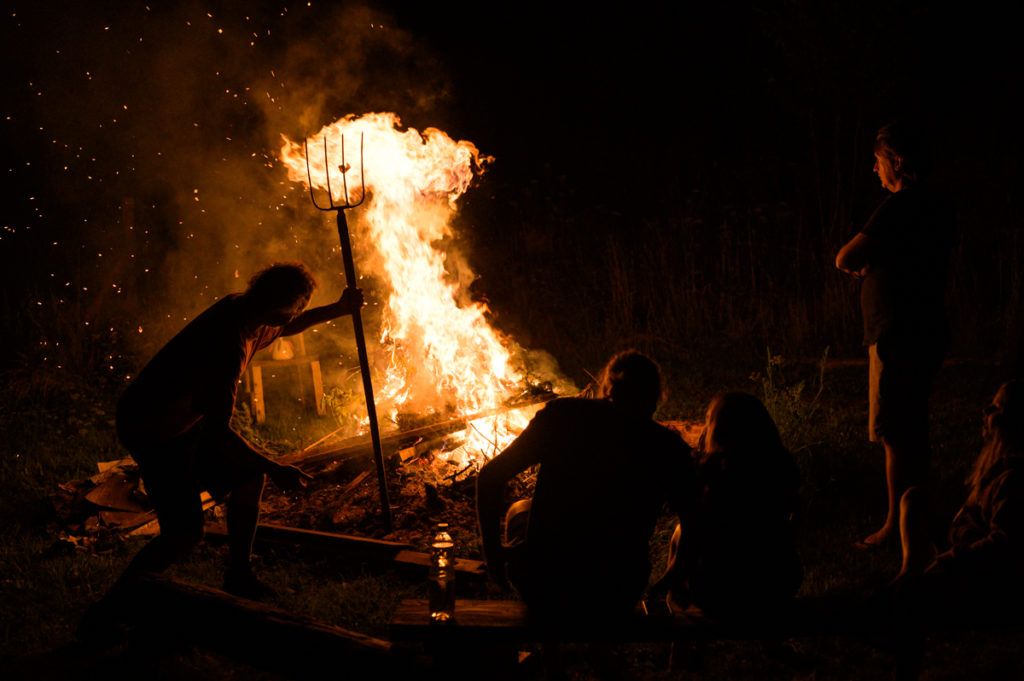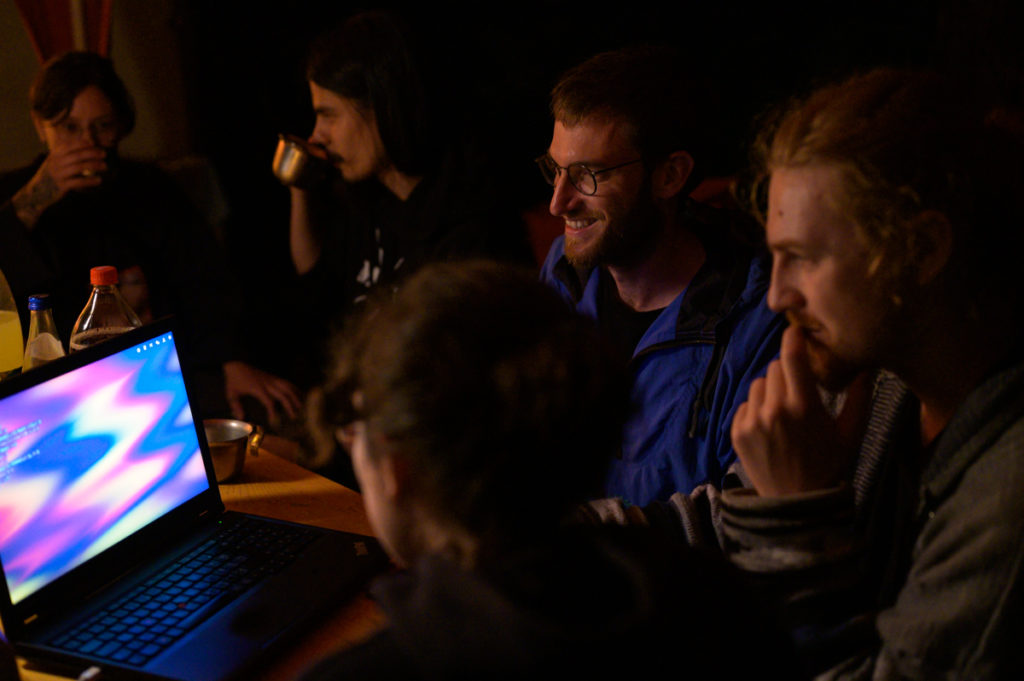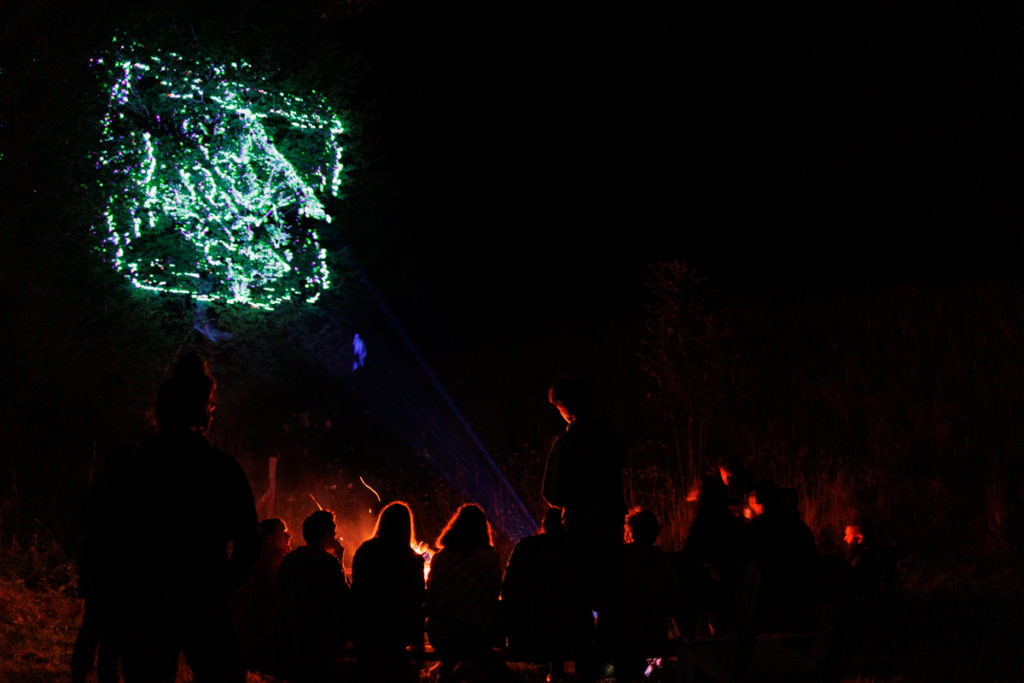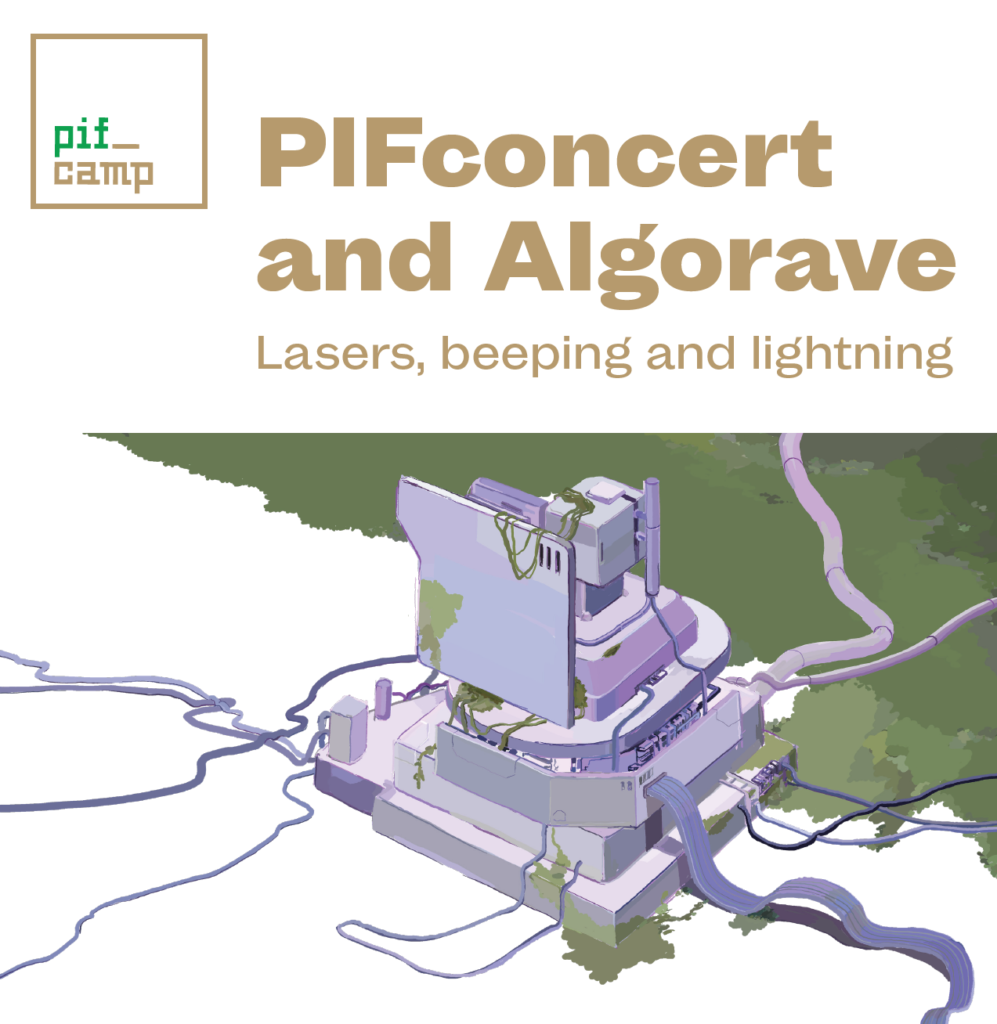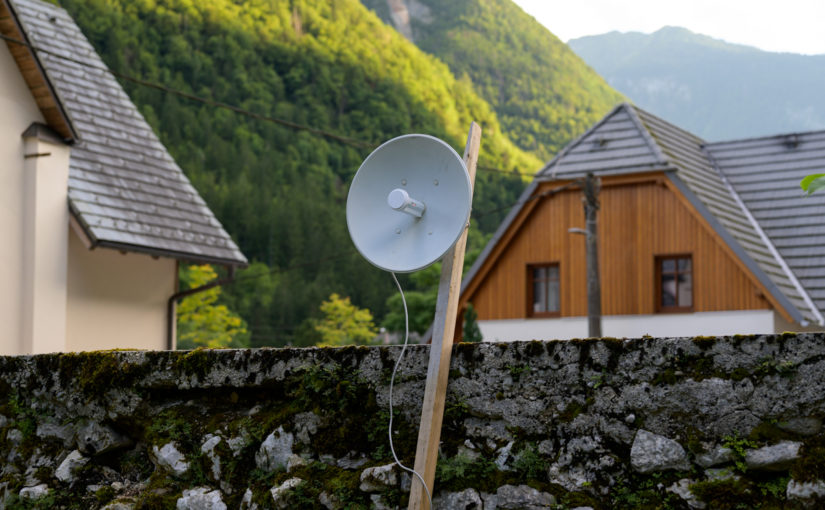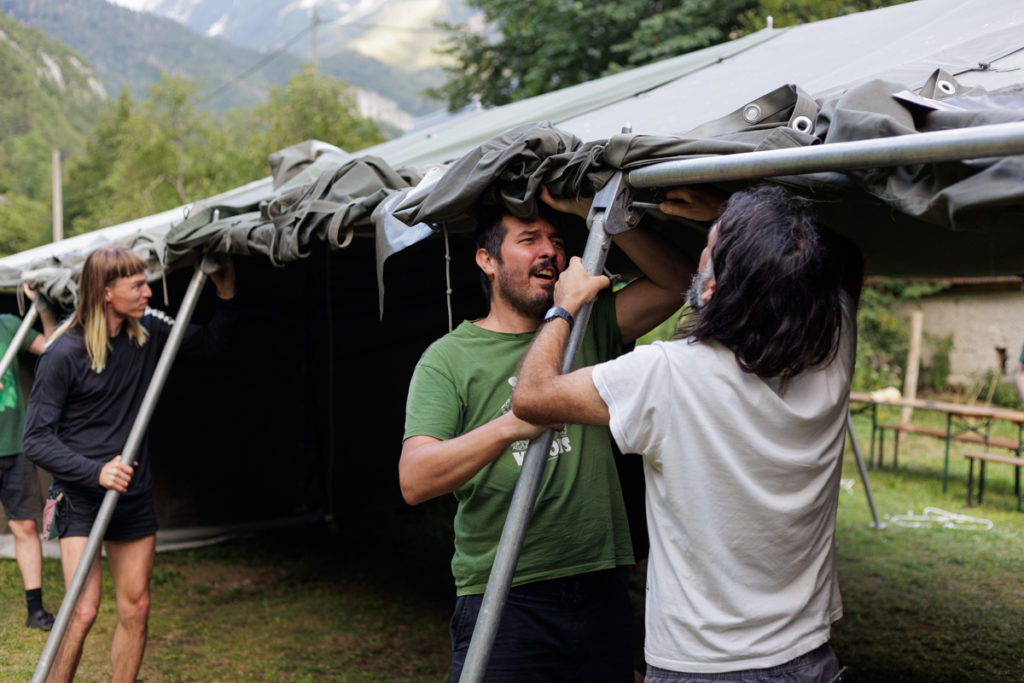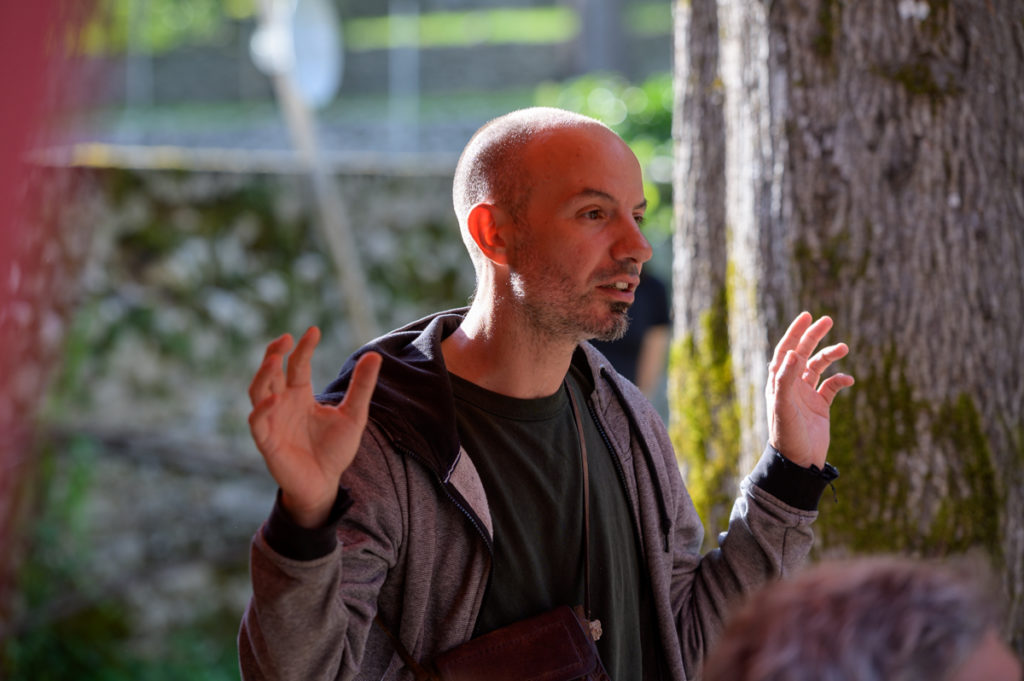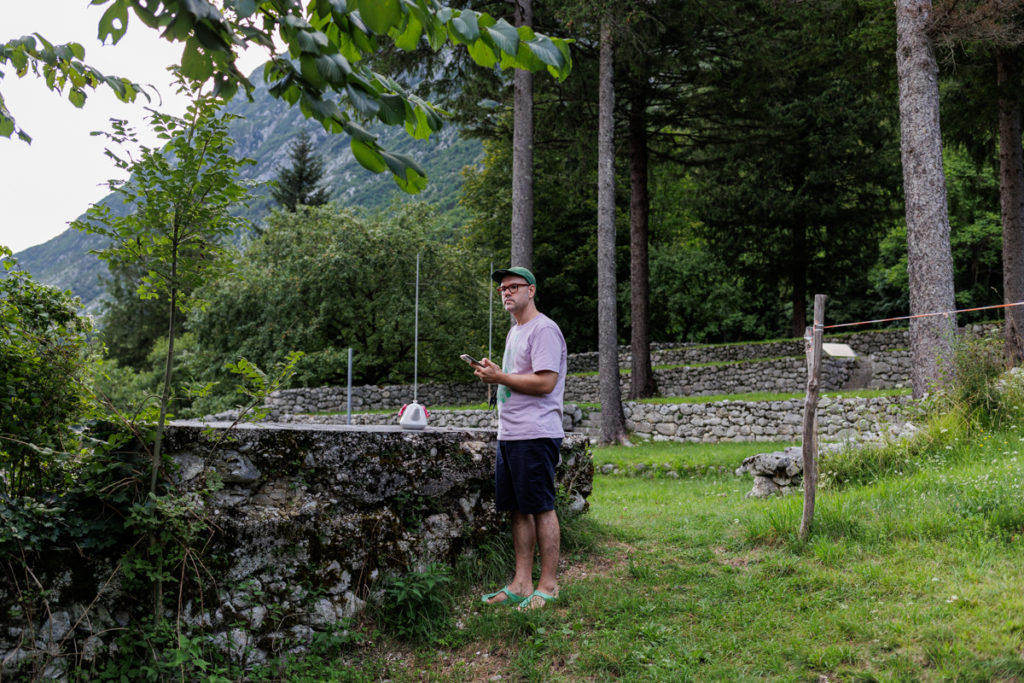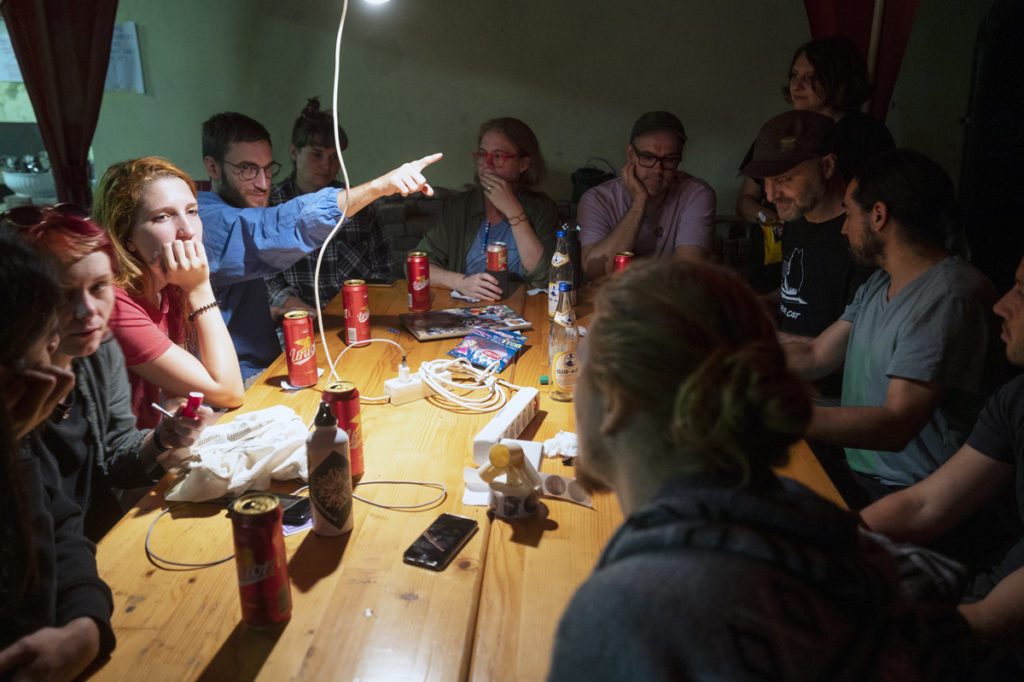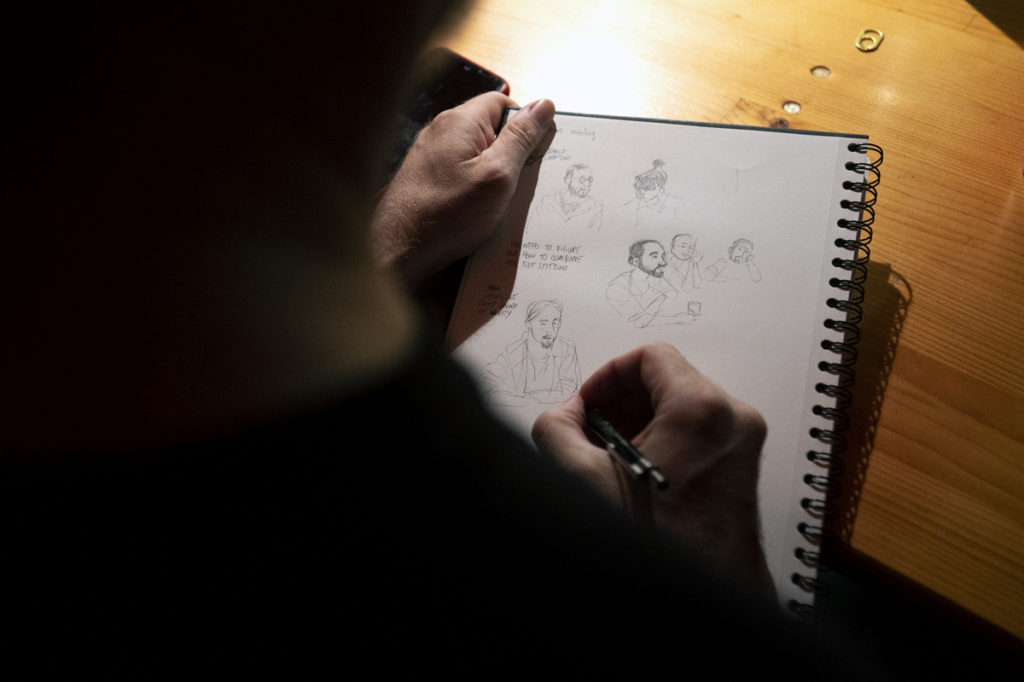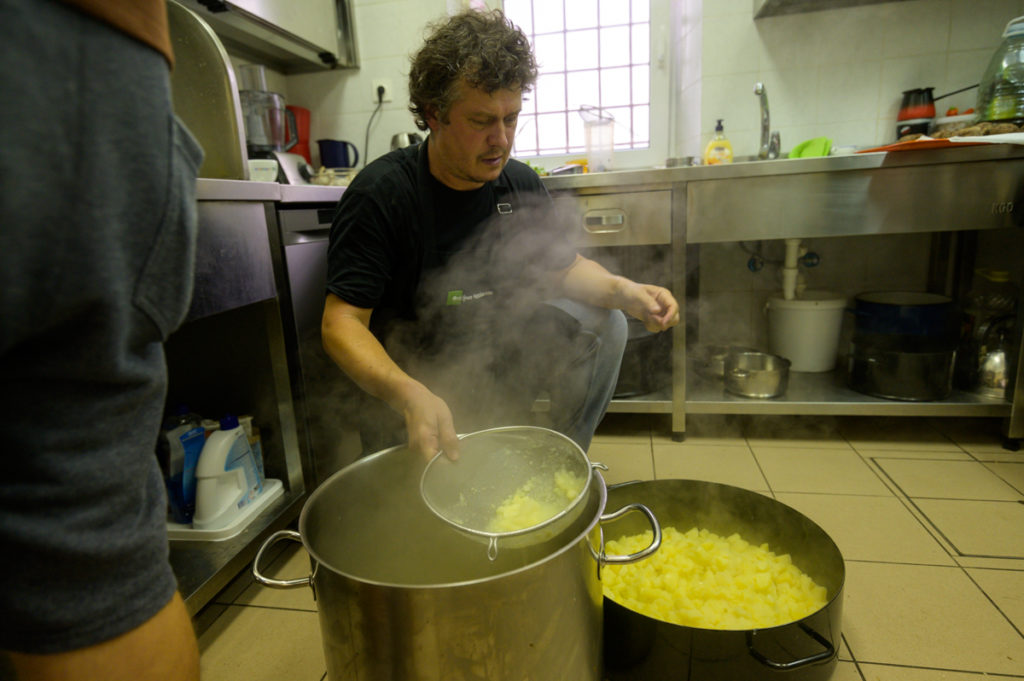Rainy Thursday was followed by a rainy Friday. PIFtopia thankfully avoided the more serious storms, but owing to the extreme conditions in several regions across Slovenia, the decision had to be made to call off the Open Saturday. The wrap-up of PIFcamp was nevertheless breathing down the PIFparticipants’ necks. So, despite the relentless rain, we witnessed the usual Friday levels of diligence.
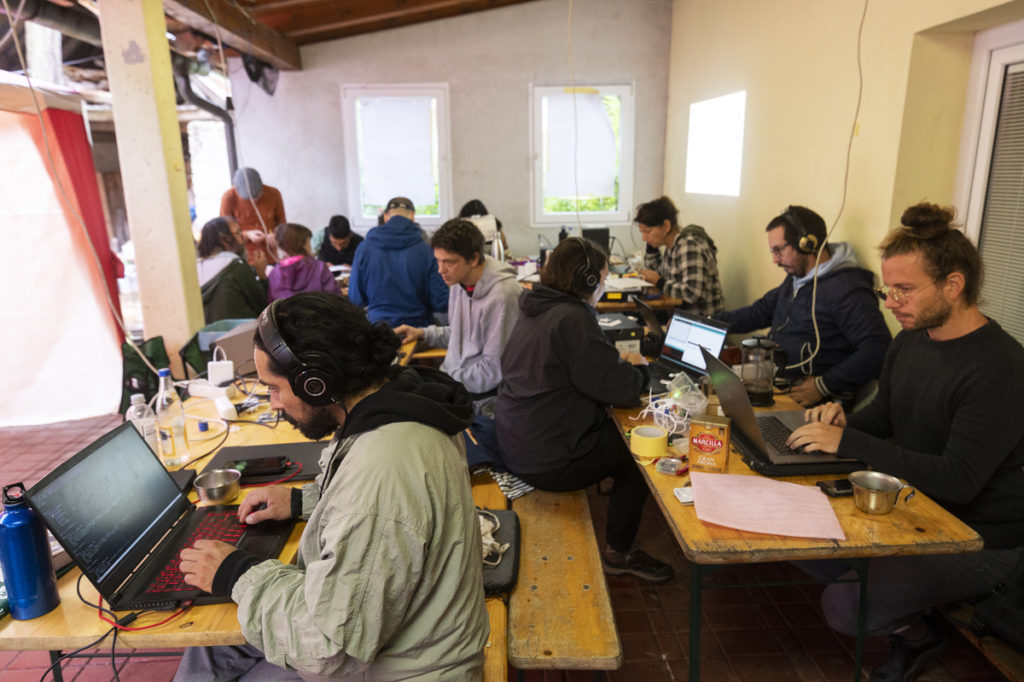
Laurent, whom we have already written about in this year’s PIFlog, decided to start his presentation right after breakfast. He presented his setup, which combines dance and coded music in his performances, to those who hadn’t yet marveled at his (really special!) live coding interface. Free from all PIFproject commitments, he was able to attend workshops, presentations, and jams throughout Friday and Saturday.
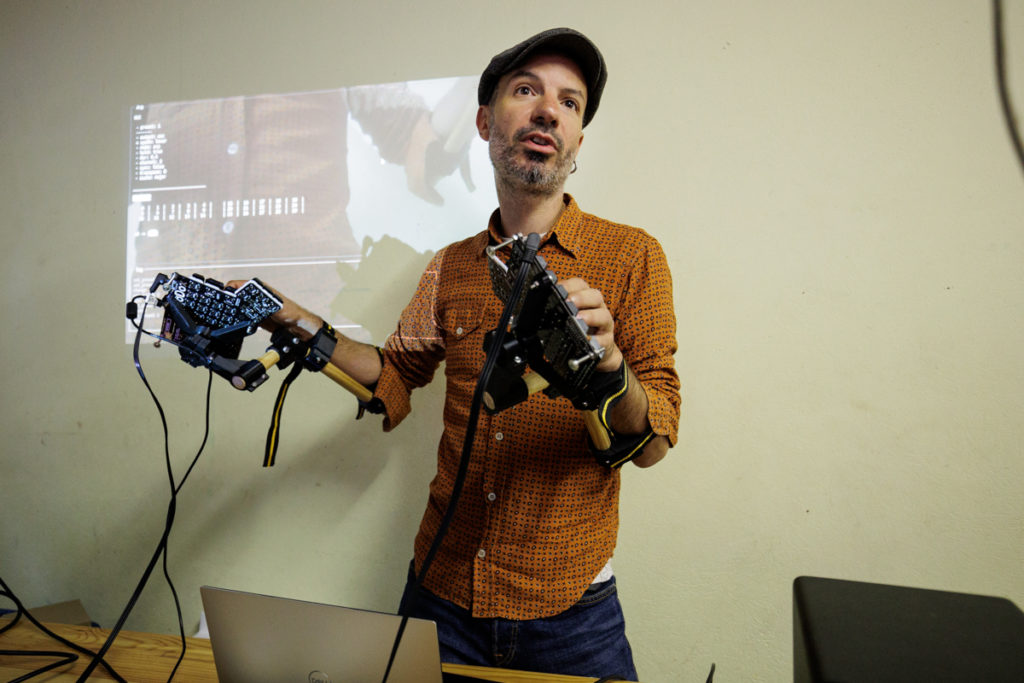
Meanwhile, Maya Minder‘s plans to research and produce a bacterial field guide were interrupted by the rainy weather during the week, so she has arranged a presentation of one of her past projects under the canopy – a workshop on making power cells from microbes, which she is developing and running in collaboration with Miranda Moss. Kraut Source Energy is well documented on the Hackteria wiki, where you can also download the instructions for producing energy from various stinky substances like sauerkraut, urine, or mud.
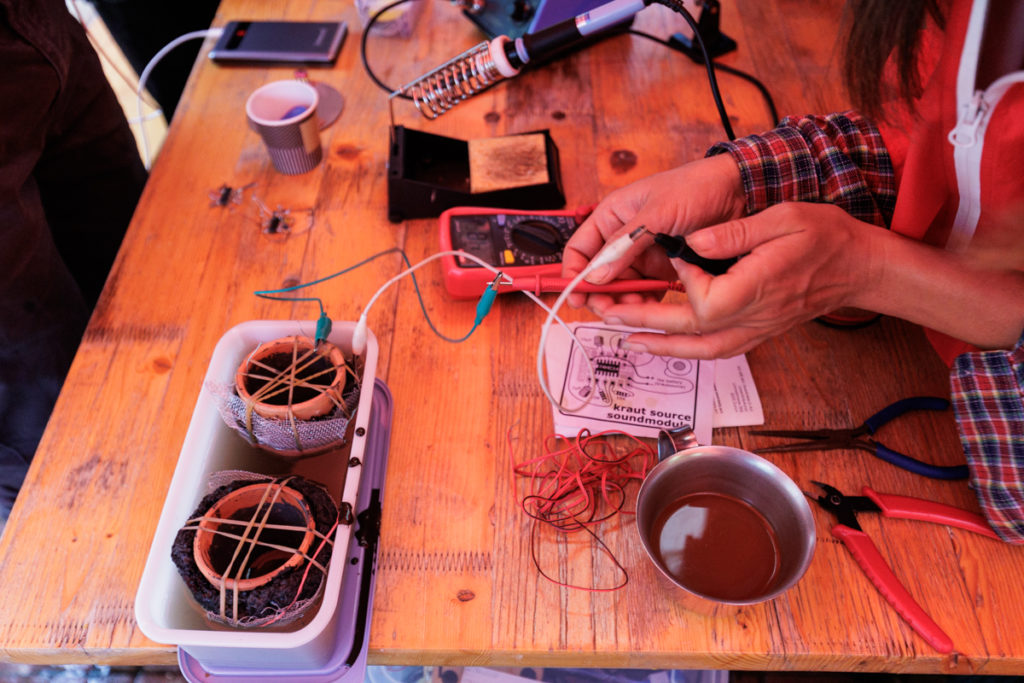
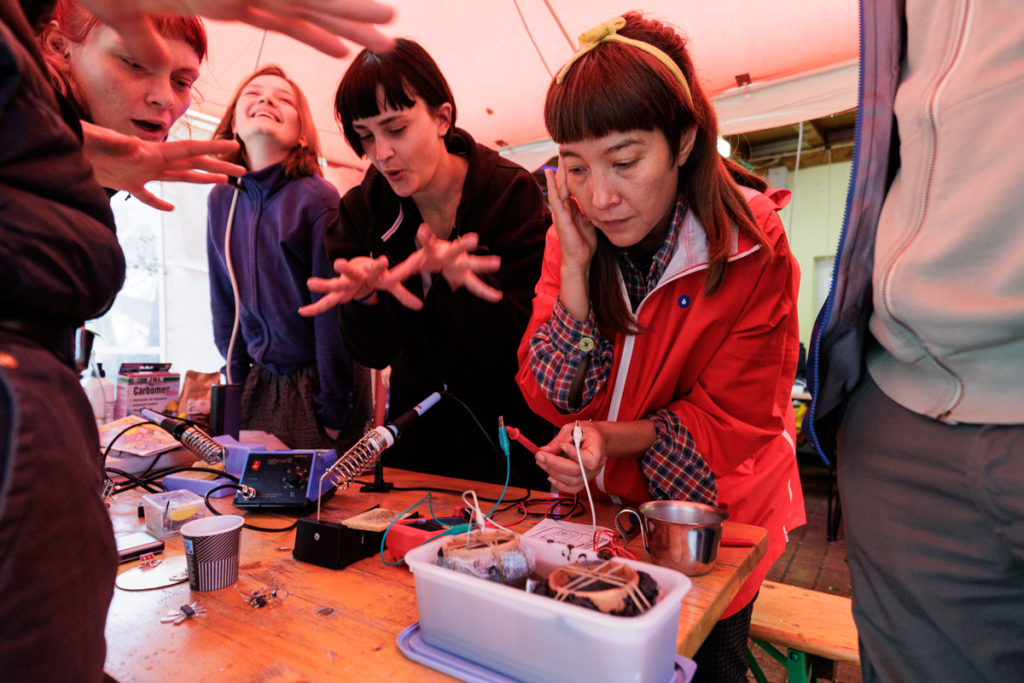
Already before lunch, we noticed certain indications that noise would dominate Friday as far as sound is concerned. Dan Xu invited the PIFlars to build kraakdoos, noise-making experimental instruments developed by Michel Waisvisz in the 1970s at Amsterdam’s STEIM, under the slogan “Let’s make some noizzzeee”.
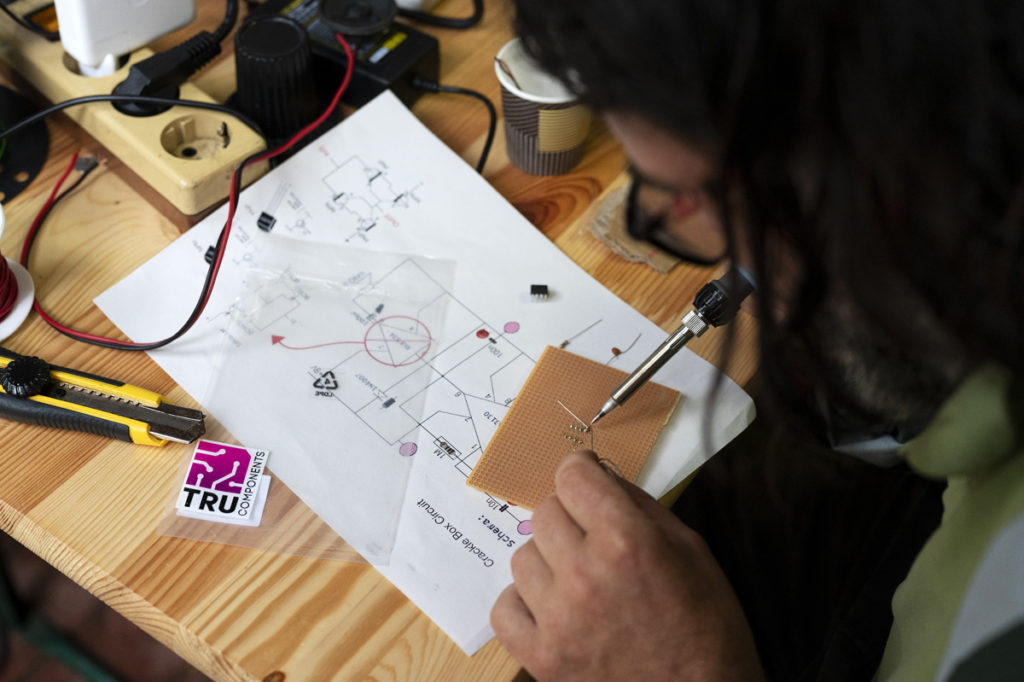
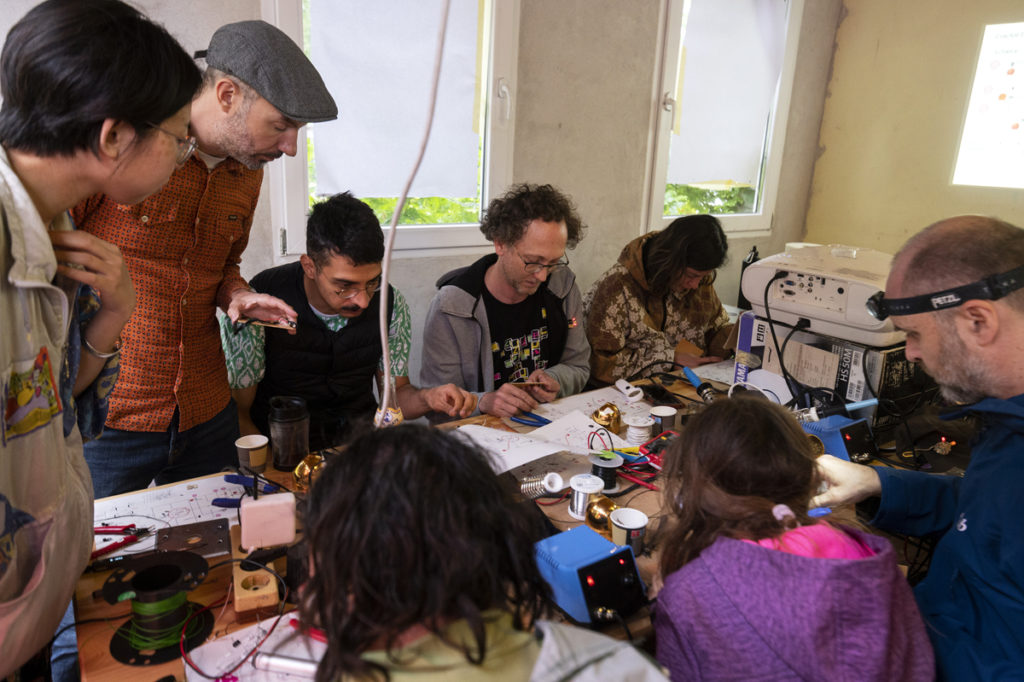
The crackle box, as the name of this simple instrument translates from Dutch, is played simply by touching it, which neatly connects Dana’s workshop with the activity that was (still) going on under the tent in the meantime. Participants in Rob’s workshop continued to build instruments from the Networked Touch series. More on this in the report from Saturday’s events.
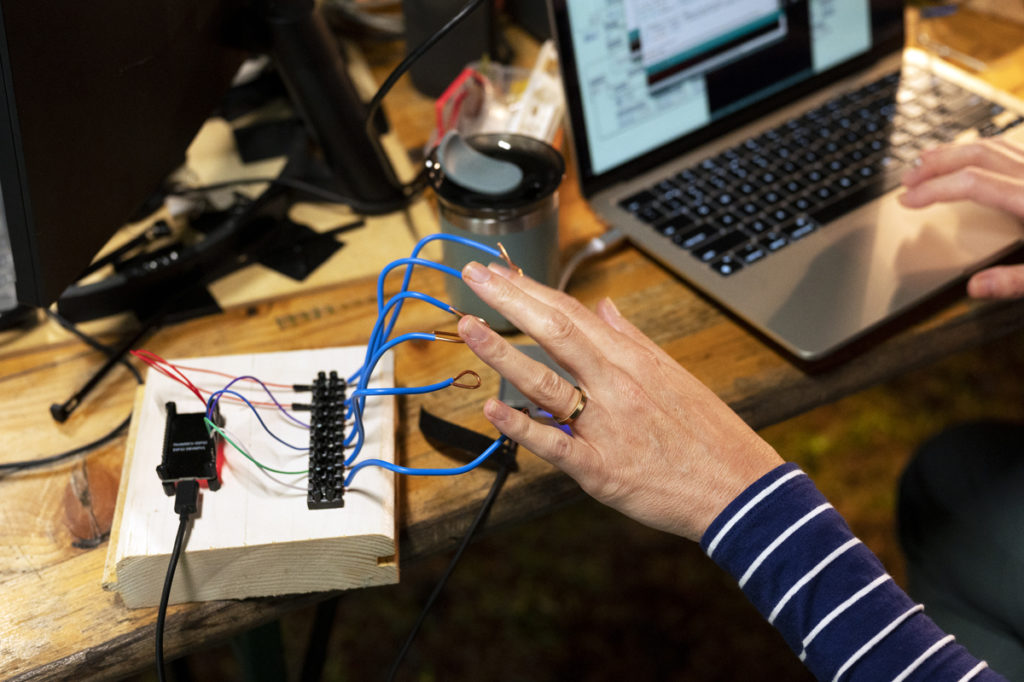
After a spot-on lunch (fish and potato salad), a few of the curious gathered for Nejc‘s presentation on creating animations with artificial intelligence. Nejc presented his practice and shared a number of other interesting facts, such as his fascination with solar punk, while also briefing the audience on his project in progress, a short experimental generative animated film with the working title First We Must Listen to the Trees, in which he explores social situations in relation to the environment and the ecosystem, as well as coexistent and sustainable ways of living.
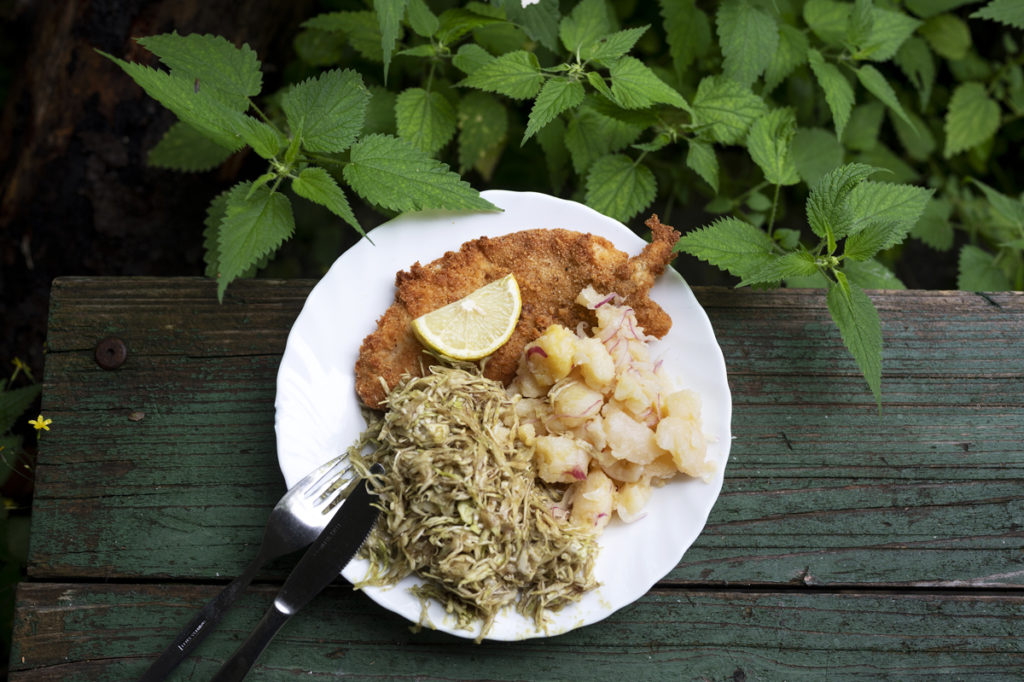
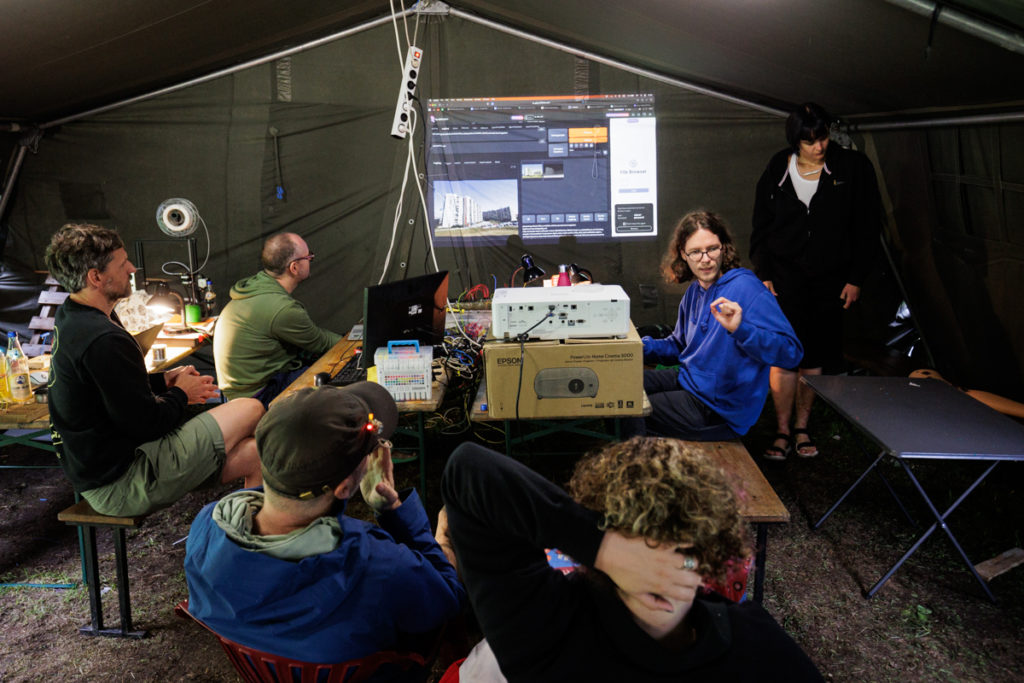
Before it got dark in the PIFcamp, we enjoyed two more artist talks on the terrace: first, the audience was entertained by Jani Pirnat, who is a curator at Ljubljana’s Vžigalica Gallery outside of PIFtopia, and also one of our favourite Slovenian contemporary artists at our week-long gatherings in Soča. Jani presented his two previous PIFprojects, Peasant Resistance and Rock’n’roll. While the former tasted internet fame for a few days, the latter – a cement mixer transformed into a disco ball with a rolling stone inside – only amused PIFlars so far. But judging by the audience’s reaction, it is likely that it will also be presented to an outside public soon.
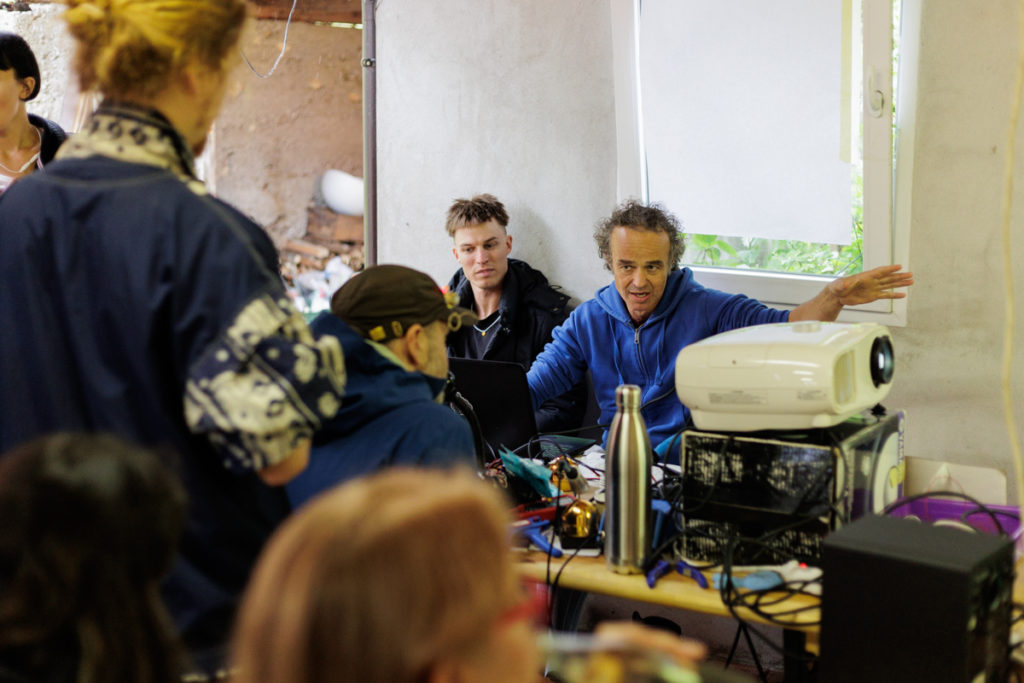
Next, Michael Candy, this year’s PIFresident, presented previous projects and delighted the audience with infectious joy for building robots and stories from previous artistic residencies. We caught a video of Ether Antenna, a work created during a residency at the Robotics Association of Nepal (RAN). This narrative short film, beautifully edited to music by Pauline Anne Strom, is based on Buddhist tales, with robots, of course, performing all parts. Ah, yes, and there’s a PIFlog recommendation, too: if you’re in Ljubljana in September, don’t miss Michael’s installation as part of the autumn extension of the Lighting Guerrilla festival.
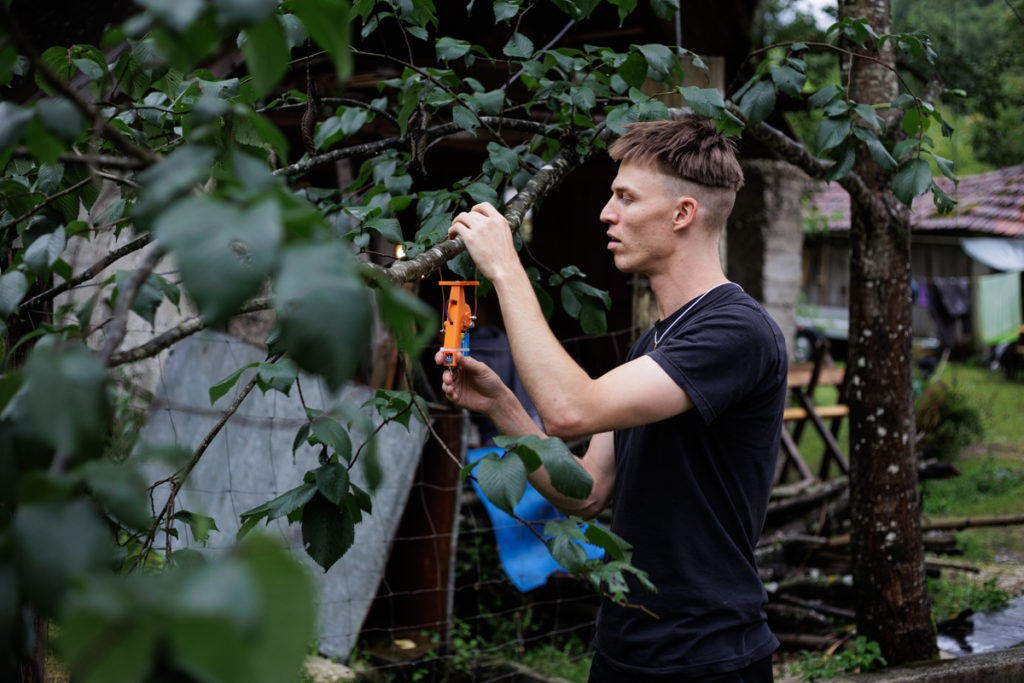
Friday night was spent mostly draining the canopies and tent wings, but of course not without additional soundscapes that complemented and occasionally overpowered the raindrops – from the noise jams to the terrace party, there’s room for everyone at PIFtopia.
